
Theme : TIME { 48 } Seeking the Source { 56 } Age of Consequence { 148 } Carving Traditions 0 03 > 0928 1 $14.95 US $14.95 CAN 2548 98 10 The CURRENT of HAWAI‘I


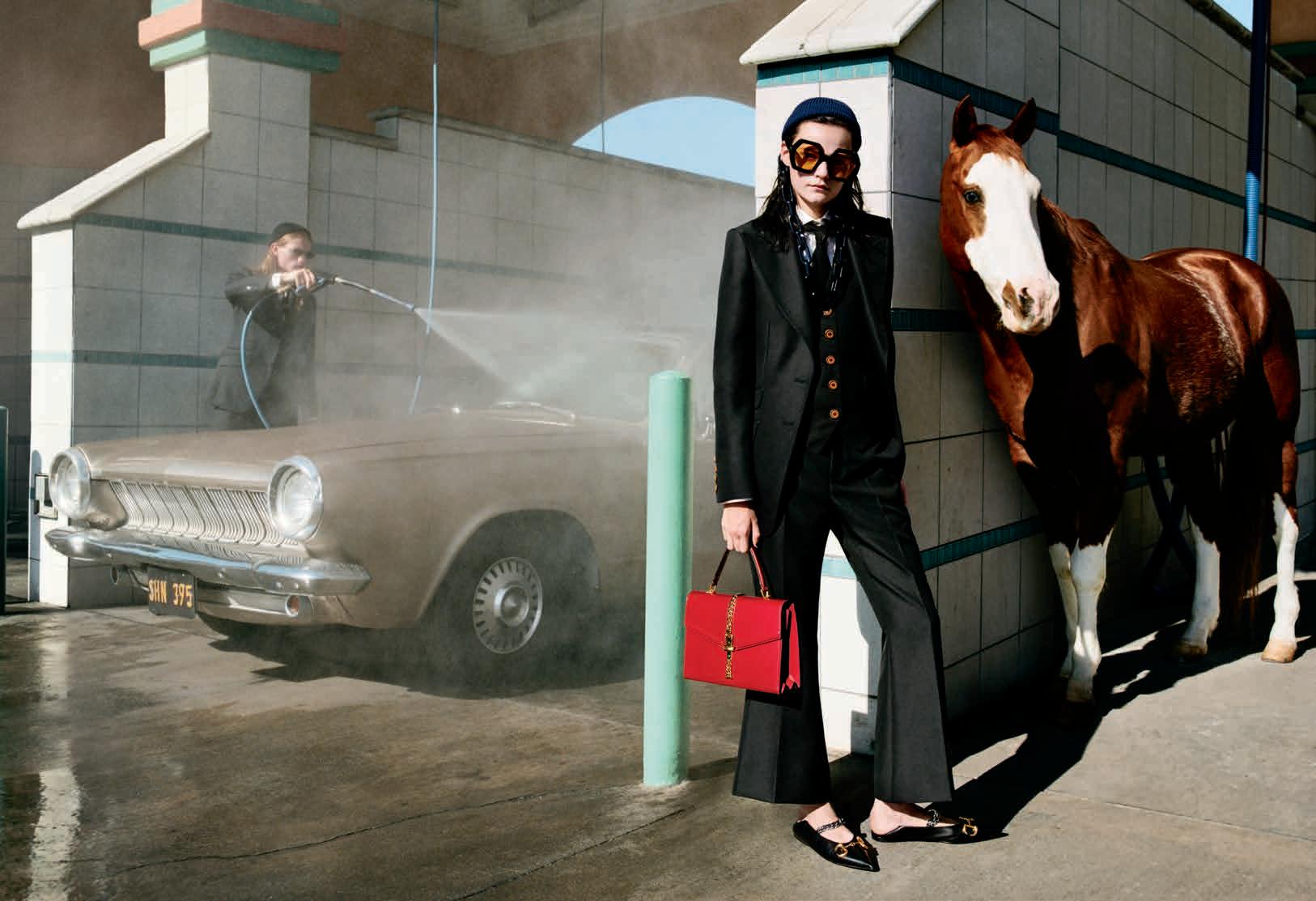



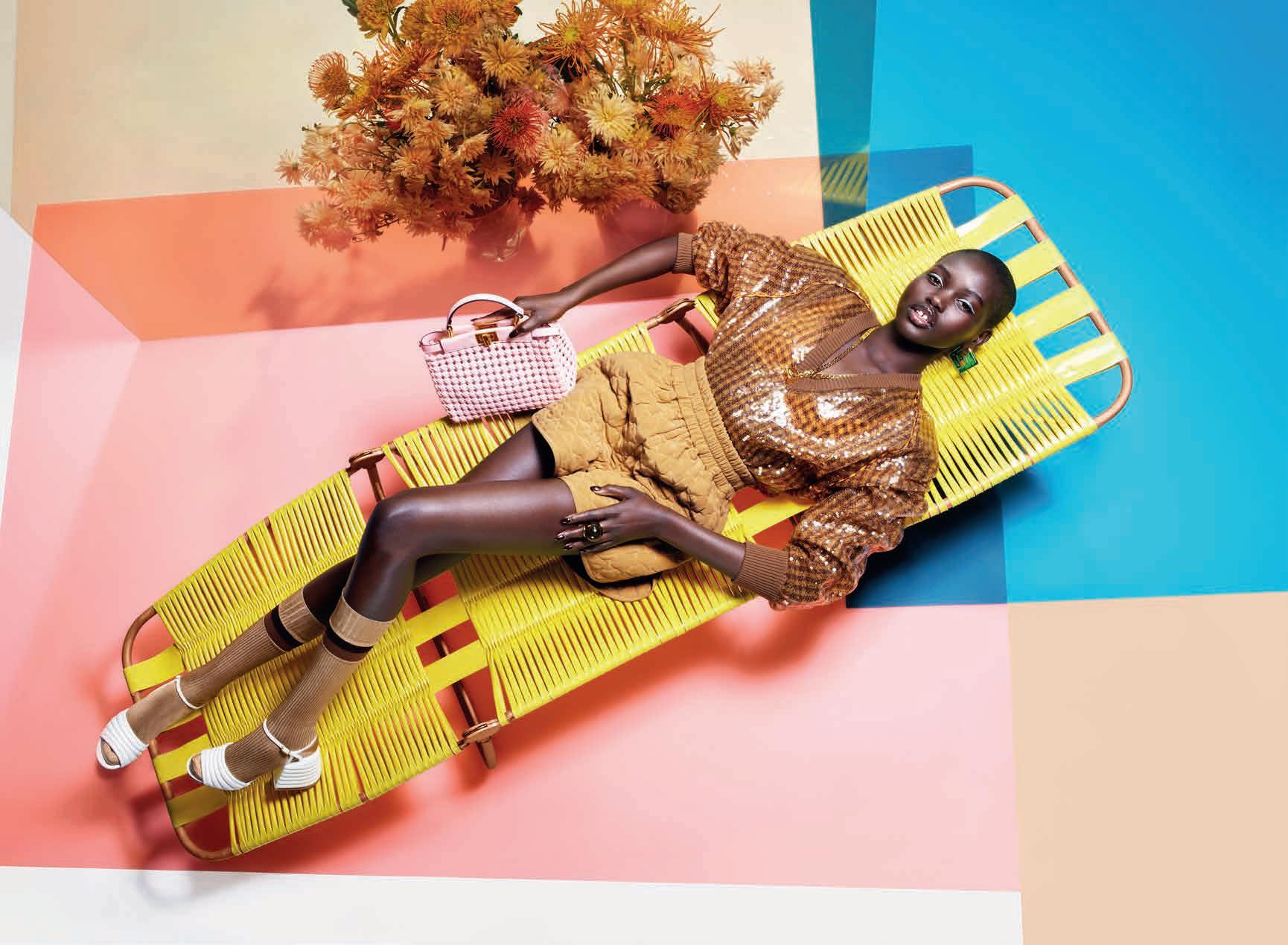

26 | Climate Tradewinds
32 | Sculpture Tom Sewell
44 | Language Island Time
48 | Mo‘okū‘auhau Genealogy A HUI HOU
184 | Procrastination
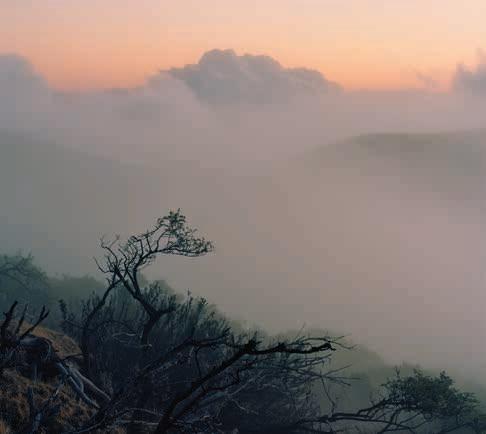
FEATURES
56 | The Plastic Age
Journey to one of the islands’ most polluted beaches with managing editor Lauren McNally. In her piece, she seeks to uncover truths about plastic, a material made to last forever but typically only used for a short period of time.
76 | The Odd Couple
Writer Timothy A. Schuler assumes the role of willing third wheel to explore the love story between best friends Richard Lowe and Bundit Kanisthakhon, two men whose unlikely bond transcends generations.
92 | Aperture Everlasting
Three local arts writers and curators respond to the works of three Hawai‘i-based photographers who capture modern life in oldfashioned analog formats. Kenyatta Kelechi resurrects an early wet-plate photographic process, Nakemiah Williams heals her trauma with cathartic Polaroids, and Mark Kushimi presents dreamy meditations on life below and above the ocean surface.
TABLE OF CONTENTS | FEATURES | 16 TIME Letters Contributors FLUX PHILES
Image by Brenden George Ko

TABLE OF CONTENTS | DEPARTMENTS |
113
SPECIAL SECTION
TEN-YEAR ANNIVERSARY
In these essays, Flux writers grapple with and reflect on age-old topics that affect the daily fabric of Hawai‘i, from land conservation to the public education system.

Lisa Yamada-Son, founder and former editor-inchief of Flux Hawaii, guest edits this special section, complete with reports from staff writers and regular contributors. Image by John Hook.

BRANCH AND BLOSSOM
The Legend of ‘Ōhi‘a & Lehua
Limited Release in collaboration with Hawaiian designer Brandy Serikaku.

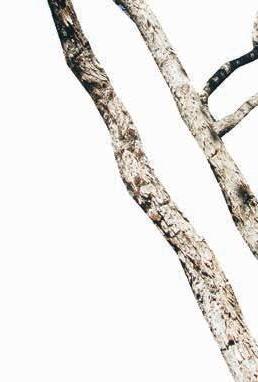



 Visit us at Whalers Village on Maui and at Hilton Hawaiian Village on O‘ahu
Visit us at Whalers Village on Maui and at Hilton Hawaiian Village on O‘ahu

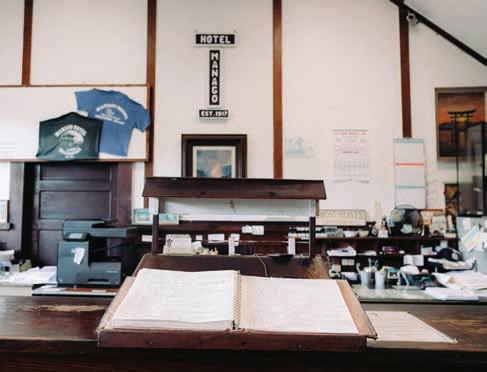
164 EXPLORE 166
176
146 LIVING WELL 148
156
TABLE OF CONTENTS | DEPARTMENTS |
| Kona Manago Hotel
| Paris Le
Marais
| Surfing The Stones
| Preserves Ohana Jam
Image by Michelle Mishina
Image by Michelle Mishina
 WAIKELE
HYATT REGENCY WAIKIKI
ALA MOANA CENTER
KOKO MARINA
WINDWARD MALL
WAIKELE
HYATT REGENCY WAIKIKI
ALA MOANA CENTER
KOKO MARINA
WINDWARD MALL
LocalMotion com H A W AI
LAHAINA GATEWAY
FLUX TV
Modern Age
Though laborious, wet-plate photography remains Kenyatta Kelechi’s medium of choice. “I think people are interested in it because it takes you out of this moment in time. It puts you somewhere ambiguous,” says Kelechi, one of the only Hawai‘ibased artists utilizing the method. His photographs of Hawai‘i natives and locals also work to subvert the medium’s problematic history.


On the Cover
An oceanscape by photographer Mark Kushimi is featured on the cover of the Time Issue. This long-exposure image is part of a larger series by the photographer, “Forever Drowning,” capturing Hawai‘i’s surf breaks at sunset. Kushimi’s formal approach to this subject matter is contextualized by writer and artist Noe Tanigawa in the photo feature, “Aperture Everlasting,” on page 106.
Stay current on arts and culture with us at:
fluxhawaii.com /fluxhawaii @fluxhawaii
@fluxhawaii
TABLE
| FLUX TV |
OF CONTENTS



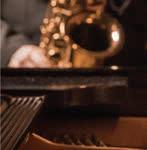













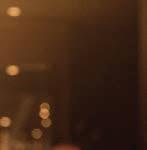

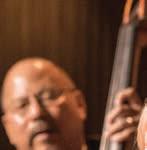

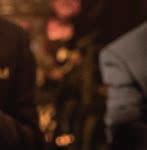



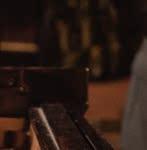

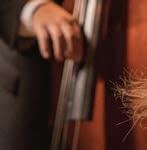









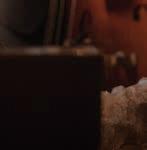





























TREBLE AWAITS... Halekulani’s destination for live music, late night libations, designer cocktails and fine foods. COMPLIMENTARY PARKING 8 55 – 738–4966 2199 Kalia Road, Honolulu Halekulani.com
Remember where you started…
Ten years ago, a recent college graduate named Lisa Yamada handed me a flyer outside of Aloha Tower. The flyer read “FLUX Hawaii Coming Soon.” She introduced herself to me and explained that she was starting her own local magazine, uninterested in joining any existing publishing houses or newspapers. Her hungry ambition reminded me of New Yorkers like myself, and so I volunteered to sell ads for her. Soon enough, Lisa and I became business partners, since my own newly formed brand, NMG Network (Nella Media Group, at the time), was in need of editorial direction for its stories of Hawai‘i.
Together, we hoped to create a dynamic vision for Flux and hoped to amplify modern and local voices in Hawai‘i on a global scale. There are art, culture, fashion, and social scenes here that are less seen by the rest of the world. Through our stories, we wanted to give visibility to local people and foster learning.
I’m honored to say the Flux brand continues to accomplish its vision. It has evolved from a beautiful print magazine to a multimedia platform also featuring breathtaking documentary videos, informative social media content, and global events. Lisa has moved on from NMG to build her family, but her vision and voice will always remain with the brand.
In this period of reflection, I am proud that while we’ve gained new channels and formats, our storytelling is the same. Flux is a brand that embraces the tides of change, but it will always dive into the vast ocean that is Hawai‘i’s voice.
Stay humble and always move forward,
Jason Cutinella CEO, PUBLISHER @jcut @nmgnetwork
PUBLISHER’S LETTER | TEN-YEAR ANNIVERSARY |

702 SOUTH BERETANIA STREET, HONOLULU, HI 808.543.5388 | CSWOANDSONS.COM
EDITOR’S LETTER
Hours structure our days. Days become our months. Months congeal into our years.
In life, this constant churn of time is inevitable, though it does not always move at the same clip. There is an elasticity that feels unique to time’s passage, in how it can crunch forward heavyfooted or speed by in a blur. What we do in this lair of time ultimately matures as meaning about our priorities, how we square away our worlds, who we are. As Annie Dillard wrote, with alarming simplicity: “How we spend our days is, of course, how we spend our lives.”
The state a reader is in when they happen upon this magazine, whether in a frenzied frame of mind (“Time is of the essence!” the clock’s hand screams) or a mode of relaxation (“Oh, you have all the time in the world,” it coos), is unknowable for us, the crew of editors, writers, photographers, and designers who put each issue together while feeling the anxiety-inducing press of time as we tick closer to strict deadlines. But our underlining approach is always the same: not to waste a minute of anyone’s efforts. Time is a precious commodity (perhaps the most precious) and we’re well aware we must honor a reader’s rapt and warm attention with pages that aim to inform, challenge, and touch you.
For storytellers, the trappings of time have their benefits. Time can clarify what needs to be told and how to tell it. A writer who has only seven pages or seven days to realize an idea will negotiate these constraints with their narratives. One of the ways this expresses itself is in the scaffolding of the story. I’m often struck by how the structure of a piece of writing can also inform its content, its tenor and tone; how it can add a surprising texture to its subject. Writer Timothy A. Schuler’s feature on a platonic, generation-spanning romance, on page 76, is strung together as if told in bursts of consciousness, holding a mirror to how memory can play out when looking back on a life. Managing editor Lauren McNally holds a microscope to the millions of pieces of plastic that wash up on our shores, on page 56, oscillating between research on the Great Pacific Garbage Patch and her personal trek to Hawai‘i Island to participate in a volunteer cleanup of one of Hawai‘i’s most plastic-polluted beaches. Organized in such a way on the page, this problem’s double consciousness, literally at our feet while also feeling out of reach, emphasizes the overwhelming toll the topic has on our collective psyche. The familial themes that emerge from stories about ancestral surfing knowledge passed on from grandfather to granddaughter and a century-old hotel maintained by the next generation of caretakers reminds us that time isn’t necessarily linear, that it circles back to where it originated.
The Time Issue also ushers in the 10th anniversary of Flux Hawaii. This milestone gave us a chance to collaborate with the title’s founder and former editor-in-chief, Lisa Yamada-Son, who thoughtfully steered the editorial tone and interests of this publication through all kinds of waters. She guest-edited a special section, which starts on page 113, that features reflections on how the islands’ cultural landscape has changed over the past decade. If you’re familiar with Flux, you might also notice creative director Ara Laylo modified the look and feel of the cover layout: the obsidian-esque foil on the masthead, the simplified text, and the alluring, full-bleed cover photo, artfully shot by Mark Kushimi. The intention is to draw you in, just as the magazine did when it appeared on the scene in 2010. To create a space that allows you to linger and engage. To contemplate where we’ve been, where we are now, and where we’re going. Time and again.
With aloha,
Matthew Dekneef EDITORIAL DIRECTOR @mattdknf

| TIME |

MASTHEAD
PUBLISHER
Jason Cutinella
CREATIVE DIRECTOR
Ara Laylo
EDITORIAL DIRECTOR
Matthew Dekneef
MANAGING EDITOR
Lauren McNally
NATIONAL EDITOR
Anna Harmon
SENIOR EDITOR
Rae Sojot
ASSOCIATE EDITOR
Eunica Escalante
SENIOR PHOTOGRAPHER
John Hook
PHOTOGRAPHY EDITORS
Samantha Hook
Chris Rohrer
DESIGNER
Skye Yonamine
CONTRIBUTORS
Michelle Broder Van Dyke
Beau Flemister
Christine Hitt
Healoha Johnston
Mitchell Kuga
Roland Longstreet
Leilani Marie Labong
Cameron Miculka
Natalie Schack
Timothy A. Schuler
Noe Tanigawa
Josh Tengan
Lisa Yamada-Son
IMAGES
Kenyatta Kelechi
Brendan George Ko
Mark Kushimi
Lila Lee
Michelle Mishina
Nikki Oka
Josiah Patterson
Kiki Williams
CREATIVE SERVICES
Shannon Fujimoto CREATIVE SERVICES MANAGER
Gerard Elmore LEAD PRODUCER gerard@NMGnetwork.com
Aja Toscano CREATIVE PRODUCER
Shaneika Aguilar
Kyle Kosaki
Rena Shishido FILMMAKERS
Chloe Ma
Hazuki Ritchie
Kanani Smull INTERNS
ADVERTISING
Mike Wiley VP SALES mike@NMGnetwork.com
Phil LeRoy NATIONAL SALES DIRECTOR
Chelsea Tsuchida KEY ACCOUNTS & MARKETING MANAGER
Helen Chang MARKETING & ADVERTISING EXECUTIVE
Hunter Rapoza DIGITAL NETWORK ANALYST
Jackie Tu SALES ASSISTANT
Taylor Kondo FASHION MARKETING COORDINATOR
OPERATIONS
Joe V. Bock CHIEF RELATIONSHIP OFFICER joe@NMGnetwork.com
Francine Beppu NETWORK STRATEGY DIRECTOR francine@NMGnetwork.com
Gary Payne VP ACCOUNTS RECEIVABLE
Courtney Miyashiro OPERATIONS ADMINISTRATOR
General Inquiries: contact@fluxhawaii.com
PUBLISHED BY:
Nella Media Group 36 N. Hotel St., Ste. A Honolulu, HI 96817
©2008-2020 by Nella Media Group, LLC. Contents of FLUX Hawaii are protected by copyright and may not be reproduced without the expressed written consent of the publisher. FLUX Hawaii assumes no liability for products or services advertised herein. FLUX Hawaii is a triannual lifestyle publication. ISSN 2578-2053
| TIME |


FEB 22–JUN 21, 2020 Honolulu Museum of Art honolulumuseum.org #30Americans

by the
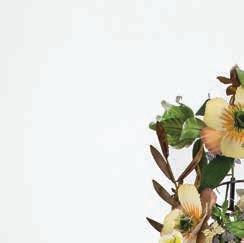
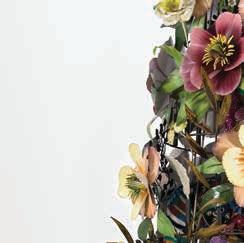


The exhibition 30 Americans is made possible with generous support from Sharon Twigg-Smith, Elizabeth Rice Grossman, Priscilla and James Growney, and Lynne Johnson and Randy Moore. Additional funding provided by the Conley Family Foundation, Judy Pyle and Wayne Pitluck, The Schulzman-Neri Foundation, The Taiji & Naoko Terasaki Family Foundation, and Hawai‘i Council for the Humanities & the National Endowment for the Humanities. Special thanks to corporate sponsors Christian Dior, Halekulani, and Honolulu Star-Advertiser.


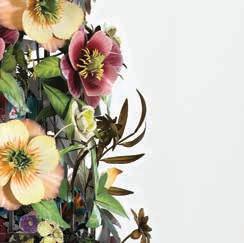
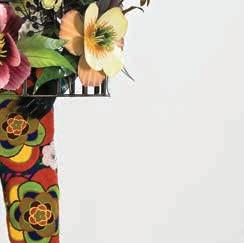




1959). SOUNDSUIT 2008. FABRIC, FIBERGLASS AND METAL. COURTESY RUBELL MUSEUM, MIAMI. © NICK CAVE.
NICK CAVE (B.
Organized
Rubell Museum, Miami.
HISTORY IN THE MAKING
THE MOST INFLUENTIAL CONTEMPORARY AFRICAN AMERICAN ARTISTS
FEATURING WORKS BY 30 OF

Broder Van Dyke
Michelle Broder Van Dyke is a feature and news writer based in Hawai‘i. Her work has been published in The New York Times, NBC News, the Guardian, BuzzFeed, Gizmodo, the San Francisco Chronicle, and NMG Network. She was formerly the night editor for BuzzFeed News, where she reported and edited breaking international news from Honolulu. In this issue, Broder Van Dyke reports on the effect of a warming climate on the islands’ famed tradewinds. “Growing up in Hawaiʻi, I’ve experienced the effects of climate change, some of which are not seen as much as they are felt,” she says. Since returning to her home in Tantalus after moving away for college, she’s had a chance to enjoy the trades, while also reflect on how the ecosystem functions as a whole. “As the trade winds change, so will the rain, and the flora and fauna that it supports.” When Broder Van Dyke isn’t writing, she’s working at her and her husband’s backyard flower farm, Tantalus Botanicals.
 Christine Hitt
Christine Hitt
Kamehameha Schools and University of Hawai‘i graduate Christine Hitt is a Los Angeles-based freelance writer whose work has appeared in the LA Times, Yes! magazine, Hana Hou!, and Honolulu Magazine. Prior to moving to Southern California, she served as editor-in-chief of Mana and Hawai‘i magazines. She has previously written for NMG Network’s titles, including a piece on Hawai‘i’s legendary Menehune for Flux. For this issue, Hitt guides readers through the process of uncovering Native Hawaiian genealogies on page 48. “I’ve been a fan of genealogy since I was a kid, and when I discovered that there were barely any resources about how to research Hawaiian roots, I wanted to help as many people as possible,” Hitt says. “It was a passion project for a good chunk of my life, and I’m happy to share what info I know with others.”

 Cameron Miculka
Cameron Miculka
Cameron Miculka is a freelance journalist based in Kealakekua, Hawai‘i Island, where he was most recently a reporter at West Hawaii Today. Miculka’s work in journalism has focused on rural communities across the continental United States and Pacific. He has also worked as a journalist at the Pacific Daily News, a daily publication on the island of Guam, as well as The Weimar Mercury in Colorado County, Texas. For this issue, Miculka wrote about Manago Hotel, which is located just down the road from his home in South Kona on Hawaiʻi Island. “Writing about the hotel and restaurant challenged me to consider why we form the relationships we do with places in our community,” he says. “Places like Manago Hotel continue to thrive because they continue to be good—it has loyal customers because it is loyal to them in return.” The piece, “Checking In,” on page 166, is Miculka’s first piece for the publication.
Lisa Yamada-Son is the founder of Flux Hawaii and its former editor-in-chief. After a decade of tending to the magazine that first held her heart, she stepped down in 2019, following the birth of her first child. “Flux was my first baby,” she says, “and I’m proud that many of the topics we covered in our early years are still as relevant today as ever.” To mark its 10-year anniversary, she resumed the editorial mantle, curating a special section on page 113 that revisits topics that drove the magazine’s first year in print. “Flux is what it is today because of the courage and passion of our writers, whose voices were more than just words on the page: Flux has been cited to pass legislation and used in school curriculum. I can only hope that Flux will continue to be a platform that pushes Hawai‘i forward.” Currently, she is shaking up the construction world at A-1 A-Lectrician, an electrical contracting company that was started by her grandfather in 1957.
 Michelle
Michelle
| TIME |
CONTRIBUTORS
Lisa Yamada-Son
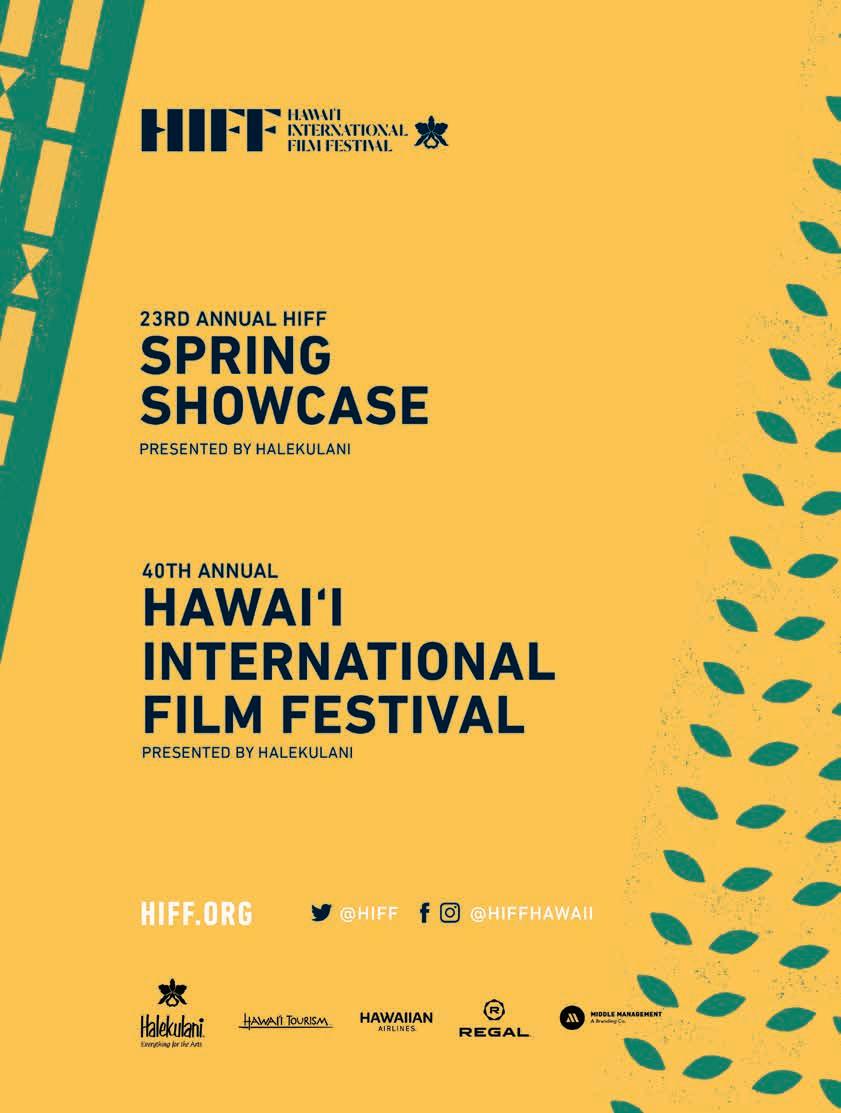


 The Maui sky through a steel sculpture by artist Tom Sewell. Image by Michelle Mishina.
The Maui sky through a steel sculpture by artist Tom Sewell. Image by Michelle Mishina.
“If

TIME
you don’t get up on time and plant those seeds, your harvest is not going to feed you.”—James
Viernes

Up in the Air
The northeast trade winds play a huge role in providing Hawai‘i with some of the best weather on the planet, but that might be changing.
TEXT BY MICHELLE BRODER VAN DYKE
IMAGES BY BRENDAN GEORGE KO
The air in the Koʻolau mountains is still this morning. With no wind to rustle the trees, the chatter of birds, the whirl of a helicopter, and the beeping of a garbage truck fill the silence. The air feels thick with humidity, making me not want to move, except I do dance around to fend off mosquitoes. In the distance, the ocean shimmers like glass, reflecting the cloudless sky. On days like this, everyone knows there are no northeast trade winds.
When the islands’ famous northeast trade winds are present, they arrive on the windward side of Hawaiʻi, where they wrap around the shoreline, creating small waves, cool breezes, clouds, and rain, which feeds the watershed. A sublime breeze persists and the air is clean, as any volcanic haze or industrial pollution is blown off shore. Everything feels right.
It’s easy to take for granted something we don’t necessarily “see,” but the northeast trade winds affect the everyday reality of locals, inviting keiki to ride waves at Makapuʻu Beach, encouraging us to eat lunch outside, and providing much of the water that comes out of the tap. Commonly known as Hawaiʻi’s “natural air conditioner,” the northeast trade winds hav e a powerful
Trade winds are fundamental to every aspect of Hawai‘i’s climate.
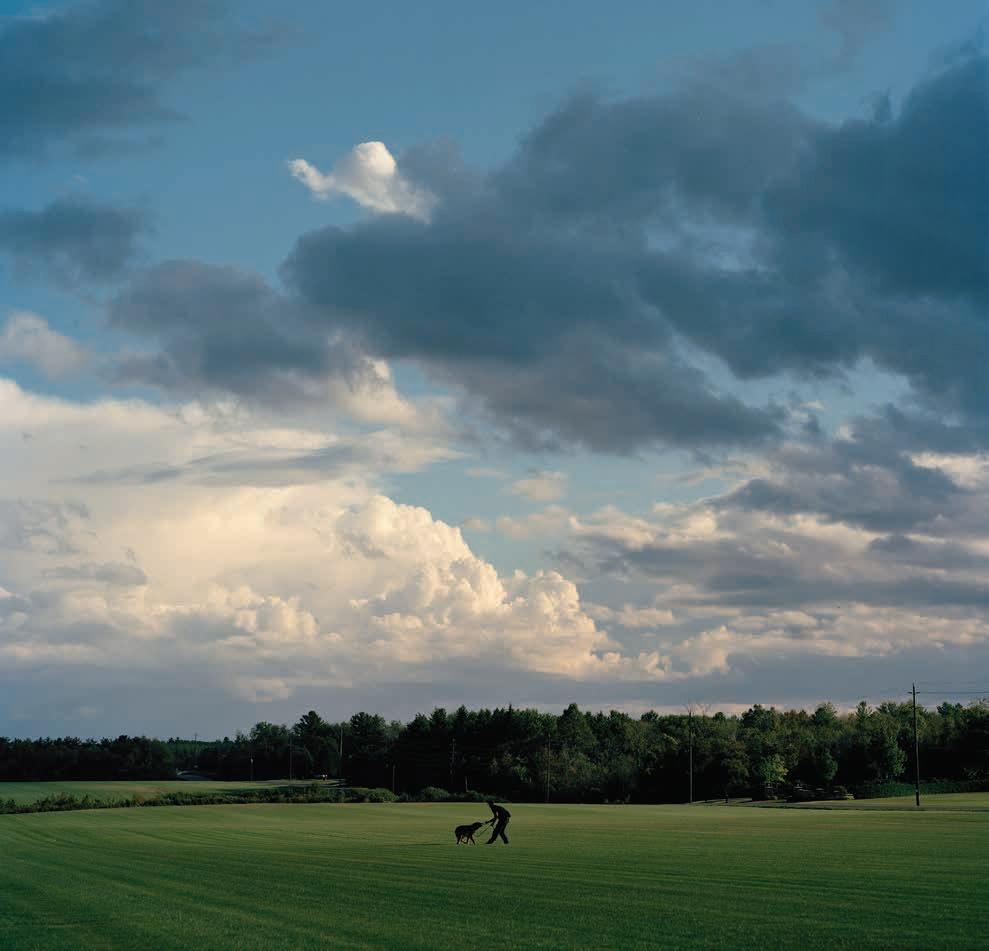
FLUX PHILES | CLIMATE | 26 | FLUXHAWAII.COM



cooling effect as they blow across your skin.
Trade winds also figure largely into the idealized version of Hawaiʻi: Palm trees sway, hula skirts flutter, and a surfer is seen through the perforated mist dashing off a wave.
Northeast trade winds blow more frequently in the summer, cooling the islands down when the temperature starts to heat up. Native Hawaiians recognize two seasons: kau, from May to October, when the sun shines directly overhead and the trade winds are more reliable, and hoʻoilo, from November to April, when the weather is cooler and the trade winds are less reliable. This aligns closely with the two seasons determined by modern climatologists, although the hotter season is shorter by a month.
But there has been a significant decline of northeast trade winds in the past four decades. Climatologist and University of Hawai‘i at Mānoa professor Pao-Shin Chu, along with other researchers, published a study in 2012 that found the frequency
and intensity of northeast trade winds had decreased between 1973 and 2009. Data collected at Honolulu’s airport showed that in 1973, northeast trade winds occurred 291 days per year, but by 2009, the number had dropped to only 210 days. Chu called the findings “really alarming” and said it was not good for Hawaiʻi’s future.
These discoveries are consistent with what would be expected as climate change causes the planet to heat up. The study indicates fewer days were cooled off by northeast trade winds. It also found slightly increased frequency of easterly trade winds, which don’t bring the same amount of cool air to Hawaiʻi.
This phenomenon seemed obvious over the long, hot summer of 2019. It was evident in the headlines on the local news—“Hawaii has broken or tied more than 120 heat records since April” (Hawaii News Now) and “NE Trade wind days nearly cut in half” (KITV). It was also clear in the extra-tense conversations people had about things that happen every
In the past four decades, climatologists have noted a significant decline in Hawai‘i’s trade winds.
28 | FLUXHAWAII.COM

summ er, like mango thieves. My auntie, who lives in Mānoa, decided to buy an airconditioning unit. There was a shave-ice shortage, as the machines that make the large ice blocks overheated.
European sailors, who followed the winds’ consistent paths from Europe to the Americas and then across the Pacific Ocean to Hawaiʻi and Asia, named them the trade winds. These early sailors figured out that the best route was not necessarily in a straight line, but instead in a sort of circular pattern that follows the winds. Polynesians also used the winds to explore the seas, and Hawaiians have hundreds of names for the winds on each island that flow across, away, or toward the islands.
“The trade winds are created by an atmospheric circulation system that basically takes heat away from the tropics and distributes it to the north and south of the tropics,” explained Chip Fletcher, a professor at the UH at Mānoa’s School of Ocean and Earth Science and Technology. Hawaiʻi’s proximity to the equator means that the sun is often shining overhead, heating up the land and in turn warming the air. This warm air rises into the atmosphere and is pulled into cooler parts of the Earth in the form of high-altitude jet streams. To replace the hot air, cool air then flows from the northeast along the surface of the Earth, collecting moisture and creating trade winds. This cycle operates as Hawai‘i’s natural ventilation system.
Without the blissful northeast trade winds in Hawaiʻi, we will feel the warmth and we will notice that trade wind rainfall has decreased, according to Chu. “We depend very much on trade-wind rainfall for agriculture, tourism, water resources, and all kind of things,” Chu said.
The trade winds are fundamental to the climate of Hawaiʻi, influencing the different environments from makai to mauka and windward to leeward. By shaping the dense cloud banks that surround the ridge tops in Hawaiʻi, the winds create what is known as
a cloud forest. Water droplets are deposited on leaves and branches, then drip onto the ground and travel down into the islands’ aquifers. The flora and fauna that live in the upper watersheds along Hawai‘i’s windward slopes have evolved in these moist conditions. The extraction of moisture as the air is lifted over or around the windward slopes leads to a “rain shadow” on the leeward slopes, creating dry mountains. This is why a drive from cloudy Kailua on Oʻahu through the Nuʻuanu Pali tunnels to Honolulu is often like sliding into a parallel land where it is very sunny.
Each Hawaiian island interacts with the trade winds in different ways. On Oʻahu and Kaua‘i, the trade winds flow over the mountains. The taller peaks on Hawaiʻi Island and Maui force the clouds to go around them, creating dry, desert conditions at the highest elevations. But an increase in eastern tradewinds means the mountains are getting different windy results that produce fewer trade showers and fewer clouds, according to Fletcher.
“The phenomena of global warming is expanding the tropics and it is changing atmospheric circulation,” Fletcher said. Hawaiʻi does see more extremes, he said, and it will continue to see changes. “I’m saying ‘changing’ because there’s so much about how climate change influences the atmosphere and ocean that we just don’t understand.”
I have lived close to the top of O‘ahu’s Mount Tantalus, also known as Puʻu ʻŌhiʻa, for most of my life, so I’ve grown up embedded in the upper watershed ecosystem. Misty days that blocked the sunlight used to be fairly common, but now they feel infrequent enough that I am delighted when they arrive. Many of my neighbors still have working fireplaces, and the smell of burning embers fills the air on these days. Cloudy trade wind weather is an excuse to stay home and to feel cozy, like how the Danish do hygge, but tropical style with slippers and socks.
Trade winds have figured largely into the idealized image of Hawai‘i.
30 | FLUXHAWAII.COM
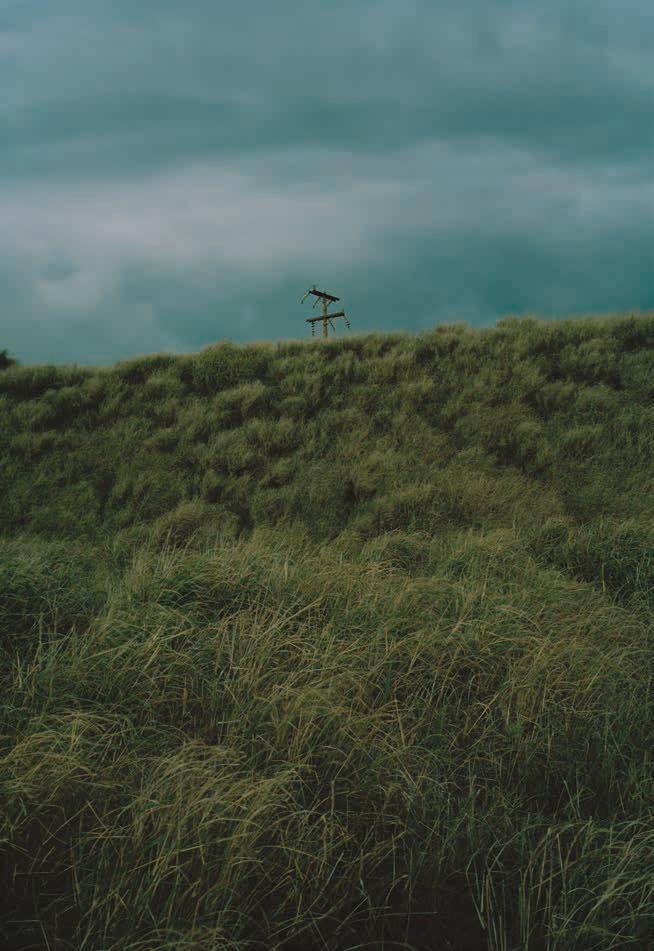
FLUXHAWAII.COM | 31
Breaking the Mold
Over six decades, Tom Sewell has found, filmed, and sculpted a hefty body of work. Much of it originated with Maui’s bygone sugar mills.
TEXT BY RAE SOJOT
IMAGES
BY MICHELLE MISHINA
Tom Sewell delights in documentation. Each morning, the artist hands over his iPhone to his assistant, Ines Gurovich, who downloads the photos he took the day before and selects highlights to print. She then assembles the prints into a montage that she pastes into an oversized journal. It’s an ambitious approach for a diary, but Sewell’s zeal for all things creative is insatiable. “There’s at least a hundred photos a day,” says Gurovich, a Peruvian painter and sculptor who has been working with Sewell since 2018. “Sometimes it’s hard to pick which ones.” Sewell’s images capture the miscellany of his daily life—a tree or shadow or building might catch his fancy— though most shots are of people. “He talks to everyone,” she says. “A lot of beautiful women,” Sewell quips. The two laugh.
A multimedia artist and photographer based on Maui, Sewell believes one can find art anywhere and in any form. He certainly does. Now 80 years old, he has spent a lifetime collecting and creating, cultivating and celebrating experiences, places, sculptures, and friends. His specialty, however, is objet trouvé, or “found art.”
Throughout Sewell’s 17-acre estate in the cool, green uplands of Ha‘ikū are such treasures. Along the rolling grounds, massive steel gears from Maui’s now-defunct sugar mills return to life as delightful window frames. Enormous industrial drills serve as building posts. The magic continues indoors where, in a tidy, side office of his art studio, boxes of Kodachrome slides, photography binders, and film cassettes line an entire wall, all neatly named and numbered. Many are accompanied by miniature snapshots depicting their contents. There are troves of letters from friends and mentors (he names Basil Langton among them) which he lovingly reads and re-reads. Nearby, in his library, a collection of worn tomes— Sewell’s dream journals—sits on cozy rows of shelves. Each morning for the past few decades, Sewell has sketched the remnants of his dreams. Some become blueprints for reality, like a Japanese rock garden he created for his wife, Michelle Sewell, an interior designer.
If the estate seems a merry reflection of his character, the artist is quick to note that life hasn’t been and isn’t always easy. Fortunately, he has managed life’s ups and downs—bad breakups, health issues, financial difficulties—with his signature optimism. “There were times I had to go to the pawn shop with my camera in
Tom Sewell spent a lifetime refining the craft of objet trouvé or “found art,” celebrating the beauty in objects often overlooked.
32 | FLUXHAWAII.COM FLUX PHILES | SCULPTURE |
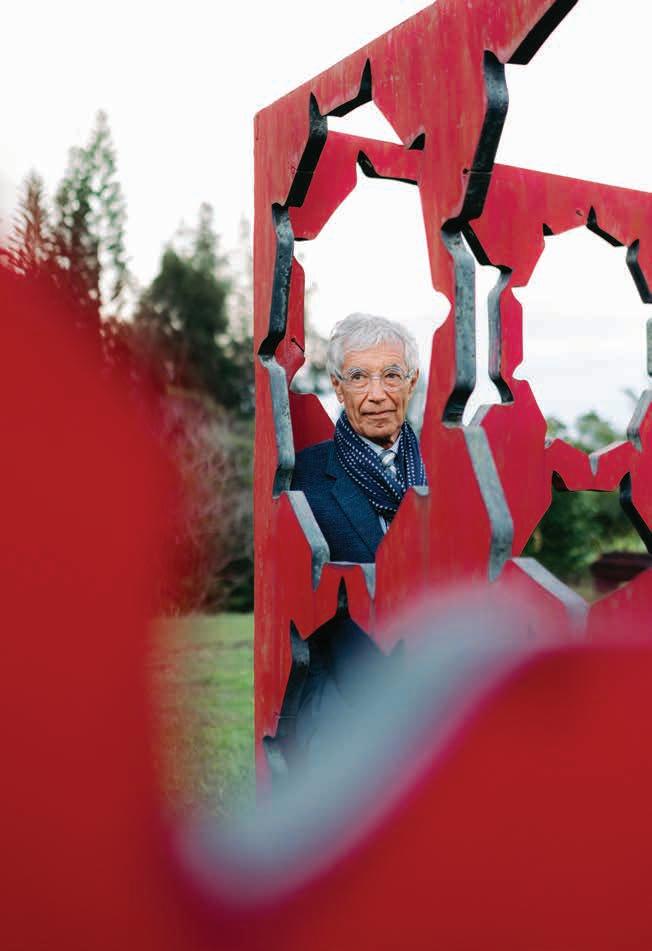

order to pay the rent,” Sewell says. “But my middle name is Serendipity. I wake up each morning and think, ‘What miracle is going to happen today? Is something going to be in the mail? Will somebody come to visit?’”
Growing up in Minnesota, Sewell was a tall, skinny kid, calm and a little self-conscious. His mother affectionately referred to him as “rug head” because of his mop of curls. As a teenager, he developed a flair for the illicit. Robbing gas stations and stealing tires became his forte. “I think I might have had some kind of attention deficit disorder,” Sewell muses. “That crime stuff was really exciting.” It wasn’t long before he was caught. “I managed to escape jail time by the skin of my teeth,” Sewell says. “I went straight then.” By 19 years old, Sewell had come into a more positive outlet for his energy, trimming windows at Dayton’s Department store in Minneapolis. There, he met Joe Wright, an “educated,
elegant, and stylish” gentleman who was the head of the display department. Wright left an indelible impression on Sewell, who began to emulate the dapper men of downtown—the cut of their suits, the polished shoes, their knowledge of art and design. “I’d wear a suit and tie and fedora hat and go to jazz clubs,” Sewell recalls. “I loved the idea of being grown up.” He chuckles in mild amusement at the follies of youth. “I even started smoking.”
Sewell’s immersion in art and culture laid the groundwork for a lifetime of creativity. He went on to run an art gallery in Minneapolis, work at the Minneapolis Institute of Art, and start a design magazine called Main. In the 1960s, down on his luck and ready for change, Sewell moved to Southern California. In Venice, he began converting derelict industrial buildings into sought-after real estate. The endeavor proved lucrative, but for Sewell,
Sewell’s talent for transforming derelict objects into found art has generated a unique body of work. The artist lives and works at his estate on the hillsides of Ha‘ikū, Maui.
34 | FLUXHAWAII.COM
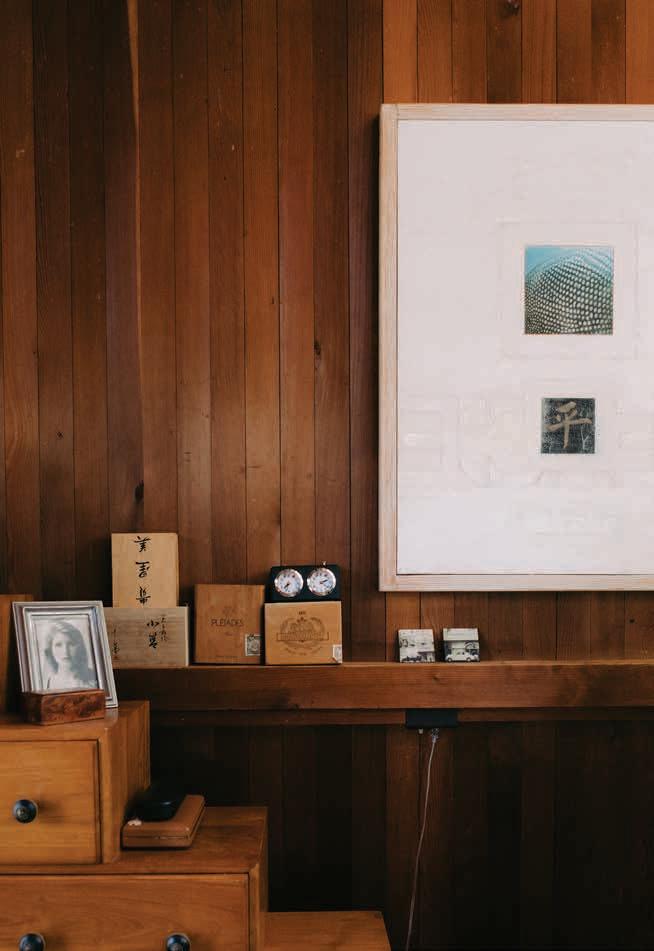
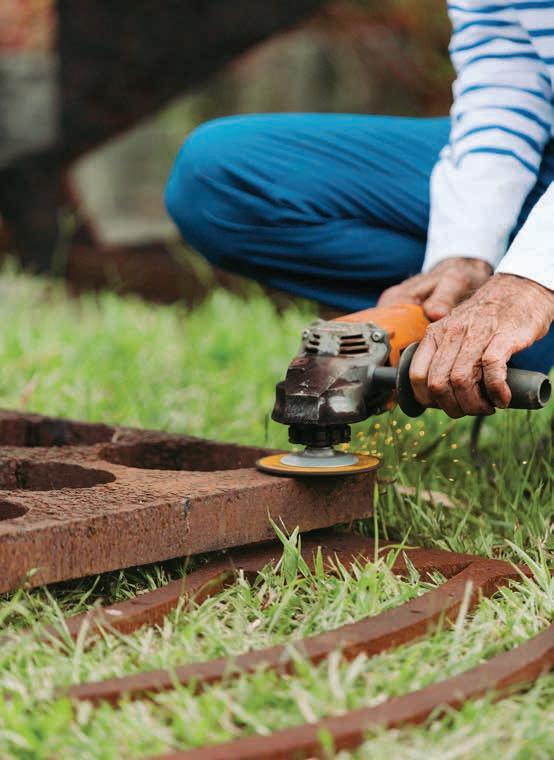
“I was so interested in the colors and patina, design and decay, the juxtaposition of objects,” Sewell says.


it was the process of transforming nothing into something that enlivened him.
This leitmotif surfaced anew when Sewell settled on Maui in the ’90s. Here, he found inspiration in the most unlikely of scenes: the island’s declining sugar empire. “The sugar mills were some of the ugliest, loudest places on Maui,” Sewell says. Stepping into the industry’s rusting mechanical belly, Sewell marveled at the beauty in its brutality. Ideas surrounding duality of light and shadow, weight and lightness, decay and growth sprang to mind.
For more than a decade, Sewell regularly visited the sugar mills and documented their activity. “I was so interested in the colors and patina, design and decay, the juxtaposition of objects,” he says. In 2006, he debuted “The Enigma of the Mill,” a grand art installation featuring giant giclée photo prints, panning video,
and audio recordings. It was a mesmerizing panoply of sight, sound, and movement: thick streams of molasses pouring into vats; wet steaming pipes; close-ups of sprockets, cogs, and gears. The custom musical score, including pieces by Kronos Quartet and Xploding Plastix, was dominated by rhythmic clanging metal, its jarring notes woven alongside a stirring melody. To this day, even speaking about the installation stirs something wondrous within Sewell. “The sugar mill is really my soul,” he says. His eyes glint as if he were a schoolboy with a gleeful secret. “Again, it’s that finding of art in the most unexpected places.”
The art-making continues at the Ha‘ik ū estate. Here, elements collected from the island’s sugar mills find place in Sewell’s home and heart. Dotting the property are his large-scale sculptures, crafted from scrap bulk steel sheets
Sewell’s Ha‘ikū estate is punctuated by remnants from the Pā‘ia sugar mill. Their rusting structures create a thoughtprovoking contrast to the surrounding natural environment.
38 | FLUXHAWAII.COM
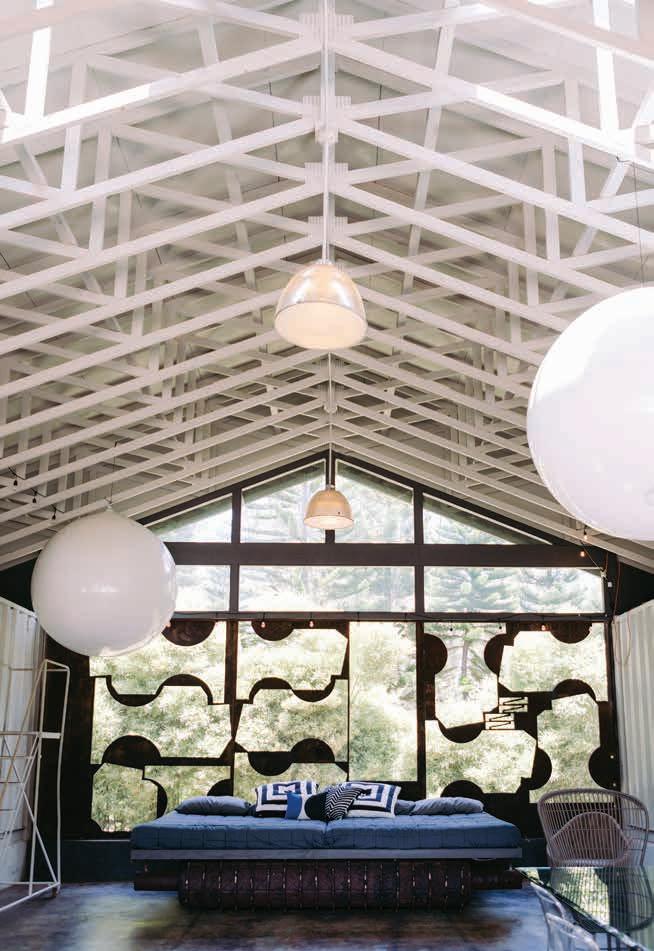

 Stepping into the sugar mill’s rusting mechanical belly, Sewell marveled at the beauty in its brutality.
Stepping into the sugar mill’s rusting mechanical belly, Sewell marveled at the beauty in its brutality.

salvaged from the Pā ‘ia mill. The sheets, arranged together vertically onto concrete slabs, are perforated with series of shapes: crescents and chevrons, triangles and trapezoids. Originally, the cut-outs were utilized as pieces for mill machinery, items such as blades, guides, and seals. Today, their remaining negative spaces are whimsical plays on form and light. Sewell invites guests to sit, walk, and even dance within the sculptures. “You should see what it’s like at night,” Sewell says. “It’s just beautiful.”
On a summer afternoon on the artist’s property, two men use a telehandler to maneuver a large sheet of steel—another retrieved sugar-mill gem—flush against a building wall. It’s a painstaking process of stop-and-go because the sheet, though pierced throughout with geometric forms, still weighs half a ton. Under Sewell’s careful instruction, the duo inch the sheet into its
dedicated space. Their brows are furrowed in consternation and concentration. Sewell, however, grins from ear to ear. “I love this,” he says. To Sewell, it is art in motion. It is also an irresistible opportunity to employ large machinery. His wife appears and greets him with a kiss on the cheek. “You get to see the whole show today,” she says to me as I watch the piece being assembled. “Tom and his Tonka trucks.”
Later, Sewell takes a stroll on the grounds. The day has begun to cool, and the late afternoon sun etches the airy, steel sculptures with thin veins of gold. Suddenly, Sewell hoists himself up onto one of them. He locates a foothold in a circular cutout, and then another and another. Higher and higher Sewell climbs, the artwork transformed into a piece of play, an impromptu jungle gym. Upon reaching the top, his face shines with joie de vivre. From his perch, he scans the sky above him, ready for the day’s next miracle.
Inspired by the junkyard aesthetic of the sugar mills, the latter half of Sewell’s oeuvre meditates on the duality of light and shadow, decay and growth.
42 | FLUXHAWAII.COM
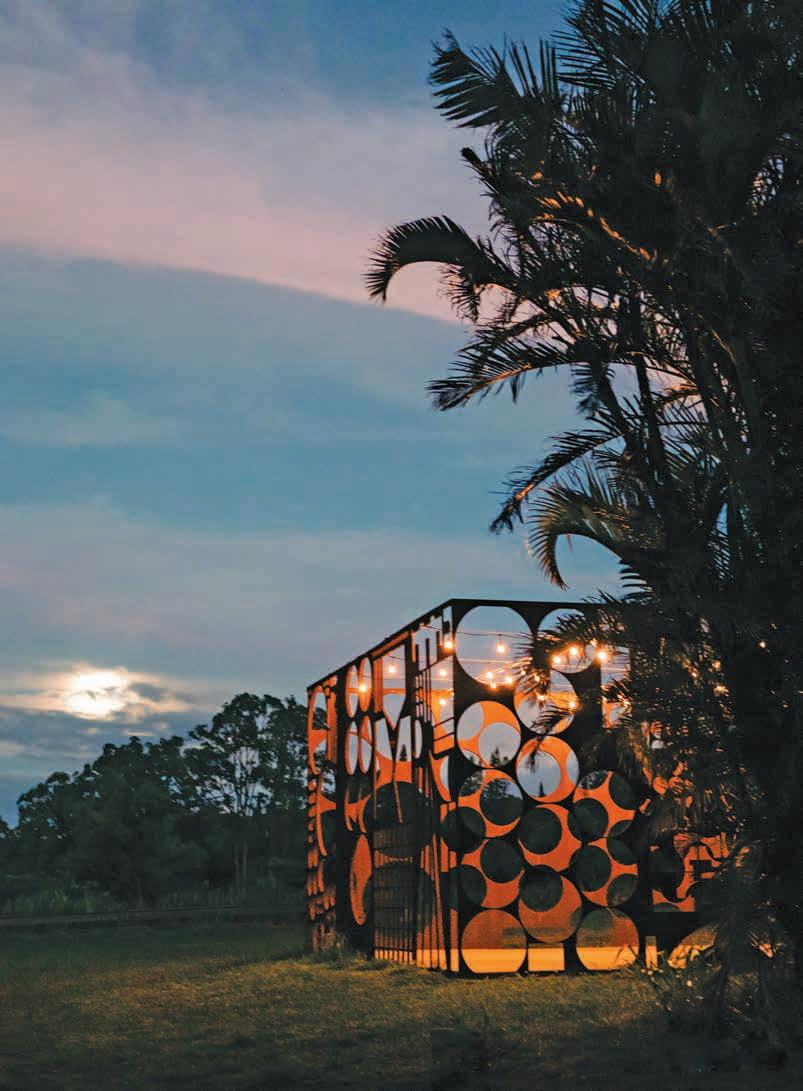
The Tick of Island Time
Behind the humor and tropical scenesetting, what does it really mean to be on Hawaiian time?
TEXT BY MITCHELL KUGA
IMAGE BY LILA LEE
Growing up, the concept of “Hawaiian time”—that locals possess a more lax attitude toward punctuality—felt as emblematic of local humor as Lie Hagi and four-tu-tu, tu-tu-tu-tu. Thirty minutes late for the dentist? Hawaiian time. Cruising into the party two hours after it started? Hawaiian time. Missing a deadline for an essay about Hawaiian time? Hawaiian time. In 2018, T&C Surf Designs even trademarked the phrase “I NOT LATE I STAY ON HAWAIIAN TIME,” which they’ve printed on tank tops, stickers, hoodies, and license-plate frames: a good-natured way of symbolizing what it means to get along on an island chain that ranks first in the country for racial and ethnic diversity, and in the case of Honolulu, within the top 20 for worst traffic in 2019.
But the concept can also be weaponized. My mother, who works at a department store at Ala Moana Center, recently re called an interaction her co-worker had with an associate from Boston. “I know you’re on Hawaiian time,” the associate huffed over the phone regarding an incoming package, “but we need it ASAP.” Her implication was clear: You lazy islanders, lounging around with your mai tais and rubber slippers, lack initiative—and by extension, a sense of purpose.
I’ve tilted toward this bias. When people on the continent ask why I moved to New York from Hawai‘i— as if I’d foolishly ejected myself out of a postcard from paradise—my typical response is that life in Honolulu felt too slow. This lethargy felt cultural, the way the belated arrival of an Abercrombie and Fitch store or an NSYNC concert still elicited waves of 7th-grade shock. But it also
felt baked into the architecture of the city itself: escalators lagged, yellow traffic lights dawdled, the seasons stretched into one long eternal summer. As a teenager, I’d watch the ball drop in Times Square through the fuzz of my television, while outside my window the sun had just set. It was 7 p.m. We were five hours late to the party, stuck forever in the past.
Hawaiian time is an inflection of “island time,” a term that gained colloquial traction during the U.S. military’s invasion of the Pacific post-World War II. Westerners accustomed to frigid winters and a rigid clock romanticized the idea of an island paradise, where time seemed to melt into a soothing drip. But beneath that fantasy simmered traces of cultural friction. According to professor Davianna Pōmaika‘i McGregor, a founding member of the ethnic studies department at the University of Hawaiʻi at Mānoa, this friction was most pronounced during the rise of Hawai‘i’s first corporate industry: the sugarcane plantation. Plantation owners, who were mostly descendants of missionaries, enforced stringent 10-hour work days that defied the Native Hawaiian approach to planting, which centered around the cycles of the sun and moon and the two seasons, kauwela (the hot season from May to October), and ho‘oilo (the wet season from November to April).
An inquiry into the origins of “island time” reveal longstanding biases about the Pacific.
FLUX PHILES | LANGUAGE | 44 | FLUXHAWAII.COM

McGregor also points out that capitalistic wage labor contradicted uku pau, a Native Hawaiian system that compensated agricultural workers per job rather than per hour. As a result, journals kept by Kaua‘i’s Ladd and Co., the first commercial sugarcane plantation in Hawai‘i, characterized Native Hawaiian workers as lazy and unmotivated, a stereotype McGregor says erroneously persists today. “It’s not at all a sense of laziness,” she says. “It’s just a different approach to work, a different orientation to planting and cultivating the land.”
James Viernes, a Chamorro scholar from Guam, where the vernacular is “Chamorro time,” stresses the importance of islander urgency. “Whether it’s Hawai‘i or Guam or Samoa, our ancestors really did live and die by time,” he says. “I mean, if you don’t get up and get in that canoe at the right time, you’re going to miss the currents that are going to take you on a successful journey. If you don’t get up on time and plant those seeds, your harvest is not going to feed you.” That understanding of time, dictated by the cycles of nature, is the reason many indigenous cultures see time as circular rather than a straight line. As the outreach director for the Center for Pacific Islands Studies at UH Mānoa, Viernes supervises a lot of students—“all islanders like me”—who shrug off deadlines and show up late for meetings, claiming they’re on island time. He’s grown frustrated with the excuse, calling unexamined usage of the phrase, with its ties to imperialism, “dangerous.”
But he also sees employing “Hawaiian time” as a form of “everyday peasant resistance,” to borrow a phrase from the anthropologist James C. Scott; as a gesture of protest, however small. “I think the reason
we take so much pride in this ‘island time’ is that yeah, it’s funny, but if you really look at it, there is a level of resistance in that term—in saying that, despite all this history of outside influence coming in and dominating us, we’re still insisting on our Hawaiian time, our Chamorro time, our Fijian time,” Viernes says. “An insistence on island time is a way of maintaining island identity.” Through this lens, he continues, embracing Hawaiian time becomes a way for the 50th state to stand outside of an “artificial nationalist American identity where it never existed.” In short, it is a claim to sovereignty.
As expected, since I moved to New York nine years ago, my life has moved considerably faster, dictated by the demands of a city that feels single-mindedly oriented toward bigger, shinier, faster. I learned to walk like a New Yorker, lunging perpetually forward despite often not knowing where I was headed, yet feeling guilty anytime I slowed down, guilty anytime I wasn’t participating in the city’s ambient rat race, which was really just a way of staying vaguely afloat. What I mean to say, in the most New York way possible, is that I like it here.
But after returning to New York following a month in Hawai‘i, I can feel myself trying to inhabit two opposing time frames simultaneously—Hawaiian time and a New York minute—as if conducting dueling orchestras, willing them to be one. Pausing an entire hour, even a day, before responding to difficult work email? Island time. Walking the Williamsburg Bridge instead of taking the train? Island time. Seeking spaces that permit reflection in a city forever honking, shuffling, and churning? Island time. After all, Manhattan is an island too.

46 | FLUXHAWAII.COM

174 lāhaināluna road lāhainā , maui , hawai ’ i 96761 www . theplantationinn . com 1-808-667-9225
Tracing the Past
Native Hawaiian genealogy presents an idiosyncratic slew of challenges and familial puzzles to solve.
TEXT BY CHRISTINE HITT
IMAGES FROM HAWAI‘I STATE ARCHIVES
It’s the aha! moments that make researching genealogy so satisfying. Like finishing a 500-piece jigsaw puzzle or filling in the last word of a crossword, finding the biological parents of my client’s hānai (adopted) greatgrandmother gave me the feeling of elation.
After finding a 1985 obituary with my client’s great-grandmother’s maiden name at University of Hawai‘i at Mānoa’s Hamilton Library, and then coming across a 1910 census with her listed under her adoptive father’s name on Ancestry.com, I looked into her marriage records by searching the genealogy indexes at Ulukau.org, a Hawaiian electronic library. There I discovered that she had been married twice. When I visited the Hawai‘i State Archives and pulled the two marriage licenses, my eyes could have lit up the room. The first license I found listed her adoptive parents. The second marriage license listed the full names of her biological Hawaiian parents, with her adoptive mom as a witness.
Not everyone has such luck in their family-history searches. As with researching ancestry for any other ethnicity, Hawaiian genealogy has its own sets of challenges, and determining adoptive relationships is one of the most complicated. It’s also one of the many things that make Hawaiian genealogy unique. There are a few types of
Hawaiian adoptions to consider: ho‘okama (adopting another person’s child, usually by the desire of the child and older adult, looked negatively upon by the biological parents), ho‘okāne or ho‘owahine (an adoptive platonic marital relationship between persons of opposite sex), and hānai (a child reared in another household as their own). Hānai adoptions were almost always of children from within one’s family, with first-born males considered to belong to the father’s side and the first female child said to belong to the mother’s side; if a grandparent asked for a grandchild, it was impossible to refuse the request.
Many of the resources and much of the documentation regarding genealogy only go back to the 1800s, and unless the family line has a link to an ali‘i (chief) whose lines are preserved, the information stops there. And, as is the case in some of my own family lines, you have to learn to be OK with that. Records can get lost or burned in fires, kūpuna might not have participated in the Territory of Hawai‘i census nor claimed land during its redistribution in the Māhele, when the concept of privately-owned property was instated by the government. Unless personal family records were kept or stories of the past were passed down, that knowledge is lost in time.
Understanding cultural practices of the time help researchers uncover one’s roots. Pictured right, portrait of a Hawaiian girl.
FLUX PHILES | MO‘OKŪ‘AUHAU | 48 | FLUXHAWAII.COM

“I think a lot of people get really angry towards their kūpuna that they didn’t record information,” says Sarah Tamashiro, who has been a professional researcher since 2014. She, along with professional genealogist Ami Mulligan, led a series of genealogy workshops at the Waiwai Collective earlier this year. “Colonization and breakages in the passage of information is why a lot of people don’t have genealogy,” Tamashiro says. “It’s also due to certain choices that people made within their own family. They said, ‘This isn’t for you,’ or ‘This isn’t important for you to move forward and so I’m not going to say anything.’ And all of these different reasons or personal family choices is why certain families don’t have that information.”
With blood-quantum requirements to apply for Hawaiian Home Lands and documented proof of Native Hawaiian ancestry needed for admission to Kamehameha Schools, scholarships, and financial aid, Hawaiian families are trying their best to gather information and create their own genealogical charts. Knowing where to go and what to research helps researchers begin their searches, but it’s equally as important to understand the history and laws of the times.
“It’s easy to put what your understanding of the current law is on the past and to just assume that it’s the same, but in reality, you really can’t,” says Mulligan, who owns Discover Your ‘Ohana, which offers professional genealogical services. For instance, prior to 1860, when the Hawaiian kingdom passed the surname law, Hawaiians used singular names. There was no patrilineal surname passed down to children. Also, prior to 1911, many people didn’t have birth certificates and didn’t file for one, until it was a requirement for jobs, government benefits, and so on.
Looking at documentation through a lens of social and cultural practices of that time period also helps make sense of what you find. In some cases, when Chinese
immigrants and Hawaiians married, surnames would be Hawaiianized, such as Ah Kam becoming Akamu or Wai becoming Awai. Some Hawaiians also found it more prestigious during the 1920s and ’30s to claim to be half Caucasian or half Chinese, even when the family was pure Hawaiian, and claim Caucasian-sounding names. Going back another generation in searches should show what family names were before the changes.
Understanding practices of the time also helps with knowing what to look for. Traditionally, Hawaiians had many types of names, such as a spiritual name, a secret name, a nickname, or a name inspired by an event. Usually only one name was used for legal documents, but even so, it’s important to search all names known for a person when researching genealogy.
It is also essential to keep an open mind when researching. Stories that are passed down may not always be accurate or proven, such as relations to ali‘i. “I think that you can’t dismiss anything, but when you’re researching, you shouldn’t have this specific goal in mind,” says Mulligan, adding that you can’t shove square sources into round holes. “You have to go with the sources.”
Tamashiro thinks the desire to be linked to ali‘i is the product of our historiography. “The types of books we have about Hawaiian history is largely about ali‘i. And we don’t have books about, you know, everyday people, about commoners or about maka‘āinana,” Tamashiro says. “But if your family was the best sweet-potato farmer in rural east side Moloka‘i, that’s awesome. And I think that needs to be celebrated just as much as being able to claim an ali‘i.”
No doubt, the research that goes into building a genealogy chart takes time and may not be completed in your lifetime. But the sources and stories that you document today are lasting gifts to future generations, who can continue connecting pieces of the puzzle.
Many resources and documentation regarding Hawaiian genealogy only go back to the 1800s. Pictured right, portrait of a Hawaiian man.
50 | FLUXHAWAII.COM
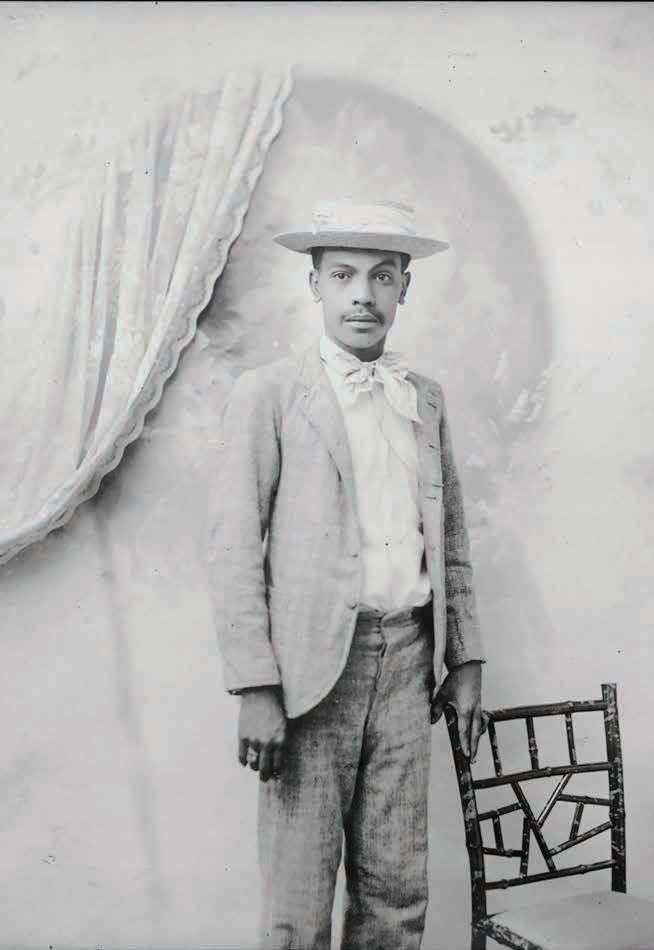
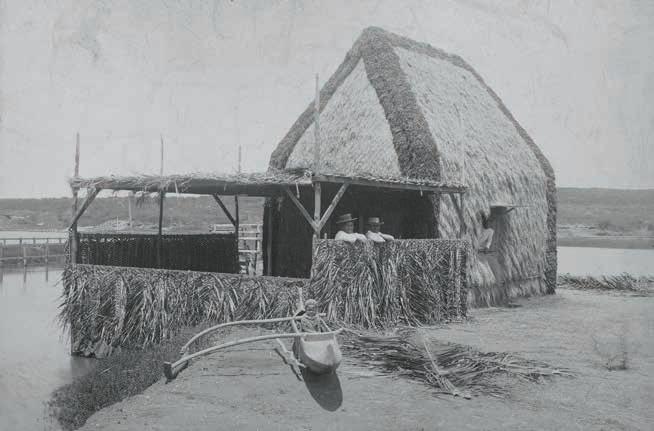
HOW TO BEGIN
1. Gather as much information as possible about your family, including surnames and maiden names of your parents, your grandparents, their parents, siblings, spouses, and children. If dates of births, marriages, or deaths or where they lived is unknown, try to approximate.
2. Start with online resources, including Ulukau.org, Ancestry.com, Hawai‘i State Archives Digital Collections, and Familysearch.org. Look up family names in the indexes, and record any findings. Note: While Ancestry.com’s searchable census database is unmatched, Hawaiian names are often misspelled in it, so you should doublecheck the documents.
3. Once you’ve exhausted online resources and know what you want to research, decide where you want to visit. If you found a name in an index, retrieve those documents.
RESOURCES
Birth, Marriage, and Death Certificates
The Hawai‘i State Department of Health holds certificates of birth, marriages, and death records from the early 1900s to present. For records prior to 1929, the Hawai‘i State Archives has a collection of these also. Indexes to these can be found online at Ulukau.org. The Hawai‘i State Public Library also has an index to births, marriages, and deaths from 1909 to 1949.
Certificates of Hawaiian Birth
From 1911 to 1972, the Certificate of Hawaiian Birth program registered all births that occurred in Hawai‘i and weren’t certified. The Territory of Hawai‘i asked each person to testify and produce witnesses to their birth in Hawai‘i, making this an invaluable resource. The LDS Mormon Family History Centers have an index to these, and certain locations have testimonies as well. Certified copies of birth certificates and transcribed testimonies are available through the Hawai‘i State Department of Health. Be sure to order the testimony when requesting the certificate.
Hawaiian families do their best to create their own genealogical charts. Knowing where to go and what to look for helps researchers begin their searches, but it’s equally as important to understand the history and laws of the times.
Pictured above, grass house at Moanalua Gardens, circa 1900.
52 | FLUXHAWAII.COM

FLUXHAWAII.COM | 53 FREE WIFI WHERE 110 RENOWNED RETAILERS & 30 DINING DESTINATIONS CREATE ONE TIMELESS PARADISE. THIS LAND IS OUR LEGACY. THIS IS HELUMOA AT ROYAL HAWAIIAN CENTER. Apple Store | Fendi | Harry Winston | Hermès | Jimmy Choo | Kate Spade New York | Leather Soul | Loro Piana | Omega
Rimowa | Salvatore Ferragamo | Tiffany & Co. | Tory Burch | Tourneau | Valentino | Doraku Sushi | Island Vintage Wine Bar | Noi Thai
Restaurant Suntory | The Cheesecake Factory | Tim Ho Wan | TsuruTonTan Udon Noodle Brasserie | Wolfgang’s Steakhouse Hula | Keiki Hula | ‘Ukulele | Hawaiian Entertainment | Presented in The Royal Grove | RoyalHawaiianCenter.com Open Daily 10am–10pm | Kalākaua Avenue and Seaside, Waikīkī | 808.922.2299 BE CONNECTED TO THIS LAND. WHERE OUR PAST IS YOUR PARADISE. WHERE YOUR ARRIVAL MAKES A DEFINING STATEMENT. WELCOME TO OUR LEGACY.
Boutique
Cuisine
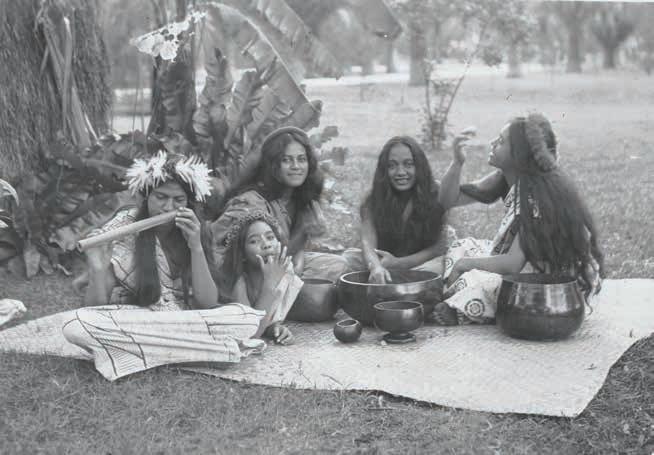
Census Records
Race, relationships to head of household, ages, marital statuses, and birthdates are some information found in census records. The Hawai‘i State Archives has census records for 1866, 1878, 1890, and 1896. The Hawai‘i State Library holds copies of the U.S. Census from 1900 to 1930.
Probates & Wills
Probate records from 1847 to 1917 are located at the Hawai‘i State Archives, with an index available at Ulukau.org. These records link parents to children, which is especially handy for adoption searches, and include an inventory of property. Often, probates and land deeds are in Hawaiian.
Church Records
Once the kapu system was abolished, Hawaiians joined Christian churches. Church documentation may help push back genealogical charts. Hawaiians were mostly converts to Latter-Day Saints, Catholics, and Congregationalists.
Land Records
The Māhele required Hawaiians to explain their rights to own property. Native and Foreign Testimony can be found at the Hawai‘i State Archives and LDS Family History Centers.
Court Records
Circuit court divorce records from 1849 to 1915 are available at LDS Mormon Family History Centers. Divorces (1848-1915), equity files (1851-1914), criminal cases (1848-1914), minutes (1848-1960), and civil cases (1848-1916) can be found at the Hawai‘i State Archives. Divorce indexes are found on Ulukau.org.
Newspapers & Obituaries
Genealogies, births, marriages, deaths, and obituaries were sometimes printed in Hawaiian newspapers. A partial index from 1850 to 1950 can be found at LDS Mormon Family History Centers, the Hawai‘i State Archives, and Hamilton Library. Hamilton also has an index of 1929-1985 newspaper clippings on microfiche.
Writer Christine Hitt worked professionally as a Hawaiian genealogist from 2002 to 2014 as the founder of Hawaiian Roots. Visit the organization’s Instagram at @hwnroots. Pictured above, Hawaiian girls eating poi, circa pre-1900.

54 | FLUXHAWAII.COM

FLUXHAWAII.COM | 55 Royal Hawaiian Center has a storied past that connects to Chief Kākuhihewa who once ruled O‘ahu, Kamehameha I who became Hawai‘i’s first monarch, and Princess
last of his royal line to reside on these grounds. Since we opened as Waikīkī’s premier shopping center in 1980, we’ve been sharing our history and culture with the world. Our hula lesson, once taught on the sidewalk flanking Kalākaua Avenue, now has a home in the center’s beautiful Royal Grove. Our suite of complimentary cultural lessons, seven in all, will ensure you take Hawai‘i home with you. Hula | Keiki Hula | ‘Ukulele | Hawaiian Entertainment | Presented in The Royal Grove | RoyalHawaiianCenter.com CONNECT TO OUR STORY . UNEARTH THE LEGENDS OF ITS WONDER. BE IMMERSED IN THIS HISTORIC PARADISE. WELCOME TO OUR LEGACY.
Pauahi,
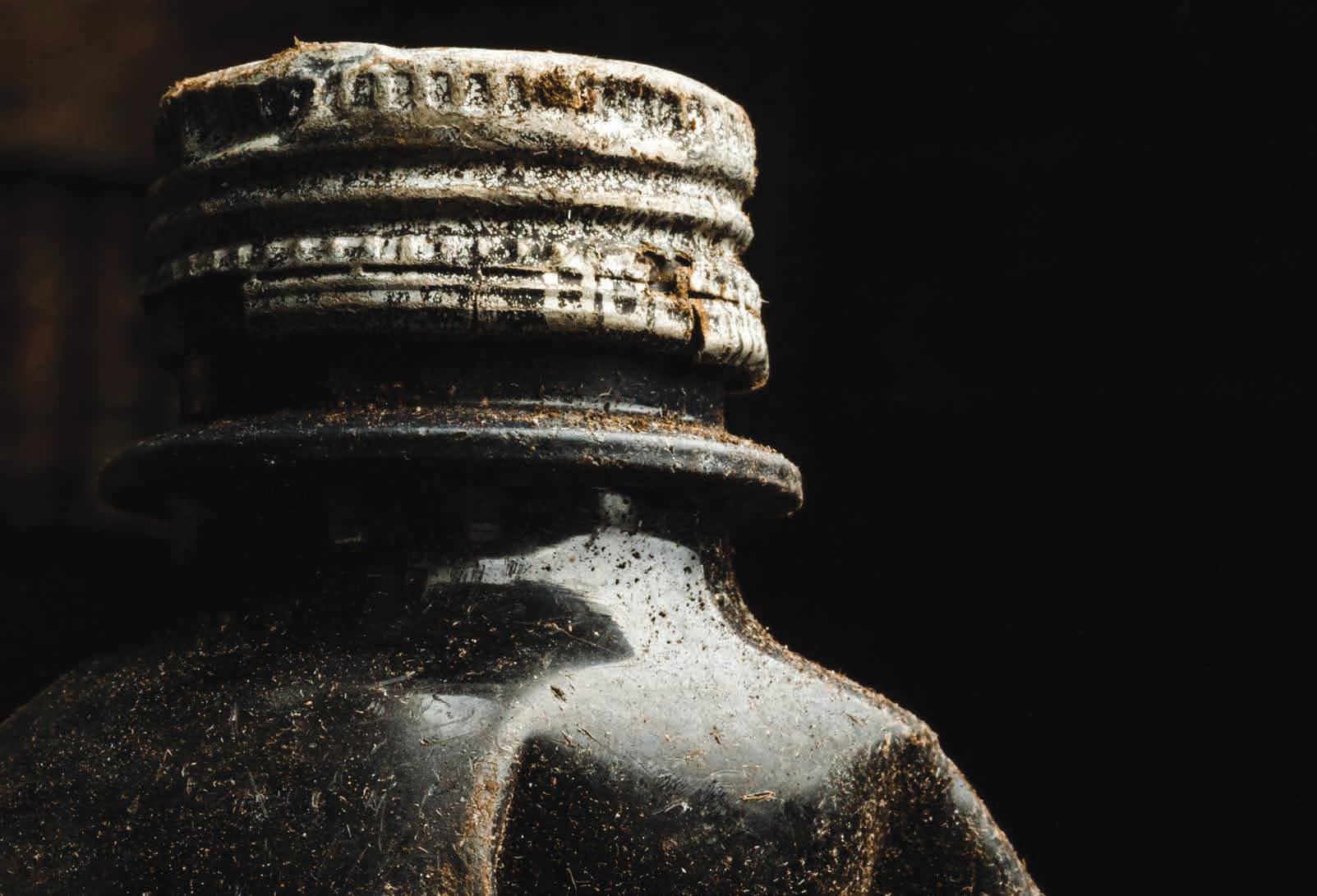
The Plastic Age
Engineered to stick around for decades—and potentially thousands of years or more—plastic continues its journey long after we throw it away.

 TEXT BY LAUREN MCNALLY
IMAGES BY JOHN HOOK
FLUX FEATURE
TEXT BY LAUREN MCNALLY
IMAGES BY JOHN HOOK
FLUX FEATURE
There’s something curiously perverse about the soap dispenser sitting by the sink in the guest bathroom of my parents’ house: I can tell by the sunrise shell glued to the front of the bottle that the scrap of nylon netting around it is meant to resemble a miniature fishing net. It’s charming and beachy, probably a DIY gift from a crafty acquaintance. But it begs the question, how did seashells and trash become so inextricably linked?
Humans have been fishing for tens of thousands of years, but only in the last 50 years or so has the practice left such a pervasive spectacle of marine debris on our shorelines. Once made from natural, biodegradable fibers, like the olonā bark and ‘ie‘ie vine that Native Hawaiians favored, today’s nets, lines, and traps are made from synthetic materials to weather the elements like never before. As with so many other things in our lives, we devised a cheaper and more durable alternative to the organic stuff, and now wayward plastic is piling up in our oceans at an alarming pace. At this rate, if we’re to believe predictions from the Ellen MacArthur Foundation, plastic will outweigh fish in the sea within the next 30 years. Meaning tiny plastic fishing nets will make perfect sense as decorative accents if you’re looking to conjure reveries about the ocean.
beaches. Less clear, perhaps, is how it earned that sorry nickname. Later, in a different car headed back to Kona, my driver wonders aloud, “Why is there so much trash at Kamilo?"
Kamilo Beach is the unfortunate dumping ground for trash from the Great Pacific Garbage Patch, a vast expanse of marine debris dispersed an indeterminate distance across the surface and upper water column of the north Pacific Ocean. Comprised of two distinct garbage patches weighing an estimated 80,000 tons, it’s the largest and most notorious of the trash heaps accumulating in our planet’s five major ocean gyres, which help circulate water around the globe like giant, slowmoving whirlpools, pulling objects such as buoyant plastic toward their centers.
Though all of the islands act like sieves for this swirling junkpile of marine debris, Kamilo’s location at the southeastern tip of the Hawaiian archipelago puts it in the crossfire of onshore winds and plastic-laden surface currents, which together dump 10 to 20 tons of trash onto its half-mile stretch of coastline every year. This combination of circumstances is why, despite cleanup efforts by local conservation groups, an unpopulated beach in Hawai‘i has come to be known as one of the most plastic-littered places on Earth.
Early one morning in December, I step off a plane on my way to visit ground zero of Hawai‘i’s plastic-pollution crisis. “Going to Wai‘ōhinu?” my Lyft driver asks as I climb into the backseat of his Subaru Forester at Kona International Airport. Then, after a pause: “What are you going to do there?” I’m guessing his airport pickups don’t usually lead him to the small town of Wai‘ōhinu in Hawai‘i Island’s rural Ka‘ū district. I tell him I’m meeting a group to pick up trash at Kamilo Beach.
“You been there before?” he asks. “It’s bad.” Apparently, everyone here is well aware of Kamilo’s reputation as Plastic Beach, made infamous by news outlets declaring it one of the world’s dirtiest
In Wai‘ōhinu, I gather with 20 others in a semi-circle around Megan Lamson, a marine biologist who has been leading beach cleanups with the nonprofit Hawai‘i Wildlife Fund for more than a decade. She instructs us to prioritize large pieces of litter over small ones, presumably in the interest of efficiency and due to their risk for animal entanglement, and before long, we split up into different cars for the drive to Kamilo. I find myself sandwiched between two volunteers in the backseat of a heavy-duty pickup truck, the bed of which has been outfitted with a ramp, winch, 150foot cable, and logging hook for the express purpose of hauling derelict fishing nets from the shoreline.
Though our journey is only nine miles, it takes us nearly two hours to navigate the coast’s rugged terrain. The dried bozu lei hanging from the rearview mirror swings
Researchers suspect the majority of all plastic ever produced persists in the environment as waste—either in landfills, in the ocean, or hiding in plain sight as microplastic.
Overzealous media has painted the Great Pacific Garbage Patch as a nightmarish island of trash twice the size of Texas, but in reality, you might not notice this vortex of plastic waste unless you passed right through it.
58 | FLUXHAWAII.COM
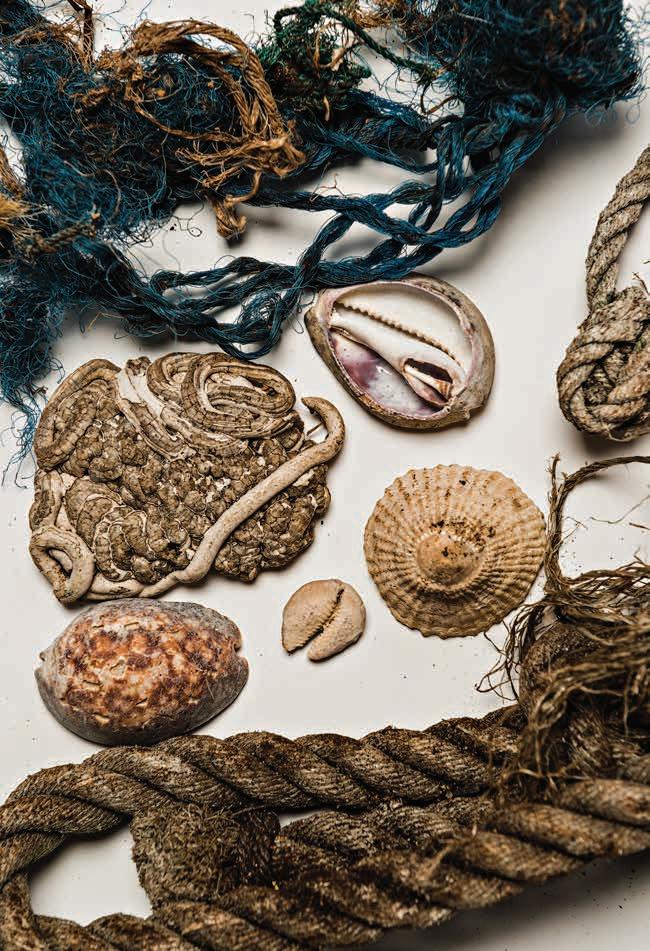
wildly as we crawl five miles per hour down the rough, unpaved road to Kamilo, which takes us through groves of invasive kiawe, former cattle runs with crumbling rock-wall enclosures, and jagged lava fields littered with fallen albizia trees swept south along the coast after the 2018 volcanic eruption in lower Puna. The smell of sulfur fills the car as we near the ocean. At one point, we’re bouncing up and down along the rocks at the water’s edge, only a few feet from the churning waves of Ka‘alu‘alu Bay.
We veer left and follow the bay to Kamilo Point, where fierce winds tear down the coast. The beach is blanketed in gnarled driftwood that was carried ashore by the same powerful currents that inspired early inhabitants to call the place Kamilo, meaning “swirling currents.” Massive evergreen logs, which still regularly wash in from the Pacific Northwest, were once gathered here by Native Hawaiians as building material for dugout canoes. Kamilo is said to be where bodies would turn up following accidents at sea, where travelers could send lei from up the coast to let those back home in Ka‘ū know they had safely arrived at their destinations.
Due to storm events, wind, currents, and other factors affecting ocean dynamics, I’m told the winter season is a clean time of year for Kamilo Beach, but as usual, the worst problems are the ones you can’t see. At first glance, I hardly notice the vibrant confetti of plastic scattered among the tidewrack, but looking closer, I realize the stuff is everywhere—strewn about the rocks, mixed in the sand, swirling in the shallows like flakes in a snow globe. I duck into an opening in the sprawling thicket of beach heliotrope lining the shore and find a trove of plastic debris lodged in the dense tangle of branches: waterlogged shoes, broken clothes hangers, tattered fishing net, foam fishing floats, a set of kid’s costume fangs. There’s a small tire from Japan, a scrap of plastic lined with Chinese characters, the lid from a Nestlé container, and a weathered bottle of Boots UK shower gel (in the scent of “sea minerals,” ironically enough).
Next I come across a hard, flat wad of plastic curled in on itself like the folds of a brain. I later learn that this perplexing specimen is known as plastiglomerate, likely formed by the heat of a campfire melting plastic trash in the dirt and sand, fusing it into a composite of plastic and natural sediment. Geologists predict that these plasticsediment hybrids will persist in the fossil record as a marker of the Anthropocene, an unofficial but commonly used term for the current geological age, of which plastic will be one of humanity’s most lasting legacies.

Little research has been done to quantify the microplastics accumulating in terrestrial environments, but the handful of studies out there suggest they’re as ubiquitous on land as they are in our oceans and waterways.
contrary to popular belief, the jury's out on whether or not plastic ever biodegrades. “Those numbers are good, in a way, to raise awareness among consumers, but from a scientific perspective, they aren’t necessarily accurate,” says Sarah-Jeanne Royer, a postdoctoral research fellow studying plastic and microfiber degradation at the Scripps Institution of Oceanography at the University of California, San Diego. “Scientists have found very few organisms using plastic as a source of nutrients. Plastic degrades due to several degradation processes, fragmenting into smaller and smaller pieces until it is invisible to the naked eye, but how much of it is actually transforming into something useful for nature, we have no idea.”
Estimates for how long it takes different plastics to break down range from decades to hundreds of years, but
What we do know is that microplastic is turning up in the most remote reaches of the planet, from the peaks of the Pyrénées mountains to the depths of the Mariana Trench. Plastic has found its way into sea ice in the Arctic, rainwater samples in the Rocky Mountains, soil and groundwater systems the world over, and, most alarming
60 | FLUXHAWAII.COM
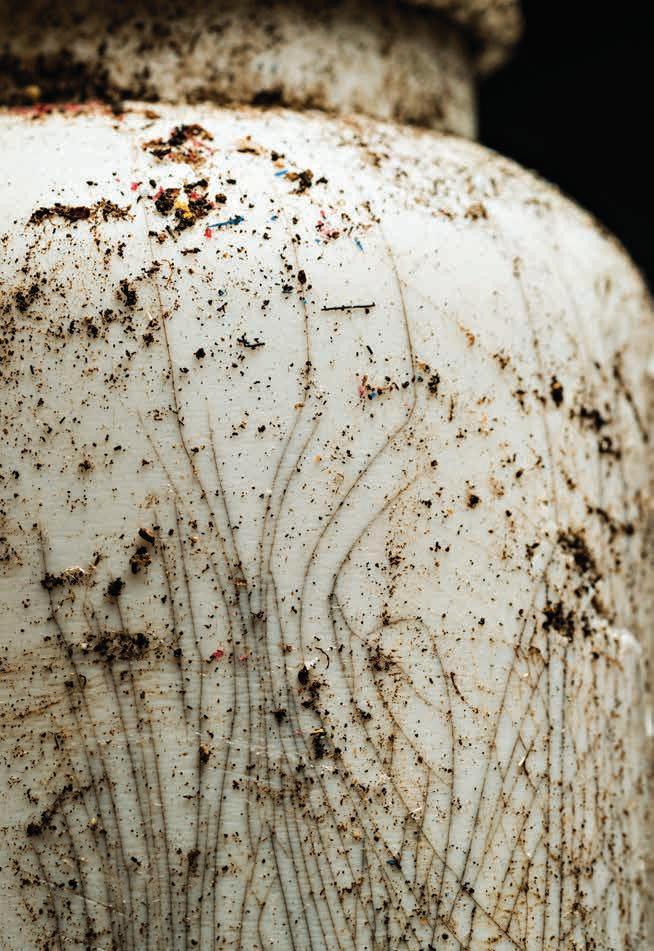
FLUXHAWAII.COM | 61
Marine debris collected from Kamilo Beach, Hawai‘i Island on December 22, 2019.





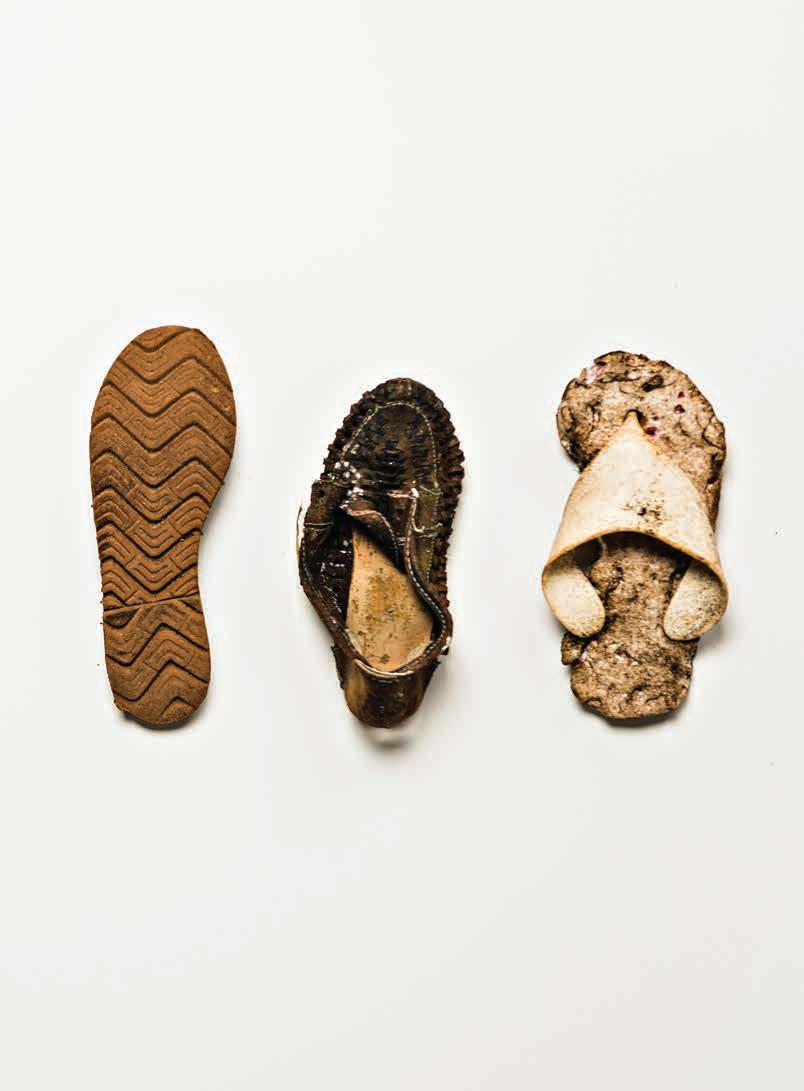


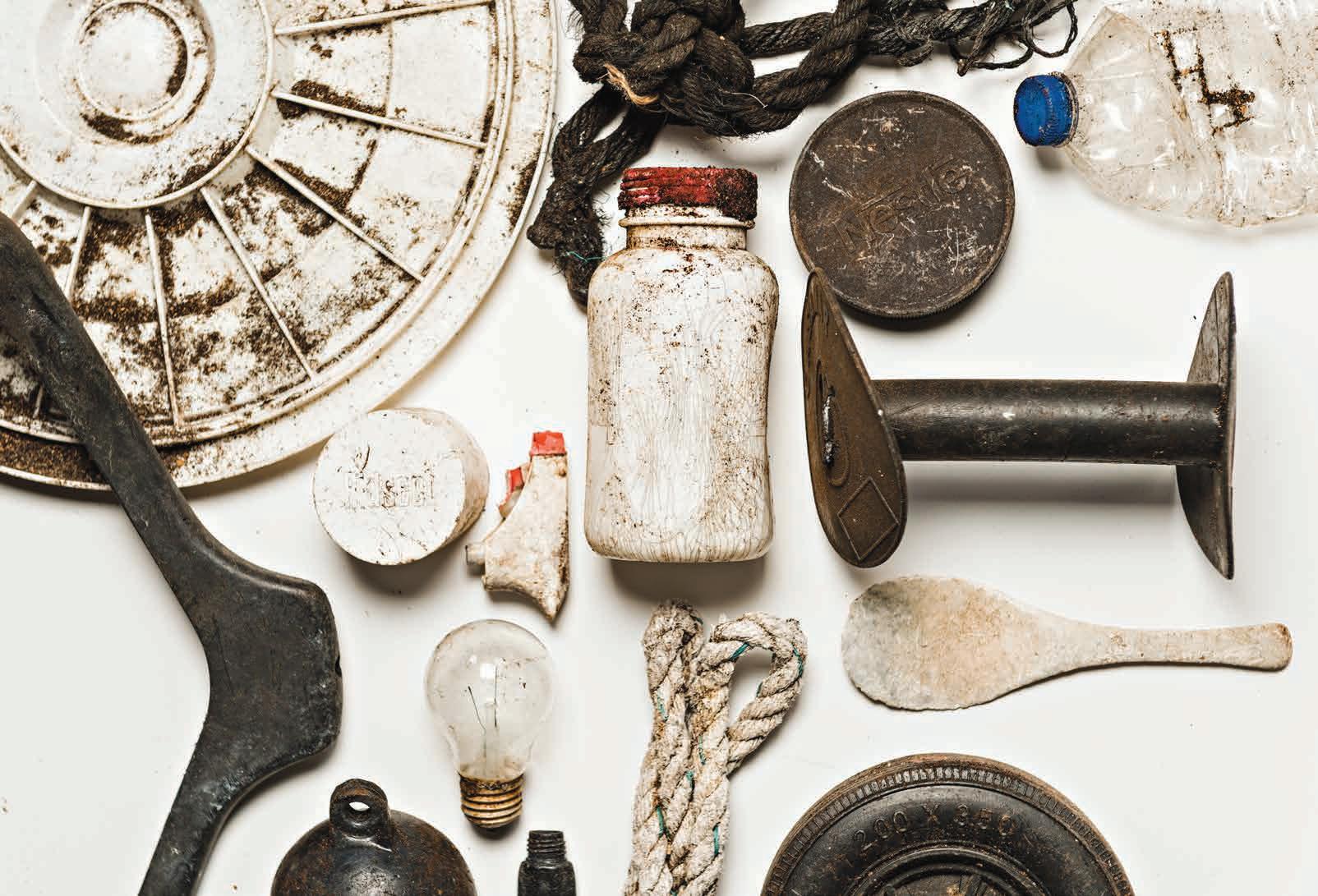

“It’s easy for people to detach from the problem,” says Megan Lamson, president of Hawai‘i Wildlife Fund. “It’s hard for people to relate their everyday lives to the marine debris they’re seeing wash up on the shore.”


of all, our bodies. A new study commissioned by the World Wildlife Fund revealed we may be consuming a credit card’s worth of plastic every week, and not just those of us with a taste for seafood. “We probably ingest more microfibers in five minutes at home than in the flesh of the fish we eat,” Royer says.
Royer’s work in this area follows a groundbreaking study she led during her time at the University of Hawai‘i at Mānoa’s Center for Microbial Oceanography Research and Education, which discovered that plastics increasingly produce climate-warming methane, ethylene, and other greenhouse gases as they degrade, even more so on land than at sea. “To know if it has a significant contribution to climate change, we need better numbers [for the amount, surface area, and types of plastic out there],” Royer says, though she and other researchers are working with the European Space Agency to quantify the problem via satellite. In fact, little is known about the potential impacts of plastic pollution anywhere other than the marine ecosystem, but suffice it to say, plastic in the ocean isn’t the only kind we should be worried about.
Most of us are aware of plastic’s capacity for physical damage—that image of the turtle with a straw stuck in its nose is a hard one to forget—but plastic has also proven to leach toxic chemicals and act as a vehicle for persistent organic pollutants it attracts from the surrounding environment. That’s bad news, seeing as plastics are fragmenting into particles small enough to bypass wastewater-treatment plants and to be mistaken for food by organisms that form the basis of the marine food web; it’s worse news if those microplastics are crossing cell membranes, as Royer’s latest research suggests.

The day after the cleanup at Kamilo Beach, I meet Megan Lamson of the Hawai‘i Wildlife Fund at a cafe in Keauhou. She informs me our group collected 886 pounds of debris, including 60 pounds of “ghost gear,” or abandoned nets, lines, and other fishing equipment. As she explains how the ocean acts like a sorting device—buoyant plastic can travel far distances on the ocean surface, while denser plastic typically sinks at the source—the barista hands us our drinks. To my chagrin, mine comes in a plastic cup. I awkwardly call attention to this fact once the barista is out of earshot, eyeing Lamson’s latte in its ceramic mug. “Guilt is natural,” Lamson says, unfazed. “But it’s important for people to not be so overwhelmed by the scale of the problem that it spurs inactivity. It doesn’t have to be all or nothing, every small step matters.”
Trash consumes at least two-thirds of Lamson’s time as president and Hawai‘i Island program director for the Hawai‘i Wildlife Fund. The organization cleared some
56,000 pounds of it from the shores of Hawai‘i Island in 2019 alone and has been using data from its monthly debris surveys for environmental education and to support prevention efforts like the Styrofoam and plastic bag bans on Hawai‘i Island and Maui. To confront an issue as complex as plastic pollution, I imagine it helps to understand it first.
When it comes to plastic in the environment, misconceptions abound. Overzealous media has painted the Great Pacific Garbage Patch as a nightmarish island of trash twice the size of Texas, but in reality, you might not notice this vortex of plastic waste unless you passed right through it. When long-distance swimmer Ben Lecomte swam 300 nautical miles through the eastern portion of the Great Pacific Garbage Patch in 2019, he and his support crew spotted one plastic fragment every other second and a piece of larger debris once every three minutes on average— hardly the trash swamp of lore but rather a plastic smog lurking below the surface. Yet it’s the image of a floating
68 | FLUXHAWAII.COM
Nearly half of the 300 million tons of plastic we make every year is thrown away after a single use.
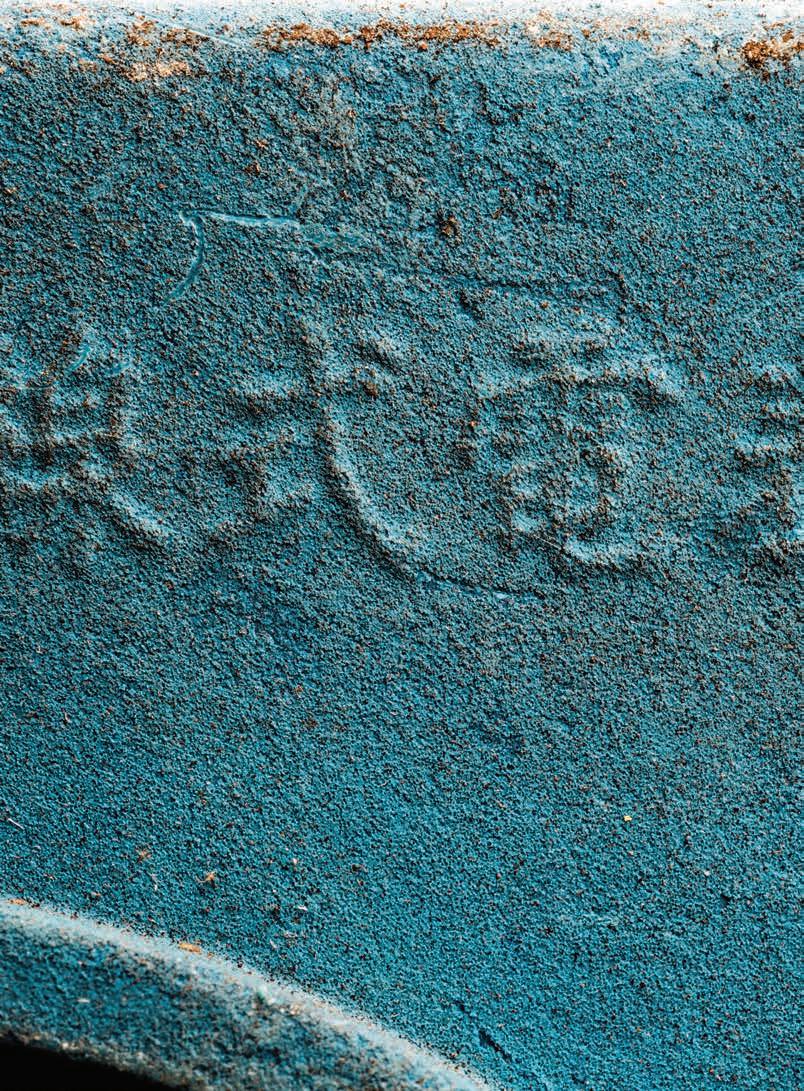
landfill that’s galvanized initiatives to clean up some of the mess we’ve made in the 70 years since we began mass-producing plastic, the most high-profile being The Ocean Cleanup helmed by 25-year-old Dutch inventor Boyan Slat.
Billed as “the largest cleanup in history,”
The Ocean Cleanup is developing the prototype for a passive trash-catching system designed to work like an artificial coastline to collect marine debris drifting on the surface of the ocean. In deploying a fleet of these floating barriers, the organization estimates it will be able to capture, collect, extract, and recycle half of the plastic in the Great Pacific Garbage Patch in five years and 90 percent of the plastic in all of the ocean’s gyres by 2040. The project has roused its fair share of skeptics: conservationists concerned about its impact on wildlife, oceanographers dubious of its efficacy, and plastic-pollution experts who contend that our efforts would be more productive upstream.
“Once plastic gets to the gyres, much of the damage to marine life through ingestion and entanglement has been done,” writes environmental scientist Marcus Eriksen in his book Junk Raft, a chronicle of Eriksen’s three-month voyage from California to Hawai‘i on a raft made of plastic trash. “Plastic is largely not making it to the gyres [intact], unless it’s something designed to last, like fishing gear. ‘Gyre cleaners’ typically underestimate how quickly plastic is torn apart, fragmenting from macroplastic to microplastic. If you’re hellbent on cleaning up the gyres, the science of current movements suggests the best place to be effective is very close to shore or at river mouths. Focus on gyre cleanup and you’ve missed the boat.”
Part of Eriksen’s beef with The Ocean Cleanup has to do with a discrepancy between the 270,000 tons of plastic believed to be drifting in the world’s oceans and the 8.8 million tons leaving our coastlines every year. A 2019 study by Slat and his team accounts for the disparity by proposing it can take decades for plastic
hanging out at the coasts to migrate in measurable quantities into the open ocean. Previous studies, however, have mostly led Eriksen and other experts to presume that the majority of the plastic entering the ocean isn’t floating on the surface like we thought, but landing back on our beaches, being ingested by wildlife, sinking to the seafloor, and splintering into a growing haze of microplastic.
“When I first spoke with The Ocean Cleanup, I had my doubts,” admits Royer, now one of The Ocean Cleanup’s go-to oceanographers and a science advisor to brands and nonprofits addressing the plastic crisis closer to the source, including Parley for the Oceans, Hydroflask, Icebreaker, and European textile giant Lenzing. “But if you think about it,” Royer says, “beach cleaners do the same thing. They remove plastic that’s been trashed. These are different organizations with different purposes, and we are trying to solve the issue from different sides. One organization can’t do it all.”
It turns out The Ocean Cleanup had, in fact, been devising another method to rid the world’s oceans of plastic: The Interceptor, an autonomous, solar-powered river barge designed to catch trash before it enters the ocean. As for where on Earth they plan to put the thing, Slat and his team investigated the world’s top polluting rivers and determined that 1 percent of them are responsible for 80 percent of the plastic entering the ocean by way of our river systems. An earlier study out of Germany’s Helmholtz Centre for Environmental Research attributed as much as 95 percent of the problem to 10 rivers in Asia and Africa.
Numbers aside, both reports have made it easy to point the finger at developing nations, inadequate waste management, and the habits of a growing consumer population. “There’s a lack of infrastructure in general to deal with the waste that we generate today as a society, and that’s what we’re trying to tackle,” stated Jim Fitterling, CEO of plastics manufacturer The Dow
“No species hangs on to its trash like ours does. And now thanks to the resilience of its chemistry, trash exceeds our lifespans.”
Marcus Eriksen, environmental scientist
70 | FLUXHAWAII.COM

 First discovered at Kamilo Beach in 2006, plastiglomerates are plasticrock hybrids formed when molten plastic fuses with natural sediment.
First discovered at Kamilo Beach in 2006, plastiglomerates are plasticrock hybrids formed when molten plastic fuses with natural sediment.

Some experts believe these future “technofossils” will endure in the geological record as evidence of our anthropogenic influence on the environment.
Chemical Company, during a talk at the inaugural Fortune Global Sustainability Forum in China in September 2019.
“Anyone tells you it’s a waste-management problem, they’re lying,” countered Tony Faddell, creator of the Nest smart thermostat, father of the iPod, and one of the early designers of the iPhone. Fadell delivered that zinger at the close of a presentation in which he dismissed recycling, incineration, and even bioplastics as palliative and misguided, proposing instead that products come in consumer-compostable packaging made of biowaste. Still, deflecting blame has proved an effective strategy for those with a vested interest in maintaining the status quo. Anti-litter campaigns of the ’50s and ’60s—initiated largely by plastic industry groups—implored the public, “don’t be a litterbug,” all the while enticing them with the luxury and convenience of products meant to be thrown away after use.
plastic pollution in our own backyards. Coastal advocacy nonprofits like Sustainable Coastlines Hawai‘i and the Surfrider Foundation O‘ahu Chapter have long set their sights upstream, engaging the public through civic action and citizen science in addition to organizing large-scale beach cleanups in hopes that seeing what’s drifting in the ocean will inspire people to change what they do on land. Programs and organizations championing a zero-waste ethos of wasting less, not just recycling more, have sprung up on most of the major Hawaiian Islands, including Hawai‘i Island, O‘ahu, Maui, and Kaua‘i. Together these organizations have succeeded in rallying support for measures like Bill 40, the nation’s most comprehensive regulation of single-use plastics, which was signed into law in December 2019.
Today, single-use plastics account for half of the 300 million tons of plastic produced every year. Considering most of the material value of that kind of plastic is lost after its first use, it’s no wonder that a dismal 9 percent of plastic waste has lived a second or third life, leaving the majority to hang around in landfills or in the natural environment long after use. “We can’t continue to justify bad behavior by upping our recycling programs or relying on an ocean cleanup in the middle of the Pacific. We need to bring the issue home and stop buying this crap in the first place,” Lamson says. “We’re part of the problem, but it’s harder to see. Even the stuff washing in from Asia— where do you think we’ve been sending our trash?”
China was buying 70 percent of the world’s contaminated and poorly sorted plastic waste before its National Sword policy took effect in early 2018, banning imports of certain waste materials, enforcing stricter contamination standards in others, and sending the global recycling market into a tailspin. In Hawai‘i, our distance and small scale puts us at a disadvantage in the recycling game, even more so in a dwindling market. Now that Hawai‘i County has stopped accepting all plastic and most paper recyclables, it’ll be that much harder for us to claim the moral high ground when it comes to waste. In the wake of this development, along with one of Hawai‘i Island’s two landfills recently hitting capacity, grassroots groups are working harder than ever to reduce
But you don’t need to spend the day at Plastic Beach stuffing feed bags with discarded bottles, net, and plastic scraps of every color, shape, and size to realize there are flaws in the system. A good look around at all the plastic filling our supermarkets, pantries, refrigerators, and bathroom cabinets will tell you that. But until the Tony Faddells out there fundamentally overhaul the way stuff is made, used, and packaged, we each have a choice to make (and remake, ad infinitum).
Whether you turn off the tap or go with flow, things have a way of coming around. Back on O‘ahu, on a shoreline much closer to home, I watch the waves carry a flurry of plastic in and out of the tide pools at my feet before finally dragging the specks into deeper waters, out of sight but never truly gone.
Plastic has found its way into sea ice in the Arctic, rainwater samples in the Rocky Mountains, soil and groundwater systems the world over, and, most alarming of all, our bodies.
74 | FLUXHAWAII.COM

FLUXHAWAII.COM | 75
FLUX FEATURE
The Odd Couple
Here is a portrait of an unconventional friendship at life’s end. Meet Richard and Bundit.
TEXT BY TIMOTHY A. SCHULER
IMAGES BY JOSIAH PATTERSON

“I don’t think it’s going too far to say that we love each other.”
Richard Lowe, a 91-year-old retired urban planner, real estate broker, and pianist, is reflecting on the unlikely relationship that has defined the past five years of his life. The other person in this collective “we” is Bundit Kanisthakhon, a 49-year-old architect and university professor who also lives in Honolulu.
“I didn’t know I was going to fall in love with this 91-year-old man,” Bundit tells me later. “But I do love him.”
If it surprises some people that both men, separately and unbidden, use that word—love—it’s understandable. After all, they are neither family nor romantic partners. And yet this is a love story. It is a story about a relationship that expands conventional notions of love and family and friendship. About loving across generations, across race and culture, and across a deepening political divide.
Most of all, it is a story about showing up. Again and again. Occasionally with chocolate cake.
Before I tell you Bundit and Richard’s story— and it’s a story I will never tire of hearing or telling—I have to explain why I’m telling this story at all, how I fit into all of this.
I first met Bundit in 2016, one year after my wife, Allison, and I moved to Honolulu. He and his wife, Janice Li, who is also an architect, run the small but eminently creative office Tadpole Studio, which in 2014 was honored by Dwell for its Honolulu Museum of Art parking attendant station, built primarily out of repurposed bed frames. After I interviewed the couple as part of a survey of contemporary architecture in Hawai‘i, they invited Allison and me over for dinner. Bundit, who grew up in Thailand and is as curious and versatile a chef as he is an architect, made curry and a host of other dishes,
which he prepared one by one in the galley kitchen of his and Janice’s Punchbowl apartment, a spare, concrete-floored loft where every piece of furniture came with a story: the airline beverage carts, the Linda Yamamoto sculpture, the Holoholo cab sign.
Most amusing were the apartment’s white walls, which served as a living and lived-upon canvas. Everywhere were doodles in black china marker: a rough trace of the couple’s dog, Dhut Dhut; a black circle that circumscribed the glow of a lamp, creating the appearance that the wax had corralled the light. The most eyebrow-raising doodle appeared on the wall behind the dining table. It was a cartoon speech bubble. Inside it said, “WE ARE ALL GOING TO DIE.”
My memory of meeting Richard is fuzzier. It was a year or two after that dinner at Bundit and Janice’s, and it must have been through Bundit, perhaps at a party or a lecture at the University of Hawai‘i at Mānoa, where Bundit teaches. I can’t recall the exact moment, and past emails and text messages are no help. In some ways, it felt as if Richard were simply suddenly there, omnipresent. He and Bundit seemed to go everywhere together—to class, to Bundit’s office, to parties and networking events. I began to expect that if Bundit was somewhere, Richard was nearby.
He was eminently likable, just like Bundit. He had a bright laugh, a crooner’s blue eyes. I was shocked to learn that Richard was almost 90 years old; his wry sense of humor and knowledge of current events made him seem decades younger. The only thing that belied his age was the caution with which he moved, taking a flight of stairs one deliberate step at a time, clutching the railing with a feeble-looking hand. Still, he seemed remarkably healthy. He lived by himself and every other week drove himself to his standing gig playing piano at Nico’s Pier 38.
Richard, I learned, had come to Hawai‘i in 1964, part of the team hired to design the Hawai‘i State Capitol. Before that, he had studied architecture at University of California Berkeley, enlisted in the U.S. Marine Corps, and enrolled in the urban planning department at Massachusetts Institute of Technology. His family had been wealthy enough to hire an architect to design their house in Woodland, California, and growing up in such a house had left Richard with an appreciation for design. As a child, he would sketch the mechanical armatures of the carnival rides that each summer arrived in Yolo County to tilt and whirl and pendulum back and forth.
Richard’s other childhood love was music. His mother played the piano, as well as the pipe organ at the Episcopal church down the road, and by age 14, Richard had commandeered his mother’s piano—a Steinway Model M that she had been given as a wedding present in 1917—in order to teach himself boogie-woogie tunes by artists like
78 | FLUXHAWAII.COM

Pete Johnson. When his mother died at age 101, Richard had the instrument shipped from Woodland to Honolulu. It was in Honolulu that Richard met Lorna Whitcombe, who had grown up in Suva, Fiji, the seventh of ten children. They were married in 1966, and had three children, Jennifer, Vanessa, and Jonathan. When Lorna died of cancer in November 2014, she and Richard had been married for 48 years.
In 2007, Richard attended a meetup for local alumni of the MIT School of Architecture and Planning. What happened next could pass for the meet-cute of a Hollywood romantic comedy. The way Richard tells it, it was love—or rather that irresistible blend of attraction and curiosity—at first sight.
Richard was standing on the deck of the Hawai‘i Superferry (the location and reason for the meetup), which recently had begun service between O‘ahu and Maui. Professionals of all ages milled about, making small talk, sipping drinks. He spied Bundit on the other side of the ferry. “I said, ‘I want to know him,’” Richard recalled to me over coffee. There was something about Bundit’s smile, he said, “a certain activity that he exhibited. But we didn’t talk there. We didn’t meet.”
That would happen a few months later, at another MIT alumni event. Richard introduced himself to Bundit. And then? “Bundit fell deeply in love with me,” Richard said. He looked at Bundit across the table, where the three of us were sitting, Dhut Dhut curled up at our feet. Bundit smiled but shook his head, waiting, like a parent patiently expecting a child to fess-up to a fib.
Richard laughed. “I’m lying. I’m lying completely. But Bundit did say, ‘You have sparkling eyes.’ I’d never heard that before. I figured it couldn’t be anything other than a compliment.”
his military general of a father; Richard, a former Marine born to an affluent family in the Sacramento River Valley. They were two men separated by nearly half a century and a fair length of the political spectrum: Bundit, a likely hippie had he been born 20 years earlier; Richard, a member of the Silent Generation who, in 2016, voted for Donald Trump.
These divisions seemed not to faze them. They were inconsequential compared to the main attribute the two men shared, which was an intoxicating childlikeness, a sort of youthful vigor and wide-eyed curiosity that could be fastened onto any person, place, or thing. “He has Peter Pan Syndrome,” Bundit once said of Richard, without irony, seemingly oblivious to his own boyish and rambunctious energy. To watch the two together was to feel as if you were watching a pair of ornery children. They teased one another and communicated in a private language of call-backs and inside jokes.
Richard was Peter Pan, Bundit one of his Lost Boys.
If Bundit and Richard were a pair, a dyad of unusual yet resonant notes, I was an occasional third, completing the chord. Bundit would text, inviting me to meet the two of them for breakfast or lunch. When in 2018 they were going to be featured on a local television program to present their architectural vision for Aloha Tower and Honolulu Harbor, they asked me to join them.
Part of what I liked about spending time with the two was that it felt like being granted access to an alternate reality. Inhabiting Richard’s life, even briefly, felt like getting a glimpse into a world I’d only seen in movies or television, a world of social clubs and high society. He would tell stories of Honolulu in the Swinging Sixties, of his friendship with the artist Jean Charlot, who, according to Richard, practically forced Richard and Lorna to have their wedding reception in his backyard in Kāhala, and of the time he was the entertainment for an art opening, playing piano on an elevated platform outside the gallery, flanked by two nude dancers.
After that, the two stayed in touch. They bonded over a shared interest in music, architecture, urban design. Bundit and Janice occasionally invited Richard and Lorna over for dinner. When Lorna died in 2014, Richard started calling Bundit more frequently. By the time I got to know them, Bundit had given Richard a desk in his office and an email address at Tadpole Studio. When Bundit landed a tenuretrack job at UH, he installed Richard there, enrolling him in the university’s Nā Kūpuna Program, which allows anyone over the age of 60 to attend classes free of charge, and invited him to sit in on his architecture lectures and critiques.
They were an odd couple. Bundit, a Buddhist immigrant from Thailand, whose childhood involved rebelling against
More than the stories, it was the relationship that intrigued me. Never have I seen two men behave more tenderly toward one another. Bundit held firmly onto Richard’s belt when Richard lowered himself into a chair, and slung Richard’s backpack over his own when the two had to walk up a flight of stairs. He cared for Richard through actions but also through knowledge. He knew Richard’s favorite dessert (chocolate cake), his mostused phrases (“Does that name ring a bell?”), his choir schedule. Richard reciprocated. He knew numerous details about Bundit’s life, including from the years before their relationship began. It was if the invisible barrier that typically separates two human beings had dissolved, leaving only permeable space.
80 | FLUXHAWAII.COM
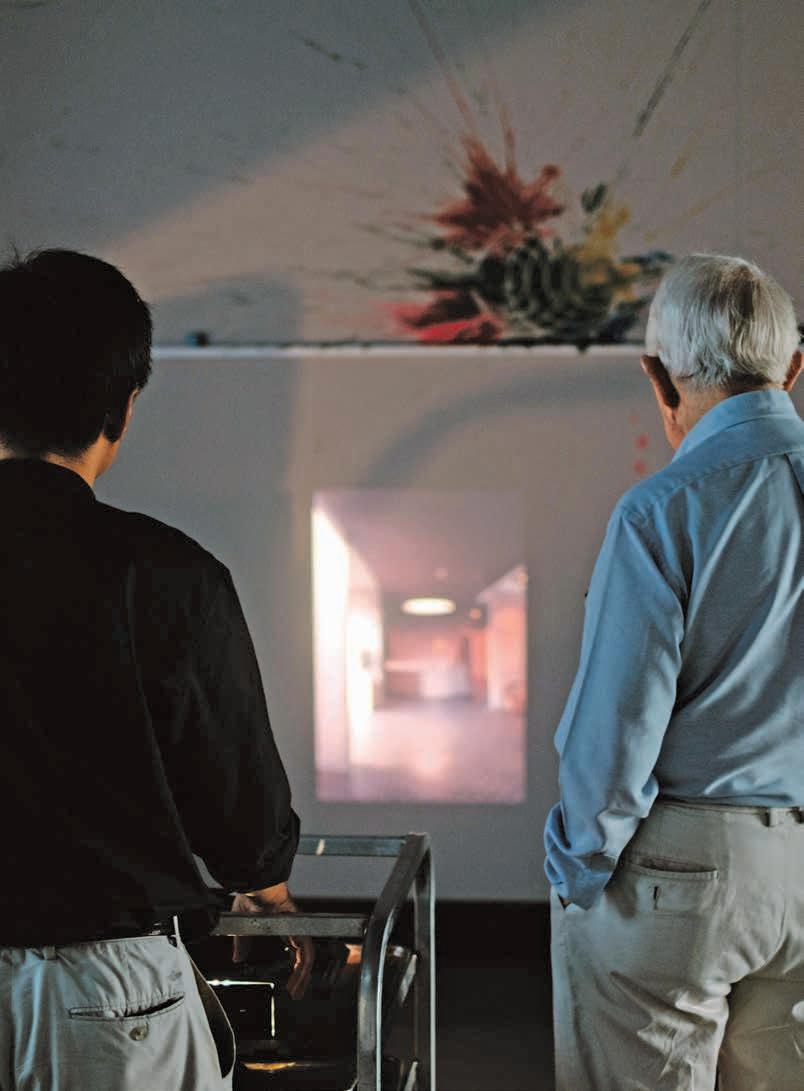
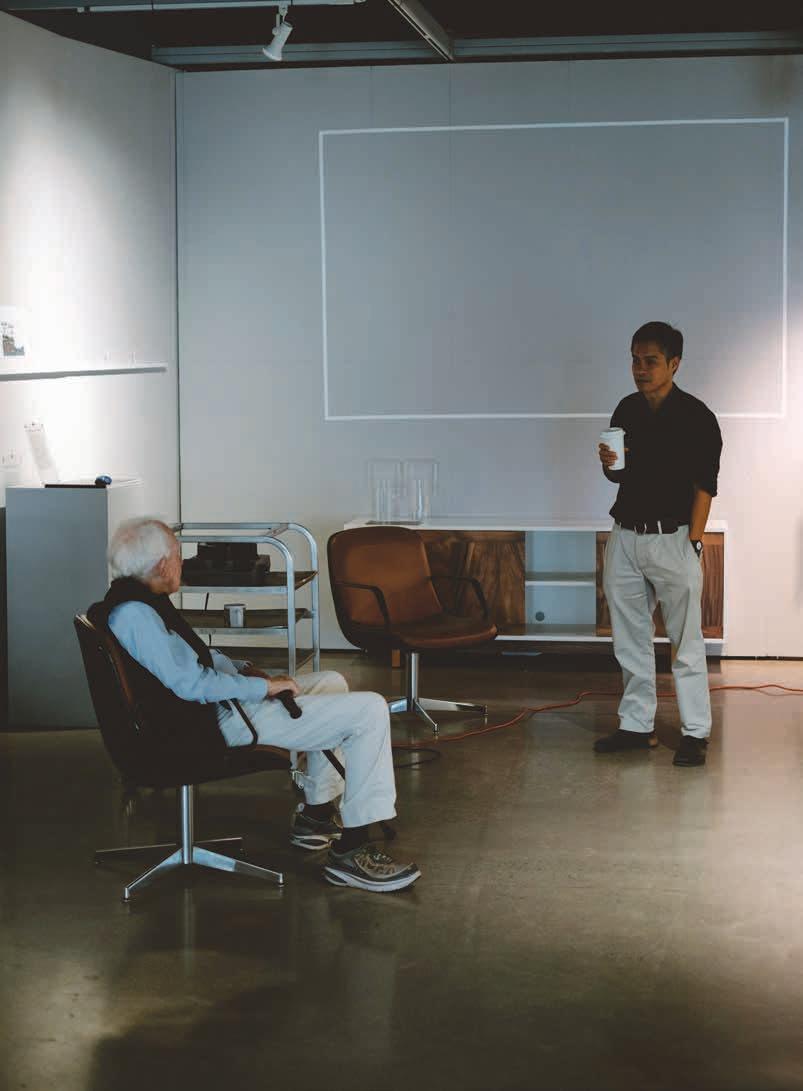

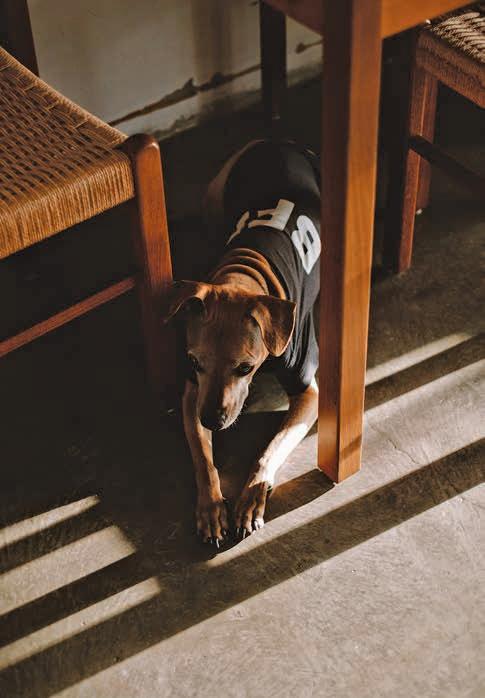
Bundit Kanisthakhon, a Buddhist immigrant, and Richard Lowe, a former Marine, couldn’t seem more different from one another. Yet that doesn’t keep the two men, and oftentimes Bundit’s dog, Dhut Dhut, from spending any given moment together.
For all of these reasons, I rarely turned down an opportunity to see the two of them. There was always an ostensible reason for our meetings—a research project or a magazine article. But lately I’ve wondered if Bundit orchestrated these gatherings mainly for Richard’s benefit, a form of intellectual fitness, creating opportunities for the three of us to spitball ideas and hatch new projects over lunch on the terrace at the Spalding House or a lazy breakfast at the Outrigger Club, living as if we had all the time in the world.
Bundit and I pulled up chairs. After a few moments, Richard woke up. I asked how he was feeling. He smiled weakly. “Better than I should, probably,” he said.
I visited Richard in the rehab hospital several more times. One day, I brought a selection of desserts from my favorite market: a slice of liliko‘i cheesecake, a haupia bar, and a thick wedge of chocolate cake. “That’s his favorite,” Bundit said, pointing to the chocolate cake and grinning. “Right, Rich?”
One day, I got a text from Bundit: “Tim please call me.”
It was Saturday, April 6, 2019. Bundit, Richard, and I had been meeting off and on to discuss a potential journal article, trading outlines and sample works. I assumed the text was about the project, and so I didn’t call back, not for a couple of days. On Monday, I finally got in touch with Bundit, still thinking it was about the article.
“Richard fell. He’s in the hospital.”
It was one of those moments when you feel your senses sharpen, a state of hyper-focus in which everything else seems to blur. Bundit’s voice, normally so light and cheerful, was solemn, laced with concern. He gave me the short version of the story: Richard fainted at the farmers market near his house. He had gone to the emergency room and was now at the Rehabilitation Hospital of the Pacific in Nu‘uanu. We made arrangements to visit Richard in a couple of days.
That Wednesday, Bundit picked me up in his truck, the hand-crank windows lowered in the heat. Dhut Dhut sat between us, his head on my lap. Bundit filled me in: Richard had collapsed due to a weakness in his heart. He had had a pacemaker put in and was, for the most part, stable. But it wasn’t clear whether he would make a full recovery. The biggest question mark was a blood clot in his leg. If it made its way up to his heart, or to his brain, it could kill him instantly.
I absorbed the news. I said I was glad Bundit had called. I definitely wanted to see Richard. Then, for some reason, I told Bundit that I had been considering writing about his and Richard’s friendship. This was true. My wife had been the first to suggest it, and I had been mulling how to approach the subject, but I didn’t have immediate plans to start writing. Movement to my left made me look over. Bundit was sobbing, his eyes red and wet. He said, “I’m afraid it might be too late.”
We arrived at the hospital and took the elevator to the fourth floor. Richard was in a wheelchair, his body slumped forward. He didn’t seem conscious. An IV bag dripped saline solution into one arm, and the left side of his face was covered in a dark gray bruise. I tried to assess the damage—a human instinct, though it is what we cannot see that often poses the greatest threat.
Richard, who looked stronger and more alert than on our first visit but who still needed Bundit’s help getting in and out of the wheelchair, told me how the wait staff at Nico’s had discovered his love for the restaurant’s famous five-layer chocolate cake. After that, at the end of every gig, he would be presented with a giant slice, on the house. It was Bundit bringing him slices of Nico’s chocolate cake in those first few days in the hospital that helped Richard regain his appetite, Bundit told me later.
I remember thinking that Richard looked so happy that day, devouring his chocolate cake, that it felt as if he could have been 9, not 90. Just a little boy eating his favorite food in the world.
It was during my visit with the chocolate cake that Richard first told me about his son, Jonathan. It was just the two of us. Bundit had stepped out to make a call— he was always working in odd slivers and in-between moments, trying to fulfill his obligations even as he spent increasing amounts of time at the hospital, visiting Richard once, sometimes twice a day.
Jonathan had been a waterman. He was strong, bronzeskinned, a lifeguard for the City and County of Honolulu and an avid surfer. But he struggled in school and with his mental health, and eventually, after several doctor’s visits, Jonathan was diagnosed with clinical depression.
One day, in the summer of 1992, Richard and Jonathan were having a conversation. Richard must have expressed concerns, because Jonathan said, “Don’t worry. I would never hurt myself.” The next day he hung himself.
Jonathan was 21 when he died, which means he was born in 1971. If he was alive today, he would be 49, the exact same age as Bundit.
How do we determine our obligation to one another? What is the rubric for gauging our responsibility to those around us? Often, it comes down to blood, that ancestral bond we call family. I am more obligated to help my father than I am a random stranger. Other times, we make vows,
84 | FLUXHAWAII.COM

promising to love one another “till death do us part.” After that, it gets messy. Some pledge allegiance to their countries, others to causes or cults. Some people become foster parents. But what prompts someone to devote themselves to the well-being of a person who shares no blood relation, is not his partner nor legal dependent, and has lived a life as different as conceivably possible from his own?
For Bundit, there doesn’t seem to be a choice. There is only an inescapable, uncontrollable urge to help those around him, to alleviate suffering when it is in his power to do so. Once, he rescued a pair of guppies from a flower vase in one of the university classrooms. He showed them to me, tiny silver missiles darting from one side of the fish tank to the other, and pointed to the female’s bulging belly. “Pregnant,” he said, smiling happily. He described this urge to care for others, human or otherwise, as a mysterious, metaphysical thing. He said it felt as if he had been helped in a former life. Now, he had no choice but to help others. He used the word karma.
The first time Richard called Bundit after a fall in 2015, Bundit responded without hesitation. This was early in their relationship. Lorna had died less than a year earlier, and Bundit and Richard were barely more than acquaintances. When Bundit reached Richard’s apartment, it was a mess. Lorna’s clothes and other belongings were piled everywhere so that even reaching the bedroom was practically impossible. More concerning was what he saw in Richard’s eyes: “He has no sparkles,” he said of that time.
It was Bundit’s turn to feel as if fate was thrusting the two men together. For several years, Bundit had been volunteering with Hospice Hawai‘i, helping patients and their families in the final weeks leading up to a patient’s death. But the conveyor-belt nature of end-of-life care had begun to take its toll. “At hospice, they teach you not to be attached. If they offer you anything, even a glass of water: nope, nope, nope.” After taking Richard to the emergency room, Bundit asked Janice if she would be OK with him using the time he had been spending volunteering to help Richard instead. Today, the men see each other almost every day. They go swimming. They go for walks. They propose speculative planning projects. They’ve broken every rule in the hospice handbook.
Recently, the duo mapped every church in Makiki and began interviewing pastors as part of a project to reintegrate the churches and their dwindling congregations into the neighborhood fabric. That work has led to a project in one of Bundit’s architecture studios, where students are working with a local church
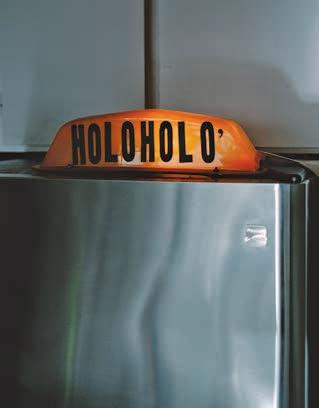
The English language doesn’t seem to have a readily available word to describe a friendship like the one between Richard and Bundit.
to repurpose its vacant school building. Richard is a fixture at the architecture school, serving variously as guest critic and guinea pig, having been conscripted as an archetypal senior citizen for a student’s senior housing project.
I don’t need statistics to tell you that Bundit and Richard are in an almost nonexistent minority. I don’t need to marshall evidence or compile data to demonstrate that men emotionally isolate themselves as they get older or the measurable impact that isolation has on male life expectancy, especially following the death of a spouse.
I don’t need to point to the epidemic of loneliness that doctors and psychologists say has spread throughout much of Western society. And so I don’t need to argue that, for all of these reasons that I have not given, it is not an exaggeration to say that Bundit saved Richard’s life.
86 | FLUXHAWAII.COM

FLUXHAWAII.COM | 87
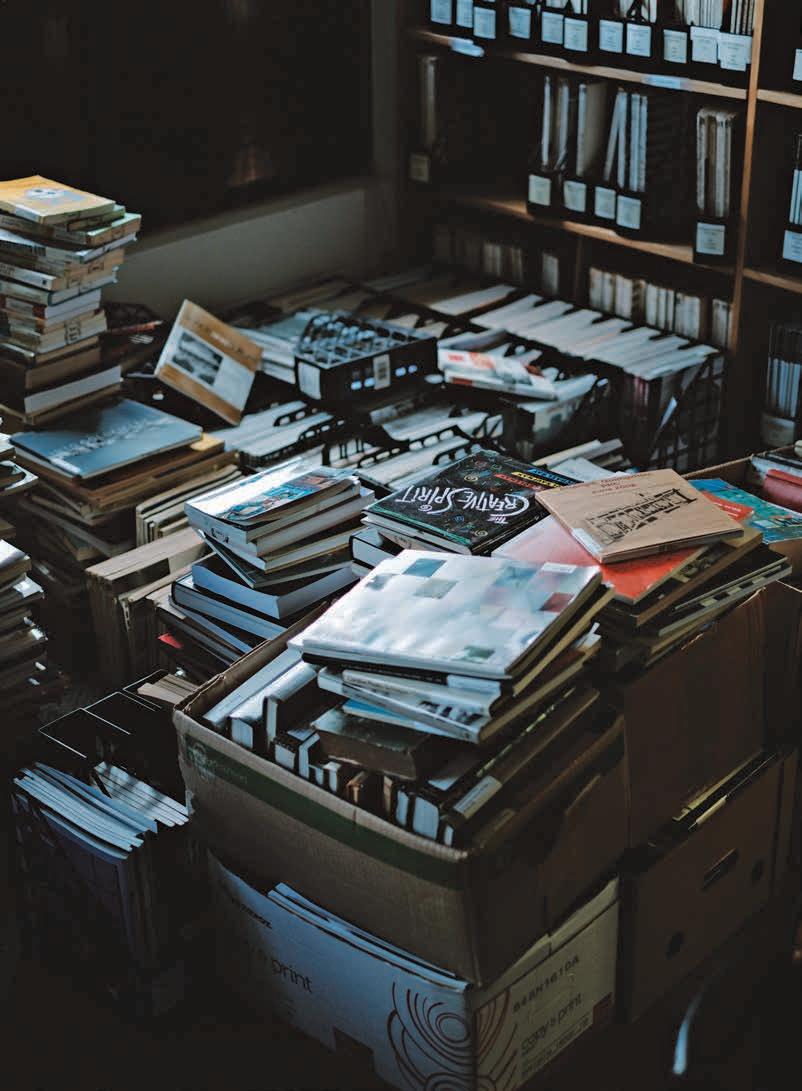


Richard came to Hawai‘i in 1964 with a team hired to design the Hawai‘i State Capitol.
More than 50 years later, and now at 91 years old, he still maintains a wide-eyed curiosity.
I have tried to put language to what Bundit and Richard are to one another. I gather up all the labels that come to mind and try them on one by one. Nothing seems to fit. Friend is too trite, caregiver lopsided and transactional. Partner is more equal but carries romantic connotations, as well as an implicit commitment of the sort that neither man has made.
The computer makes its own suggestions: associate, compatriot, confidante, amigo. Companion comes closest. It comes from an Old French word, compaignon, which derives from Latin: “com” meaning “together with,” and “panis” meaning “bread.” Someone with whom we break bread. Is there a platonic act more intimate or ancient?
Later I learn that companion is a cosmological term as well: almost every star in the universe has a companion star, a twin born at roughly the same time. Relationship, it seems, is not strictly an earthly phenomenon, and I find myself well outside the realm of verifiable facts or even theoretical physics as I wonder: if two stars can be cosmic companions, could two souls?
Ultimately, even “companion” falls short. Perhaps there is no word for what Bundit and Richard are. After all, language, like all forms of expression, reflects the world it attempts to describe. And yet words are also enabling. Perhaps if we had language for this kind of intimate, platonic love, we would see more of it in the world.
After months of in-patient rehab, Richard was discharged in May 2019. He still has the blood clot in his leg, but the doctors are monitoring it. The danger isn’t gone, but it has lessened. He can sit up by himself, walk without assistance (though Bundit lectures him when he forgets his cane), and has even begun swimming again. Richard’s daughter, Jennifer, moved into his Makiki apartment to be closer. Although he’s on a cocktail of medications, Richard said he feels as healthy as ever. The last time I saw him, he sat at his piano—the one he inherited from his mother—and played me one of the nearly 200 songs he knows by heart. He couldn’t remember the name of the tune. But he remembered how it went.
It is inevitable that the inevitable happens. Richard said he doesn’t worry about it. Bundit worries more, mainly because he wants Richard to have the longest, richest life he can. He wants to take Richard to Thailand. He even offered to pay Richard’s doctor’s way if he agreed to come along.
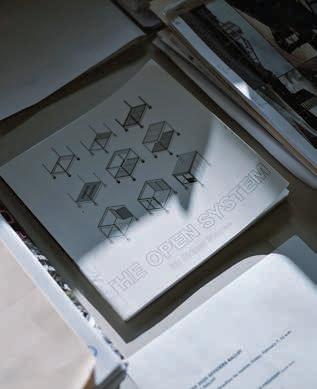
The unlikely pair bond over a shared interest in music, architecture, and urban design.
I’ve spent countless hours with Richard and Bundit in the course of writing this profile, and I’ve wondered how much of my decision to do it came down to simply wanting to spend time with them. Was I, as I suspected Bundit of doing, guilty of engineering opportunities for leisurely lunches capped with slices of chocolate cake? It’s possible. But it’s also possible that my motive was no different than it is with any other story, which is a persistent, quiet curiosity, an unescapable desire to collapse the distance between my experience of the world and that of another person. Which, when I think about it, is also what happens when we love someone.
Not long ago, Bundit and I were sitting in his university office. Dhut Dhut was dozing on his mat. I was describing the linguistic impasse I had reached, the insufficiency I had found in the English language to capture his and Richard’s relationship. Then Bundit offered a descriptor I hadn’t thought to try, a phrase every 5-year-old knows. He only had to say it once for me to know that it was perfect. He said: “When Richard described me to his daughters, he said, ‘Bundit is my best friend.’”
90 | FLUXHAWAII.COM

FLUX FEATURE
Aperture
Everlasting
In capturing imagery with distinct techniques and forgotten formats, three contemporary Hawai‘i-based photographers present deeply contemplative portfolios.
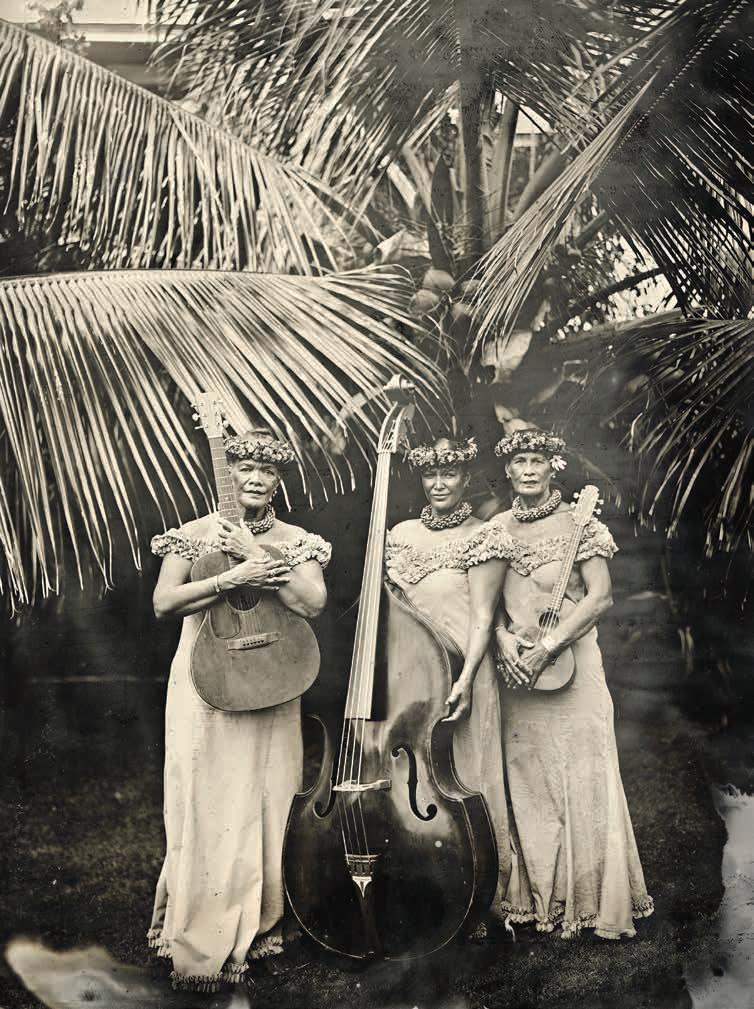 Puamana
Puamana
Kenyatta Kelechi
Contemporary artist Kenyatta Kelechi comme nts on the endurance of Hawaiian culture using a wet-plate chemical process invented in England in the mid-1800s and the preferred method of image-making among itinerant photographers through the early 1900s. Wet-plate technology enabled artists to capture a finely detailed picture in open air, rather than in a studio, to create a stable likeness from which numerous reproductions could be printed, traits that lent to its popularity.
During the time of wet-plate introduction, Hawai‘i’s port cities linked itinerant artists traveling across the Pacific en route to Asia or North America, resulting in a proliferation of wet-plate photographs depicting Hawai‘i’s people and places. Kelechi works in wet-plate photography for precisely this reason. Many of the earliest photographs of Hawaiian people and cultural practices, such as hula, were made using a wet-plate process like ambrotype or tintype. Kelechi utilizes the medium of his artistic predecessors as a pathway to understanding his own Hawaiian identity by researching the existing image troves, but altering the methodology associated with early photographers in significant ways. His approach intentionally subverts the problematic history tied to 19thcentury photographic portraiture. The camera, perhaps more so than any other artistic tool, has been considered a mechanism of colonization because of its association with exploitive 19th- and 20th-century anthropological projects, in which artists and researchers financially capitalized on staged and artificially historicized images of Native peoples. Those images, many of them wet-plates, circulated misrepresenations made by non-native photographers of native peoples, reinforcing racialized stereotypes while situating Native people in the past through a romanticized black-and-white image.
Unlike those 19th-century itinerant artists, who were not from the communities they photographed, Kelechi’s
TEXT BY HEALOHA JOHNSTON
Hawaiian geneology connects him to Moloka‘i and O‘ahu. His compositions often feature groupings of people instead of a solitary figure, a subtle departure that moves away from historical wet-plate portraiture aesthetics, which typically featured a single individual, to show the perserverance and abundance of cultural activity. With Kelechi, decisions about attire are left to those being photographed—a deliberate gesture that returns agency to the sitter—and people are pictured in the environs of their 21st-century daily life. Part chemistry, creativity, and still-documentary, the final images surface after Kelechi has refined his emulsion recipe to produce the desired tonality in the picture and developed a relationship with the people he photographs.
The wet-plate process is laborious and technically involved when compared to its digital counterpart. Regardless, it remains Kelechi’s medium of choice. He explains: “The people in the photos are so process-based and have committed their life to refining their practice. I would feel awkward, almost like I am robbing them, if I were to produce a digital image. It is not a fair reciprocity. The time-intensive and methodical nature of the wet-plate closely parallels the approach of those in the pictures.” Kelechi aligns different forms of knowledge to make wetplate photography an expression of gratitude to those in the photo, and a record of contemporary culture in Hawaiʻi.
Healoha Johnston is a curator of Asian Pacific American women’s cultural history at the Smithsonian Institution. Her research interests include exploring connections between historic visual culture and contemporary art with a particular focus on the socio-political underpinnings that inform those relationships. As an art historian, Johnston has curatorial experience working in contemporary art galleries, arts and cultures nonprofit organizations, NOAA’s Pacific National Monument program, and the Honolulu Museum of Art. She lives in Kaiwiki, Hawai‘i.
94 | FLUXHAWAII.COM
 Fukumitsu ‘Ohana
Fukumitsu ‘Ohana
 Brandon and Kiki
Brandon and Kiki
 McDiarmid ‘Ohana
McDiarmid ‘Ohana
 Amelia and Brandon
Amelia and Brandon
 Reanna
Reanna
Kiki Williams
The start of 2020 has already been a busy year for artist Nakemiah Williams, or Kiki, as she is known by her community and peers. In January, she had won the Student Award for Excellence in the Honolulu Printmaker’s 92nd Annual Juried Exhibition at the Honolulu Museum of Art School, also known as Linekona. In the same week, she participated in Person/ Persona , a group photo exhibition at Ars Cafe. All of this while preparing for a group show at Treehouse and beginning a new body of work for her senior thesis show just a few months away.
Originally from New Jersey, Williams spent 16 years in the U.S. Army, which took her to Fort Hood, Texas; Seoul, Korea; and finally Honolulu, Hawai‘i, where she arrived in 2013. Not long after touching down in Honolulu, where she and her husband were to spend their next duty assignment together, Williams was sent to a private facility in Utah for women who had been sexually assaulted by fellow military service members.
It was there where Williams began to address her post-traumatic stress from being raped while she was stationed in Seoul, she told me. The incident had left her with crippling depression, suicidal tendencies, and speech loss. By meeting other women who had similar experiences, she found connection amid her pain. Utah was where she first understood that art and creativity could be a pathway for healing, an avenue to communicate what she couldn’t vocalize.
After three months, she returned to Honolulu. Soon after, she decided to retire from the military. For Williams, Hawai ‘i was where she was able to learn how to be a civilian again and find a new purpose through her art studies at Honolulu Community College. “Hawai ‘i was a refuge for me,” she says. “It is where I found my voice.”
Transferring to the University of Hawai‘i at Mānoa for a bachelor of fine arts degree, Williams soon found her creative stride within the medium of the Polaroid. Today, she works almost exclusively in this manual format, using manipulation techniques—scratching, subtracting, adding, rearranging, and decaying through a water emulsion process—to create new compositions. When we met for an interview at Linekona, she showed me her Polaroids, revealing the careful incisions she made at the tops of the photographs to separate the film from its protective layer. Her process is tactile. Physical. She suspends the film in water, playing with its processing chemicals—sometimes adding the image layer from one Polaroid to another—to manipulate its look.
TEXT BY JOSH TENGAN
“In my art, I have control. It’s my voice. It’s my body. It’s the message that I want to send out,” Williams said. Her practice is a way of reclaiming her agency.
Published here are altered Polaroids from two bodies of work. “The Spaces You Left Empty” is dedicated to Williams’ husband, who is stationed in Washington. She shot vignettes of the home they shared together, creating haunting compositions depicting scenes in domestic spaces—a dinner table, a shoe rack, a closet, a toilet. Scratched out, removed, and replaced are the spaces left void after her husband’s departure. “Stitched” introduces the element of thread, which Williams sewed on by hand and with a machine. These Polaroids depict models in the nude, predominantly women, including the artist. Their faces are scratched and obscured beyond recognition. The thread can be viewed as connective, holding the body together and covering sections of the body like bandages. It can also be read as pathways reaching outside the confines of the frame. For Williams, depicting the nude form, and becoming a subject in her own work, was a means for making herself and others vulnerable, as a way to form connections and find beauty in painful realities.
In the gallery at Linekona, Williams shared her story with me as we stood in front of her enlarged digital prints. Experiencing her work in this format is very different. While it was much easier to see the fine detail of her process, the intimacy of scanning every corner of each 3-by-3-inch frame is lost.
But then the docent overseeing the show, an artist and longtime member of the Honolulu Printmakers, joined in the conversation. Seeing this as an opportunity to learn and speak more eloquently about Williams’ work, he asked probing questions about her process and subject matter.
She opened up willingly.
And then, in a moment of relation, he opened up too, saying that having been sexually abused as a child, he was able to process his own pain through writing.
Perhaps there is some truth to adages about time.
Time heals the pain.
Time is a gift.
Or maybe it’s more about how we use our time, which determines whether or not we can truly heal and be a gift to others.
Josh Tengan is a curator and writer from Pauoa, Kona, O‘ahu, with a focus on contemporary art from Hawai‘i, Moananuiākea, and its diasporic communities.
100 | FLUXHAWAII.COM

Featuring the series “Stitched” and “The Spaces You Left
Empty”


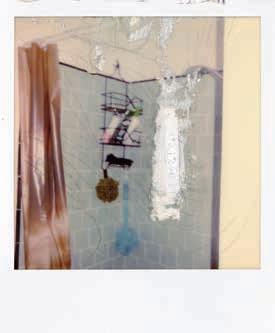
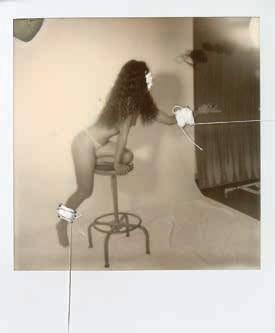

“In my art, I have control. It’s my voice. It’s my body. It’s the message that I want to send out.”—Kiki Williams, on her practice.
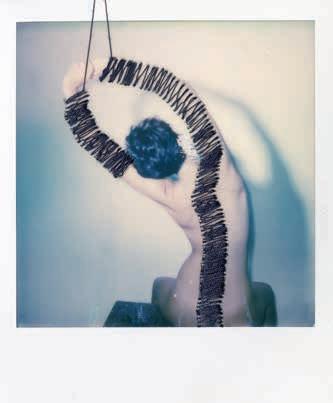
For Williams, depicting the nude form presents vulnerability as a way to form connections and find beauty in painful realities.
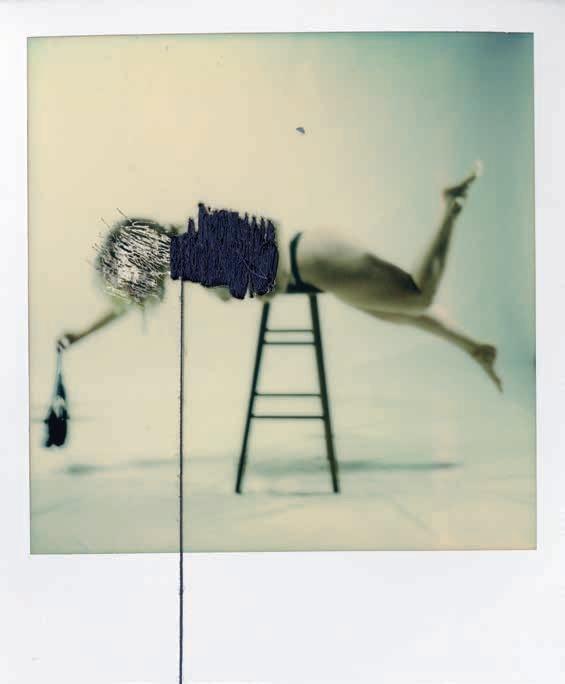
Mark Kushimi
Because we are animals, we respond viscerally to landscapes and oceanscapes. At their best, these vistas seem to transcend time. We’re soothed by a horizon stretching from the periphery of one eye to the other. That is what happens in the “Forever Drowning” oceanscapes by Mark Kushimi. Rarely are images of nature as distilled as they are in this photographic series.
The oceanscapes stand apart in Kushimi’s oeuvre. Since his early days as a designer spearheading the ethic of Contrast magazine, his design sense has felt internationally informed, while his subject matter and attitude are tenaciously local. Visually, whether portraits or cityscapes, his images are connected by tight composition. See his sequences of building facades or outdoor staircases, for instance. Often, inside the tight composition, Kushimi’s urban images recall the relaxed modernism of Honolulu in the 1950s and ’60s.
“Forever Drowning,” however, subverts customary metrics of photography, like composition and even subject matter, with sheer directness. The oceanscapes catapult us into metaphysics. They seem, with their Zenlike reduction, to position us in the flow of time. How simple, these nearly centered horizon lines! Actually, no horizon is simple, because of who we are now.
This is why an unbroken horizon can say so much: We know there is history and we know there are limits. We recognize national boundaries as well as cultural and ethnic distinctions that introduce political, social, legal, ecological, and other considerations to natural spaces. We know as well that there are environmental limits. We understand the fragility of natural systems we are a part of, and we accept our culpability in the disappearance of that world. Natural vistas inevitably, and they must, call out these considerations.
TEXT BY NOE TANIGAWA
In 2020, we have deconstructed everything we can think of—the problems and the solutions—and often found the constituent parts reeking. Recycling, for example, we thought it was working, now that seems delusional. Veterans of postmodernism, we look at Kushimi’s glowing, starkly simple ocean images and wonder, Is this ironic? Where are the fast food wrappers? Is he trying to get away with something? Do you sense irony or cynicism in Kushimi’s work? No?
In that way, his viewpoint is essentially postpostmodern, or even meta-modern, and feels so right for this time in Honolulu. The 21st century’s metamodernist project, after all, is to reboot in new ways toward a less fragmented future. Not prescriptive, Kushimi’s is a basically integrative aesthetic. In this series, reduction to the horizon, and a glow around the horizon, says so much.
For the moment, the oceanscapes are sunsets, taken with a Hasselblad 120mm film camera. “I’ve taken sunrises before, but they have a different feel,” Kushimi says. “For now I like the idea of diminishing light. The darker it gets, the more I see.”
What could inform a sunrise picture, one could ask? What would make such an image appropriate? Maybe Kushimi has to feel it. Once we’re living a little closer to what we need daily, when we’re really feeling our place in the planet, maybe the sunrise idea will coalesce. Until then, Kushimi has pretty much captured our collective horizon heading into the third decade of the 21st century.
Noe Tanigawa is from Wailupe Valley, O‘ahu. She is an artist and a journalist with Hawai‘i Public Radio. She is online on Instagram at @noe.tanigawa.
106 | FLUXHAWAII.COM
 “Pipeline”
“Pipeline”
 “Chuns Reef” (cropped)
“Chuns Reef” (cropped)

 “Bowls”
“Bowls”
 “Tracks”
“Tracks”

WE ARE A PLATFORM FOR STORIES NMG Network.com
Inside a Decade of Capturing the Current of Hawai ‘ i
| GUEST EDITED BY LISA YAMADA-SON |
TEN-YEAR ANNIVERSARY
SPECIAL SECTION:
A f ield must be in constant f lux to be able to “survive.”
116 ON MEDIA
Lisa Yamada-Son tracks the evolution of how audiences stay engaged and informed.
124 ON SURFING
Beau Flemister replays the sport’s greatest hits.
128 ON CONSERVATION
Anna Harmon surveys our eternal relationship to the natural terrain.
134 ON EDUCATION
Eunica Escalante reviews the changing state of the public school system.
140 ON GENDER
Matthew Dekneef celebrates the expanding lexicon around identity.
ten-year anniversary
est. 2009 10
On Media
FOUNDER, FORMER EDITOR-IN-CHIEF
TEXT BY LISA YAMADA-SON
It was the summer of 2008. With a journalism degree from Pepperdine University in hand, I returned home to Honolulu, blissfully unaware of the financial collapse happening around the nation. I had managed to accumulate a few good press clippings: features from the college paper, a few profiles from the magazine at which I interned, a 2,400word feature—complete with infographics—in a local newspaper, for which I was paid $100.
I loved magazines and the stories they told. I loved that one writer could scratch the surface of a story—simply report the facts—and another could dig deep to discover undulating wells of complexity and human emotion, as Truman Capote did when he spotted a tiny article in The New York Times in 1959 that formed the basis for his book In Cold Blood . I loved that you could get up close to the rich and powerful and ask probing, private questions without shame or restraint, as masterful interviewer Dominick Dunne often did in the pages of Vanity Fair. In New York magazine, one of my favorites at the time, I loved that through words on pages I could get a sense of the city’s soul, get to know its characters, and find commonality with the issues they faced, despite being 2,000 miles away.
I longed for a medium in Honolulu that would tell such stories, one that would peel back the picture-perfect façade of Hawai‘i to reveal a wartsand-all look at our culture—one that islanders loved nonetheless. So, with very little training and an investment from my parents, I decided to start my own publication, because I was young, naïve, and, well, nobody ever told me that I couldn’t. Flux, as I decided to call it, would reorient Hawai‘i as a place of influx—a destination frequented by millions of people every year—as well as a place in constant flux.
In those early years, most people assumed print media was on its way out, choked of its lifeblood by the rise of digital media. But to me and the few independent publishers in Hawai‘i who rose up around 2009, it seemed we were in the halcyon days of print. There was Chromatic, a fashion quarterly launched by bridal guru Julie Aragaki; Contrast, an arts title favoring photography and white space launched as a labor of love by a group of guys including designer Mark Kushimi, writer Daniel Ikaika Ito, and surfer Jason Shibata; Innov8, an image-heavy inflight magazine for local carrier Go! Airlines, published by Nella Media Group founder Jason Cutinella. In the years that followed, there would also be Abstract, a training ground of sorts for student designers and writers; Summit, a would-be Monocle for Honolulu; and Trim, an eye-pleasing dip through surfing’s archives.
Mostly, the establishment viewed us upstarts with casual dismissiveness. O ‘ ahu Publications, whose loose-leaf newspapers, including its flagship Honolulu Star-Advertiser, are printed in its sprawling 152,000-square-foot print production facility; Aio Media and its umbrella of local-interest titles, including Honolulu magazine, which bills itself as the oldest magazine west of the Mississippi; Hana Hou!, the inflight for Hawaiian Airlines long considered the benchmark of editorial storytelling in Hawai‘i; Hawaii Modern Luxury, the fill-in-the-blank outpost of the national media company of the same name—to them, we were but flies to shoo away. “Who even reads Flux anyway?” a publisher who will go unnamed once scoffed in an editorial meeting after one of its editors commented on the diversity of subjects covered within our pages. Going into the next decade, as we fought for the advertising scraps left in the wake of larger media buys, the


industry was forced to grapple with shifting reading habits, new technology, and the specter of social media. In 2010, more than 450 people found themselves out of work after the merger of the Star Bulletin and the Honolulu Advertiser. A year later, the newly formed Honolulu Star-Advertiser introduced a paywall that put much of the content on its website under lock and key, making a newspaper already deemed irrelevant by anyone born after 1980 even more so. (The online news site Honolulu Civil Beat, launched in 2010 by billionaire eBay founder Pierre Omidyar, pulled no punches in its critique of the Star-Advertiser’s paywall and promptly cut its online subscription price in half.) The bloodletting was a sign of the years to come: In the 2010s, more than 1,400 cities and towns lost their local newspapers, according to the Associated Press, which labeled the mass closures the death of local journalism. This toll included the Honolulu Weekly, an alternative voice intended to fill the reporting gaps left by the city’s dailies, which publisher Laurie Carlson announced would publish its last issue in 2013 after 23 years in print.
As newsprint contracted and advertisers became increasingly interested in targeted audiences, niche publications gained a firm foothold. In 2011, Jason Cutinella and I partnered, and Flux came into the fold of Nella Media Group, which, in addition to Innov8, had dipped its toes into in-room hotel media. In the years that followed, we launched title after title at breathtaking speed. We secured hotel contracts as a result of our intense preoccupation with design, paper stock, and unique publication dimensions until we became one of the largest hotel publishers in Hawai‘i; we championed LGBTQ media as same-sex marriage became legalized in 2013; we forged partnerships with developers to pipe original content into the sought-after luxury residential market. By 2016, we had about a dozen print titles under our umbrella.
As the years went on, many of our print brethren from 2009 faded into obscurity or irregularity, hanging on by the passions of remaining founders. Jason and I discovered
that a single title could seldom support itself on its own. Instead, it often needed to be part of a larger conglomerate in which more financially successful titles could carry others (at Condé Nast, for instance, Vogue, The New Yorker, GQ, and Vanity Fair account for more than 60 percent of the company’s total revenue), or it needed to obtain a large infusion of cash (Pierre Omidyar with Civil Beat) or the financial support of some other corporation (Vice and its $25 million Intel advertising partnership).
Nella Media Group had survived by capturing significant market share, with a variety of titles that helped support each other. But publishers both large and small were forced to evolve beyond the traditional notion of simply writing stories for print and online, scrambling to find creative ways to continue engaging advertisers. “We’re not in the business of keeping the media companies alive,” Trevor Edwards, Nike’s then-corporate vice president for global brand and category management, had told The New York Times in 2007. “We’re in the business of connecting with consumers.”
Connecting with consumers meant that media companies became responsible not just for covering cultural events but also for building them. The linchpin of event sponsorship—the ubiquitous logo placement— would no longer do. Advertisers instead sought immersive moments that would tug on the heartstrings and inspire “FOMO” in legions of social media users across the world.
“Experiences” became inescapable. There were brunches in far-flung fields and fashion showcases in bars. There were design talks and architecture walks, pop-up shops and pop-up dinners. In 2014, we shipped an entire store of Hawai‘i goods across the country to New York for a three-day pop-up shop, then one-upped ourselves in 2017 by going international, to Sydney, Australia. Honolulu magazine got ambitious in 2015 with a series of ill-fated fashion shows that took over the cavernous Hawai‘i Convention Center in an effort to replicate New York Fashion Week in the islands.
All the while, social media use continued to spread rapidly. In 2016, Instagram’s user base skyrocketed to half a billion people. Facebook grew steadily before hitting 2 billion users in 2017, with Google-owned YouTube trailing closely with 1.5 billion users. Anyone— including advertisers themselves—could produce high-quality content, bypass traditional media, and stream it to users around the world. To stand out, companies churned out “native advertising” with storytelling not unlike the kind you might find produced by the media houses themselves.
Nowhere was this overlap of storytelling and advertising more evident in Hawai‘i than in banking. You’ve seen the commercials, which began to air in 2015, one nearly indistinguishable from the next. There, among a blogroll of entrepreneurs on Hawaii National Bank’s website, are Sig and Kuhao Zane, describing how hula keeps them grounded in both life and business; there are Joe Serrao and Nāpali Souza from Salvage Public, recounting how First Hawaiian Bank helped them expand to the Japanese market; there’s Manaola Yap in an impressive two-and-a-half minute spot that starts off slow and cinematic against the lush green of Hawai‘i, gradually building with pulsating energy until we find him on the runway at New York Fashion Week. “Whatever we need to do to help them get … as high as their dreams will take them, that’s our goal,” narrated Winfred Cameron, American Saving Bank’s business banking officer.
Despite the success of native advertising campaigns, a 2016 Nielsen report found that marketers who distributed their content in partnership with publishers saw, on average, a 50 percent higher brand lift than those who published content on their own. To meet this need while still maintaining some semblance of editorial integrity, media organizations launched marketing divisions to capitalize on the growing desire for branded content—that is, editorial directly funded by advertisers.
T Brand Studio by The New York Times ran a
video series highlighting four titans of art “paid for and posted by” Tiffany and Co.; The Atlantic’s marketing team put together an extensive feature documenting the IsraeliPalestinian conflict, made possible by Netflix’s Israeli thriller Fauda ; the Washington Post’s WP Brand Studio partnered with healthcare service provider Optum to detail America’s growing opioid epidemic in an immersive, data-driven feature. In Hawai‘i, companies like Oahu Media Group (Oahu Publications) and Library Creative (Aio Media) scrambled to follow suit.
In 2016, Douglas Holt asserted in a Harvard Business Review article that despite investment in branded content, the result has had very little payoff with consumers. He attributed this to what he calls the rise of “crowdculture,” which refers to content driven by people rather than by brands. “Historically, cultural innovation flowed from the margins of society—from fringe groups, social movements, and artistic circles that challenged mainstream norms and conventions. Companies and the mass media acted as intermediaries, diffusing these new ideas into the mass market,” he wrote. Social media changed that by “binding together communities that once were geographically isolated, greatly increasing the pace and intensity of collaboration.”
From motherhood to muk-bang , fuming incels to funny cats, social media allowed global communities to congregate around topics both domestic and dangerous. Out of these communities arose whirlwind personalities that championed individual causes and dealt in influence—a new form of currency that was valued by how much power one wielded online—the most notorious of which included the famous-for-being-famous Kardashian family.
And yet, much of the influencer market was like the Wild West. In 2017, the Federal Trade Commission, which works to protect and educate consumers, issued letters to 90
The dearth of cultural evolution will come when we, as citizens, bend to the whims of capitalistic impulses, crowd approval, and self-interest.
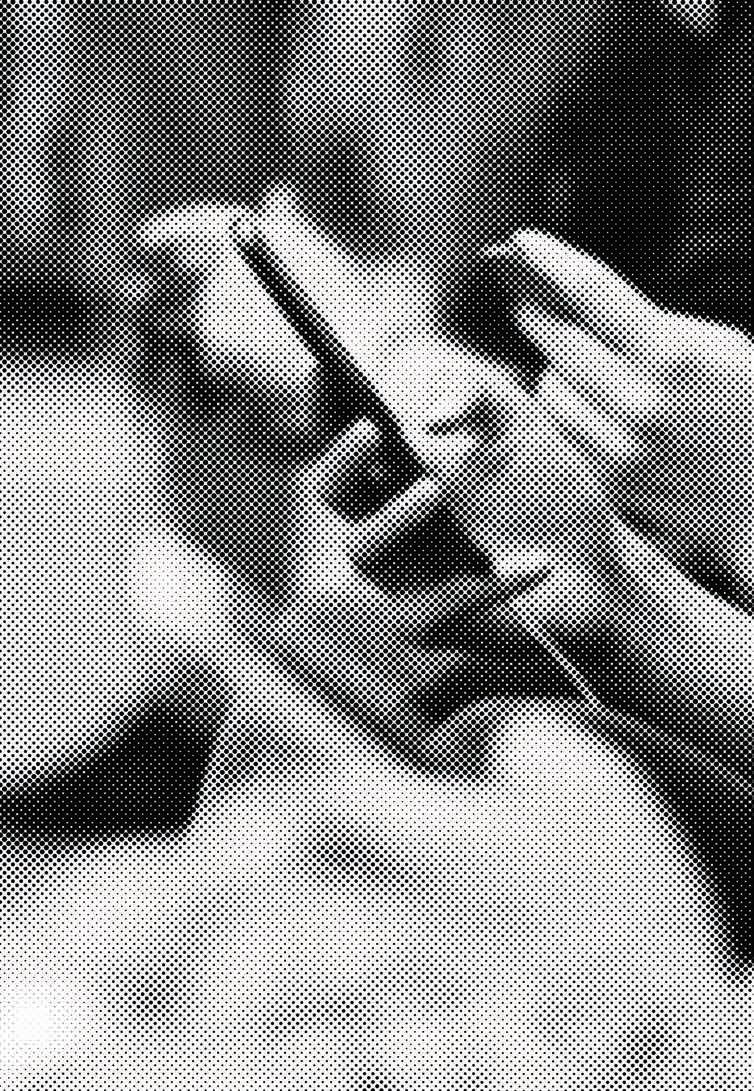

influencers after estimating that more than 90 percent of top celebrity endorsements were violating FTC regulations on proper brand sponsorship disclosure, meaning viewers had no way of knowing whether an influencer was paid for his or her endorsement of a product. Later that year, Hawai‘i locals had a good chuckle after Mercedes-Benz posted a photo on Instagram that featured its GLC Coupe parked in front of Chinaman’s Hat on O‘ahu’s east side. Its caption was purportedly written by North Shore photographer and influencer Brooke Dombroski (who the car company had tapped to document and post about a drive along the coast), although given its erroneously tagged location and peculiar phrasing, it could just as well have been written by a Russian bot: “This photo was captured at our first stop: Ala Moana Bowls, a nice expert spot for Big Waves right in Honolulu.”
In 2018, Nella Media Group evolved to become NMG Network, in a pivot toward video content. Working together, Jason and I had figured out a few keys to success in media. Like the dynamics of a good marriage, we let the other focus on each’s respective strengths: his in sales and development, mine in editorial. Jason would reach for the sun; I would gently pull him back. It was this constant push and pull that made us elastic—that ever-present tug that stretched us to our limits, forced us to evolve, and enabled our company’s nimble success. To quote David Crow in Visible Signs: An Introduction to Semiotics in the Visual Arts : “A field must be in constant flux to be able to survive.”
In the last few years, most of the rapid growth of social media in the United States has largely leveled off, according to Pew Research. What’s more, four years ago, Americans widely believed technology companies made a positive impact on society, but today, that number has declined 21 percentage points, to just over half of Americans, Pew data showed in 2019. In 2018, a group of Stanford students, at odds with the addictive qualities of smartphones, petitioned Apple for an “essential model” that would limit a phone’s features to allow for calls, texts, mapping, and camera functions
only. Earlier this year, The New York Times published an article under the headline, “‘Techlash’ Hits College Campuses,” documenting the growing mistrust of Big Tech by college graduates.
Despite Americans’ changing attitudes, it can still feel like we’re scrambling to keep up with technology in what often feels like a race to the bottom, where everyone’s a loser. We are more informed citizens than ever before, and where does that leave us? “Who knew all of human knowledge could make people dumber?” comedian Ronny Chieng quipped on his Netflix special, Asian Comedian Destroys America! The dearth of cultural evolution, it would appear, will not come on the doorstep of technology’s ascent or with social media’s incessant creep; it will come when we, as citizens, bend to the whims of capitalistic impulses, crowd approval, and self-interest.
In Flux’s first year of print, and even in the years that followed, many of the ads that ran in our issues were given away for appearance’s sake. In 2014, we landed our first luxury client, Tiffany and Co., which committed to an annual back-cover ad buy—a spot it holds today. Afterward, luxury clients came tumbling in: Chanel, Gucci, Hermès, Fendi. I knew we had officially “made it” when one Instagram user accused us of being “fancy magazine people.”
Back before the launch of Flux, we had hired a market research firm to see where the demand might lie for a product like ours. Responding to a question about the need for a medium such as ours, one interview with a stakeholder at an art gallery was most telling: “You know when your city has achieved critical mass in cultural events, museums, in publications. … We need to have the other voice.” Nella Media Group has been one of the fortunate few that has achieved success in what has been a brutal decade for traditional media. And yet, I can’t shake the feeling that the environment today feels a bit like it did in the years before 2009’s Great Print Wave, when a group of bright-eyed 20- and 30-somethings felt that the stories yet to be told were as numerous as the stars in the night sky, when it felt like anything was possible.
On Surfing
CONTRIBUTING WRITER
TEXT BY BEAU FLEMISTER
“Surfing has lost its soul.” A tired lament, normally written by some white dude every decade or so for the past 70 years now whenever a modification
to or
glitch in the status quo occurs, like say, the invention of the leash, the third fin, or a streaming surveillance camera with eyes on a popular break.
Certainly, a lot can happen in a decade, but to a surfer in Hawai‘i, on the surface, the presence of soul seems fairly secure. If you were to prowl the parking lots, comb the beaches, stalk the lineups, and observe the overall culture around most Hawaiian Islands, the temp would be pretty stable. Same uncles getting the sets at Bowls. Same salty old-timer grumbling about the crowd. Same briny smell of naupaka down the trail. Same sinking feeling driving through the pineapple fields after Dole Plantation at the sight of whitewater lines blocking the horizon. Same line from your lover at home when she breathes you in after bathing in the holy waters of a beach park public shower: You smell like
sunscreen and the sea. Same grains of sand in our children’s beds that somehow let us know we’re doing something right in life.
Maybe much hasn’t changed in the culture locally, but alas, there have been happenings. Wins, losses, and “progression” in surfing that we in Hawai‘i sense, even if only digitally, out here 3,000 miles away from the machine and its accompanying shriveled media. We have lost our own legends, and the world cried, too. Our Buttons, Sion, Brock, to name just a few, and of course, in the first year of this decade: Andy. Our three-time world champion whose death on November 2, 2010, and the resulting cover-up of its causes, sparked a larger shift toward professionalism in pro surfing, perhaps turning artists into athletes, house parties into team houses. We watched Honolulu’s contagiously cheery and mighty Carissa Moore win four women’s world titles since 2011. We watched the North Shore’s golden child, John John Florence, win back-toback men’s world titles in 2016 and 2017. We witnessed the major sea change in pro surfing on our shores during the Pipe Masters in 2014, when an unstoppable Gabriel Medina won the first world title for Brazil, sparking a growing wave of Brazilian domination, world champions, and nouveau guard of Latin representation since. We watched women finally get their due in 2018, when the World Surf League announced they’d award women equal prize money as the men, a first in modern professional sports.


Then came the Games. Regardless of which side you stand on when it comes to surfing’s essence, artform or sport, surfing cemented its place in the upper echelons of athleticism when, in 2016, after decades of lobbying, surfing officially became an Olympic sport. (Duke Kahanamoku himself advocated for its acceptance 50 years prior.) Forty of the world’s best male and female surfers will converge at Shidashita Beach, located about 40 miles outside of Tokyo in Chiba Prefecture. What does this mean for the future of surfing? It’s hard to say, beyond the fact that there will be more eyes on the sport than ever before. While Kelly Slater (who in the end did not qualify for the Olympics) and other wave-pool advocates had hoped they could use their pools as inland arenas for the sport, the International Olympic Committee has deemed surfing a fundamentally “ocean-related” activity. So much so that, when Paris hosts the games in 2024, the surfing portion will be held in Tahiti, French Polynesia. If surfing remains in the Olympics by the time they take place in Los Angeles in 2028—sports like tug-of-war and hot-air ballooning have been voted out—could they run at Bowls on a juicy southernhemi swell?
Probably not, but the Olympics do bring us to a key event in the last decade that truly sparked the talk of soul, and lack thereof: the debut of Kelly Slater’s Surf Ranch in 2015 and the sudden proliferation of high-quality wave pools ever since. While the Surf Ranch is far superior than wave pools have ever been, summoning perfect, albeit head-high waves at the push of a button, it all feels as if we’ve undertaken some karmic tradeoff—as all deals with the devil do. Will the robotic, chlorinated, countryclub nature of the pool kill the thing so pure and unexplainable about surfing that drew us to it in the first place? What is lost from surfing when we subtract the sea?
Sure, the slide might feel the same, but what about that inimitable sound of shorebreak? What about dolphins and tiger sharks and that startlingly exquisite moment when a sea turtle pops its head through the surface in front of you, closes its eyes, and just breathes? What about Guy Hagi forecasts and talking shit in the parking lot, knowing your place in a lineup and respecting that perpetually frightening source of power and awe since the dawn of time called the ocean? What about the grains of sand in our children’s beds?
On Conservation
NATIONAL EDITOR TEXT BY ANNA HARMON
Ifirst encountered Flux on newsstands in 2010. It left an impression on me because it had, among its fashion spreads and editorial stories, an illustrated guide of tips for conserving water.
Coincidentally, the first piece I wrote for Flux in 2011 was also about water, a feature on the Water Writes project by graffiti legend Estria Miyashiro highlighting water injustices around the globe. In Hawai‘i, he collaborated with artists including John “Prime” Hina to paint a mural on a sprawling wall in Kalihi re-envisioning the ahupua‘a, with Queen Lili‘uokolani, who advocated that water be a public trust, front and center. For inspiration, the artists talked to lawyers at Earthjustice working to restore flow to the streams of Waihe‘e, ‘Īao, North and South Waiehu, and Waikapū, four main water sources on Maui, where dozens of streams had been diverted by sugar plantations at the turn of the 19th century. Eight years later, Flux ran a piece by Shannon Wianecki profiling Ed Wendt, a taro farmer who has been fighting for more than two decades to return water to 27 east Maui streams. In 2018, the state determined that 10 of the streams must be fully restored. When the decision was announced, Wendt said, “Our community spread its wings over the whole of the Ko‘olau and accomplished something great for the waters of Kāne, for all the people of Ko‘olau, for all people of Hawaiian ancestry, and for our public trust.”
The stories of land and water run deep in Hawai‘i. In Flux’s inaugural issue in 2010, writer and lawyer Sonny Ganaden penned a piece on the
1960s movement Save Our Surf and its efforts to protect the shoreline, surf spots, and public access from development. One year later, writer Samson Reiny chronicled the saga of a Lualualei farmer who had lost his lease to developers with plans to rezone the property his grandmotherin-law had blessed with the name ‘Āinalani, or “heavenly land,” for its bountiful harvests. (The developer was unsuccessful, and Wai‘anae Community Re-Development Corporation, best known for its MA‘O Organic Farms operation, acquired the land in 2019.)
In contrast, I am a woman without a place. Instead of being strongly rooted anywhere, I touch down shallowly across oceans, from northwestern Europe (where my genes are 99.9 percent from—as haole as it gets) to the United States, including Colorado, where I was raised; Hawai‘i, where I lived for nearly 10 years; and Utah, where I live now. Because of this, it feels strange to be the one writing about conservation in Hawai‘i for the tenth anniversary of Flux. But Hawai‘i is where I witnessed what it can mean to have a deeply developed love for the environment, a love so wide that it also encompasses a love for self and community.
Growing up, I thought of conservation as a cause for people who wore Patagonia and had the luxury of demanding pristine environments; people who didn’t seem to share the same material or social concerns I had as part of a cash-strapped, Catholic family living in a small town among fallow farm fields and encroaching development. I
was reacting, unknowingly, to the legacy of the U.S. history of land conservation, anchored in the sentiment of white, male naturalists like John Muir, who thought we must preserve the “wild places he loved”—a love that was romantic and, while most would argue well intentioned, also dismissive of peoples who knew that land better than he ever could. (This legacy flows into Hawai‘i via the national park system, which debuted at the turn of the 19th century and was inspired by the calls of Muir and other naturalists. Lorrin Thurston, a key player in the overthrow of the Hawaiian monarchy in 1893, prominently campaigned to create what is now Hawai‘i Volcanoes National Park.) But when I arrived on O‘ahu fresh out of college in 2009, spreading my roots across the ocean—a pretty little invasive flower—I began to experience conservation and environmentalism differently, to see them as something bigger than the words could encompass, as something I did care about after all. Here, the artificial borders people often impose between humans and land, land and water, humans and other animals, melted away, revealing instead both abusive relationships and nourishing connections. In the lay of the land, a decade is both a long time and a blip on the radar—a watery and militaristic metaphor that is appropriate for an essay about Hawai‘i, where military has a significant impact on land. For evidence, one just has to look at Kaho‘olawe, which bears half a century’s worth of scars from the U.S. military’s use of it as a bombing range and training facility after World War II. In 2017, writer Matthew Dekneef wrote about his experience as one of the thousands of volunteers who have traveled to the sacred island to help restore it since the state legislature created the Kaho‘olawe Island Reserve Commission in 1993. Activist and musician George Helm stood on the same ground in 1978 and struggled to find a way to capture the island’s significance. “Man is merely the caretaker of the land that maintains his life and nourishes his soul,” Helm would write in 1978, in a letter published in Na Mana‘o Aloha o Kaho‘olawe. “Therefore ‘āina is sacred. The
church of life is not in a building, it is in the open sky, the surrounding ocean, the beautiful soil.”
The ocean was the subject of the decade’s largest conservation power move in Hawai‘i, when President Obama expanded Papahānaumokuākea Marine National Monument by 440,000 square miles in 2016. While the proclamation was celebrated by scientists, and was tied to the United Nations Convention on Biological Diversity’s goal to protect 10 percent of the world’s ocean by 2030, it was seen by others as more imperialist power grabbing, a further expansion of U.S. control over the Pacific. Like many things related to conservation, the truth may lie somewhere between altruistic preservation and strategic domination, reflecting a legacy understood all too well by those of Hawai‘i.
But what will likely be remembered as the most prominent topic of the decade—generally outshining development, the state’s persistent conservation issue—was climate change. In Flux, we ran stories of mosquitoes carrying avian malaria infecting native birds at higher elevations due to rising temperatures; of scientists on Mokuolo‘e (Coconut Island) trying to develop corals capable of withstanding warming and acidifying oceans. The voyaging canoe Hōkūle‘a took to the sea, traveling the globe on a three-year journey to share a message of sustainability and unity. The state saw dramatic king tides in Waikīkī, historic rainfall on Kaua‘i, and unprecedented ocean heat waves.
International and local policymakers responded to the compounding climate change messaging and activism, historic natural events, and potential economic impacts. Following the adoption of the Paris Agreement in 2016, the state adopted an increasingly aggressive stance on reducing its carbon emissions, announcing the country’s first goal to achieve carbon neutrality by 2045 in 2018 on top of its 2015 goal to have 100 percent renewable energy by 2045. (Carbon neutrality addresses things like car emissions and depends on sequestering carbon from the atmosphere, which seems at
It is becoming clear that just like with urban planning, waste disposal, industrial production, and even scientific pursuits, renewable energy is not immune to inflicting environmental injustice.
2030, events,


this point to mostly mean a lot of tree planting.) The state also passed a bill establishing a carbon farming task force in 2017, and then a year later repealed the bill and created a broader greenhouse gas sequestration task force. In 2016, voters approved the creation of a City and County of Honolulu Office of Climate Change, Sustainability and Resilience, which tracks climate change science, shares it with the public, and collaborates with communities to figure out what resilience looks like as shorelines shift and weather gets more extreme.
Indeed, as the decade rolled on, Hawai‘i continued to make national headlines for passing groundbreaking environmental policy. In 2019, Hawai‘i banned sunscreen containing oxybenzone and octinoxate, which can be damaging to the coral reef, while O‘ahu banned restaurants and businesses from using plastic straws or utensils and polystyrene foam containers. (Side note: There is an important critique of banning single-use plastics when it comes to the needs of people with disabilities; Google it.) It is yet to be seen if we can ban our way into environmental well-being. In the 2020s, Hawai‘i will continue to pursue its renewable energy goal. But to call the energy deployed clean would be sleight of hand. As the narrative of climate change has increased in urgency, wind
farms have gained ground, resulting in a devastating uptick in deaths of Hawai‘i’s endangered native bat and reinvigorating questions of when, why, and where development should happen, with wind turbines in Kahuku being erected so close to town they dwarf the elementary school. In their shadows, it is becoming clear that just like with urban planning, waste disposal, industrial production, and even scientific pursuits such as astronomy, renewable energy is not immune to inflicting environmental injustice.
More than anything, what I’ve learned in the last decade is that intertwined with what are deemed historically significant moments and glamorous efforts are devoted labors and deep relationships that undergird it all. Take Pāhiki Caskets, a company that makes environmentally friendly caskets from invasive wood, lining them with fabrics that will biodegrade along with those cradled inside, or community volunteers who clean up beaches and educate visitors about marine life. Take the love letters to plants Rae Sojot collected for Flux, including a tribute to ‘ōhi‘a lehua from Hawai‘i Island alohawear designer Sig Zane. Take the intimate moments on Maunakea, the play of keiki near the beating blades of turbines at Kahuku elementary school. Run your fingers over the sleeping grass. This land is everything we’ve got. It’s everything we are.
On Education
ASSOCIATE EDITOR TEXT BY EUNICA ESCALANTE
The 2009-2010 school year made Hawai‘i’s public schools infamous. It was the year the state unveiled Furlough Fridays, the controversial cost-cutting measure intended to keep Hawai‘i’s budget afloat by taking 17 teaching days away from public schools and the 171,000 students who attended them. The Guardian labelled the debacle “draconian.” A New York Times headline announced: “Hawaii’s Children, Left Behind.” And Mother Jones magazine described how the whole state was personally scolded by U.S. Secretary of Education Arne Duncan. Suddenly, in the eyes of the nation, we were the canaries in the coal mine. Our public schools were a cautionary tale for how far the nation’s education system could devolve.
At first glance, Furlough Fridays seemed measuredly rational. Unlike other states where schools are funded through property taxes, Hawai‘i’s 256 public schools are funded by the state. In the aftermath of the nation’s worst financial crisis since the Great Depression, the state’s budget was suffering from a $1 billion deficit. They were hard times, and Governor Linda Lingle called for drastic measures. As the first Republican governor of the overwhelmingly blue state in almost half a century, tough calls were what she was voted in to make.
The Hawai‘i State Department of Education’s budget was to be slashed by 13.85 percent over two years. Rubbing salt into the wound was the state legislature’s $468 million cut from the annual school budget. Teachers settled with a 7.9 percent pay cut. With not enough money to go around, something was going to have to take the hit. The Lingle administration decided the students and their parents would bear the brunt of the fall.
In 2009, I started seventh grade at Moanalua Middle School. Perhaps I was blinded by the glittering proximity to adolescence begat by entering middle school, but to me, the impact of Furlough Fridays barely registered. I was concerned with more immediate concepts like transitioning my wardrobe from Children’s Place to Hollister, what identity to assume now that I was most
certifiably an adult, and how to maneuver my relationship with my first boyfriend. One friend recalled the delight of having less school. Another remembered that all the three-day weekends meant she and her family flew to Disneyland a lot. Our plates were simply too full of teenage angst to realize the education system intended to shuttle us into a bright future was falling into disarray. Fortunately for us, the adults in the room understood the repercussions.
For them, Furlough Fridays weren’t happening in a vacuum. For decades, the slogging bureaucracy of Hawai‘i’s unique centralized education system paired with outdated curriculums left students illequipped for the 21st century’s rapidly evolving workplace. In 1994, Hawai‘i’s fourth graders ranked 48th nationally in average reading proficiency, only surpassing Louisiana and California. By 2008, a year before the furloughs, little had improved. In Education Week’s annual Quality Counts survey, Hawai‘i received a “D” for the state’s poor performance in student achievement. Public schools had become a bioindicator for the state of the state, joining the rising cost of living and growing homelessness in quantifying our decline.
Despite widespread public backlash, the furloughs happened as scheduled. In the months that followed, tensions between lawmakers and activists escalated, culminating in the highly publicized arrests of two parents and one student activist holding a multi-day sit-in at the governor’s office.
In June 2010, in the fall-out to the furloughs, a bill mandating a 180-day school year passed into law, protecting the school year from any future discretionary cuts. The same bill extended instructional time per year, requiring 915 hours for elementary schools and 990 hours for middle and high schools.
At the time, these seemed like mere reactionary changes—every other state already had laws requiring a minimum instructional time. The new mandate felt more like a public relations clean-up disguised as progress. Yet looking back on it today, it was a promising first step.
Furlough Fridays had pushed public schools from the periphery. “Furloughs, protests and arrests were likely the catalyst for structural change that the state’s education system needed,” Sonny Ganaden wrote in his analysis of the affair for Flux’s Commodity Issue in 2010. “That maybe, like a meth-mouthed junkie on cable TV’s Intervention, the only thing that really works is hitting rock bottom.” In the next decade, real breakthroughs would come with an acknowledgment of a broken system, and a willingness from education leaders to fix it.
“Today we face different challenges in giving our children the knowledge and skills they will need for the future,” Hawai‘i Governor David Ige announced in 2018, freshly sworn into his second term and outlining his administration’s bold, new vision for the forthcoming four years. “In a changing world,” Ige continued, “we need more than a one-sizefitsall-model.”
Ige’s pronouncement was a not-so-subtle dig at the DOE, whose centralized structure has been blamed for the state’s failing public schools, which were still scoring among the lowest in the nation. (In 2018, Hawai‘i’s ACT scores, the national test for 11th graders, ranked the fourth worst in the country.) Calls to dismantle the statewide system, which places policymaking for everything from repairs to curriculum for the state’s 283 public schools under the single entity, have continued for decades. Its unitary structure was meant to democratize school funding by giving every school across the state the same budget.
Admittedly, this structure has prevented the classism that plagues schools in other states funded by each district’s property tax, which results in a disparity between higher-income and povertystricken neighborhoods. Critics argue, however, that over the years, the DOE developed a bureaucratic, top-down style of management that monopolized control, barring schools from implementing the innovation needed to address their unique problems.
The DOE’s statewide structure still stands, and if past attempts for decentralization are anything to go by—like Superintendent Charles Toguchi’s denied 1994 proposal, which would have pushed decision-making down to the school level—it seems that centralization is here to stay. Instead, reformers have opted for a rebranding of decentralization, switching their rallying cries to school empowerment. The new approach would give
individual schools the flexibility and resources to implement their own changes.
The Ige administration has made school empowerment among its leading platforms, starting in 2014, when Ige was first running for office. It has been coded into his policy agenda, coloring everything from the state’s Blueprint for Education to the DOE’s Strategic Plan. (Hawai‘i’s push for school empowerment was current DOE superintendent Christina Kishimoto’s primary motivator in taking the job.) In the 2017 Blueprint for Education, the governor’s Every Student Succeeds Act team devoted a whole section to school empowerment, describing a new system that “reverses the current model that operates through “top down” mandates,” instead placing decisionmaking “as close as possible to the classroom.” The rest of the blueprint is tinged with more expressions of empowerment, from encouraging “innovation that emerges from the unique needs of individual schools” to cultivating a culture within the DOE that supports the needs of educators, rather than vice versa.
The tangible change implemented over the last few years shows the administration is not just blustering either. Since President Barrack Obama passed the Every Student Succeeds Act in 2015, loosening the restrictions of its predecessor the 2001 No Child Left Behind Act, local policymakers have become emboldened in their reform efforts. In 2017, the DOE established the Hawai‘i Innovation Fund Grant, culling a combined $1 million from its Federal Title I and State general funds. Through the grant, teachers can apply for up to $250,000, rolled out over two years, to fund innovative approaches. Winners like Hawai‘i Tech Academy in Waipahu, who used their micro-grant to teach coding for miniature driverless robots, emphasized a focus on STEM. Others are implementing a schoolwide approach, like Waimea Canyon Middle School, who is restructing its bell schedule to dedicate 20 percent of the school day to project-based learning. In 2019, Kishimoto reserved $13 million of the DOE’s professional development fund—normally used to subsidize things like teacher training and symposiums—and handed it over to the principals themselves.
With new resources and an empowering flexibility provided by a refreshed structure, Hawai‘i’s educators are in an emboldened position to redefine what education means in the 21st century. It’s a shift that many feel has been overdue.
Ways of teaching once
seen as radical are providing students with more accessible learning environments.
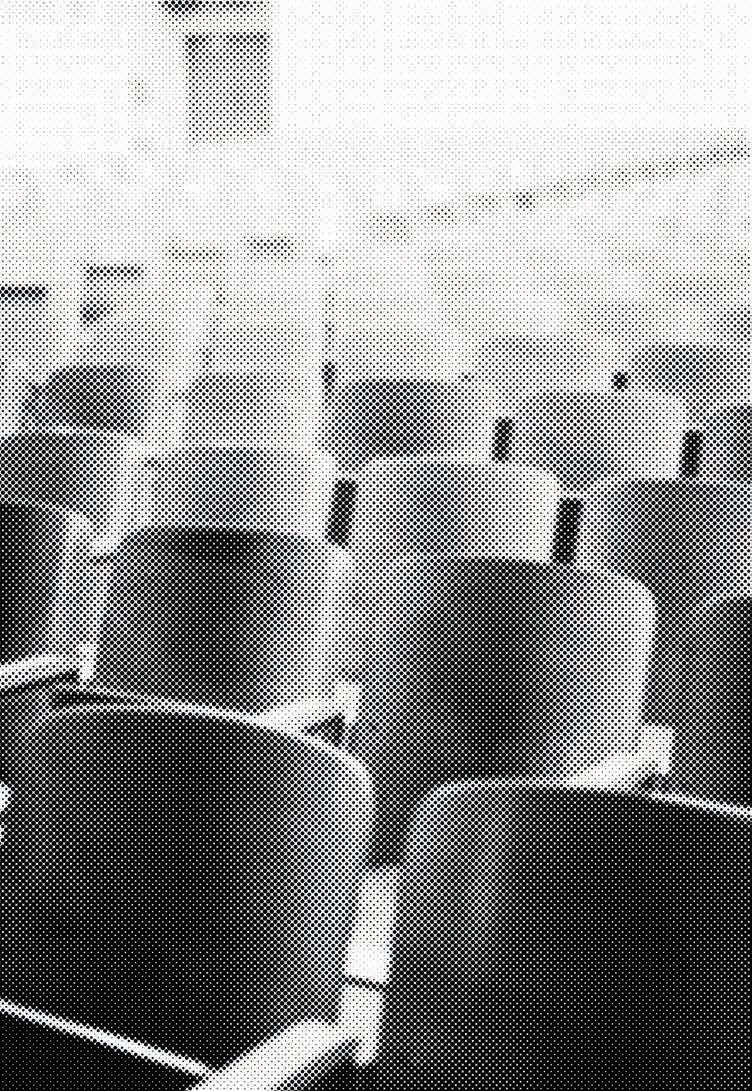

In their sweeping analysis of Hawaiʻi’s education system, “Culture and Educational Policy in Hawai‘i: The Silencing of Native Voices,” educators Maenette K.P. Benham and Ronald Heck explain public schools’ classist origins. Primarily attended by the children of immigrant workers and Native Hawaiians, public schools were structured to create a stable workforce for the plantations, rather than generate upward mobility for its students. Curriculum and instruction methods centered on low-level task performance and acquiescing to authority figures, producing cogs that could seamlessly fit into the machine of capitalism.
Strides in Hawai‘i’s public schools have been made since then, though the drudgery of learning exemplified by memorizing information from textbooks and standardized testing, remains the status quo. The innovation happening at Hawai‘i’s own public and charter schools (which are also public but have different leadership) remind us that it doesn’t have to be. Take The School for Examining Essential Questions of Sustainability charter school in Kaimukī, for example, or Castle High School’s Po‘okela Academy. Here, as reported in Flux’s School Spirit Issue, traditional classroom settings have been renounced in favor of innovative teaching methods. Ways of teaching once seen as radical are providing students with more accessible learning environments. Project-based learning— like learning geometry and physics through building a canoe or biology through tending to a field of taro—lets students apply their knowledge, helping them understand its implications in daily life.
The success lies in making education relatable to students. Today’s educators are experimenting with new ways of making learning accessible, weaving place-based or cultural learning into the curriculum. At Mālama Honua Charter School in Waimanālo, for example, students don’t receive report cards. Instead, they’re graded through assessments grounded in their culture, like the completion of a ho‘ike, or community presentation, at the school year’s end. It also prepares them for the 21st century workplace by instilling skills not learned in textbooks, like adaptability and self-accountability.
Innovations such as these has been a welltrodden path for Hawaiian language immersion schools, many of which have had to redefine the traditional school structure to fit their needs. The
project-based approach implemented by today’s nontraditional classrooms have been a routine method for Hawaiian immersion schools.
Despite public education’s exciting transformation in the past decade, deep-rooted issues still plague the system. In 2019, for a piece in Flux’s Nights Issue, I met Courtnie Tokuda, a preschool teacher working a restaurant graveyard shift just to afford the cost of living in Hawai‘i. “I have a master’s degree and 10 years of teaching experience, and still I take in more money per hour being a server than being a teacher,” she confessed to me. A year earlier, WalletHub ranked Hawai‘i as the worst teacher-friendly state with the lowest teacher pay. A record number of local educators are leaving for better prospects in other states, according to data from the DOE, and an increasing shortage of teachers has left a high percentage of Hawai‘i’s classrooms with unlicensed teachers. Corey Rosenlee, Hawai‘i State Teachers Association president, reported last year that over 1,000 Hawai‘i public classrooms were taught by unqualified teachers, educators who have not gone through State Approved Teacher Education Program.
Meanwhile, decades of distrust in public schools have forged a culture of elite flight to private schools favored by those with means. Even families without means routinely work two or three jobs to send their children to the same institutions. It’s created a perception that public schools will always be second best, no matter how much educators innovate or how successful students are.
The state’s public education system is a tangled web of history, culture, and politics. For this piece, I unknowingly jumped into a rabbit hole of test-score statistics, bureaucracy, and think pieces that were little more than glorified finger-pointing. At times, the solution seemed laughingly obvious to me. Raise teachers’ wages! Then, they won’t have to split their energy between educating Hawai‘i’s children and working a multiple jobs to survive, I thought, dusting my hands off and calling it a day. Or, change the school days’ start times! Who can remember the quadratic formula when they’re still wiping the sleep from their eyes? I know I couldn’t.
Then I realized that fixing public education isn’t just another short-response question. The options aren’t clearly laid out like a multiple choice. Like we were taught in school, the only way to a solution is to work through the problem. After all, the toughest questions always have the most rewarding results.
On Gender
EDITORIAL DIRECTOR TEXT BY MATTHEW DEKNEEF
Let’s start with applying for a drivers’ license in Hawai‘i.
Beginning on July 1, 2020, if you are an Aloha State resident, you’ll have the option of selecting “X” as your gender for your driver’s license or stateissued ID. That “X” designates a third gender option for individuals who identify as nonbinary, an umbrella term used to describe people who exist outside the exclusive binary of masculine or feminine gender. In that regard, the “X” also feels imbued with a kinetic attitude, its intersecting slashes symbolically cutting through a broadly assumed template for gender classification as an either/or: male or female.
So, as the saying goes, if “X” does mark the spot, then it aptly locates where we are when we talk about gender in 2020. These supposed limits of gender, which have been countered by new science and ageold indigenous concepts like fluidity, two spirit, and māhū. The crossing of this threshold is now made plain on everyday legal documents in a single letter.
That landscape is far different than the one we were in just 10 years ago. What may have felt like a two-lane road at the turn of 2010—one called male, the other female—has expanded into a wider highway with more lanes and fewer hard lines. More signage and onand off-ramps sprang up over the decade in vernacular that accelerated mainstream sex and gender discourse
in every direction, including “gender non-conforming,” “pangender,” “genderqueer,” and the singular “they,” the gender-neutral pronoun of choice for those who don’t subscribe to “he” or “she” and whose cultural place was further affirmed when it was chosen as Merriam Webster’s Word of the Year for 2019. (“Nonbinary” is merely a catch-all for this spectrum of descriptors.) Along the way, it has become clear that a new rubric is being written on gender—and I use the word rubric because for many, ourselves included, this past decade has felt like an education. For millennials and Generation Z, the baby boomer grasp of gender is calcifying and cracking. In 2017, 20 percent of millennials said they were something other than straight and cisgender, compared to 7 percent of boomers, according to a GLAAD survey conducted by Harris Poll. As these generations age and enter adulthood, engagement is a requirement.
On this more expansive you-doyou gender freeway, I imagine there are two types of drivers: the ones who consider this emerging lexicon helpful in guiding us along more safely in the public space (some even gladly waving others in to merge); the rest who view it as silly cultural vandalism, graffiti tags that pollute and impede everyday society. Flux, I think, has always been a willing and open-minded passenger inclined to acknowledge the enthusiasms of that first driver and the skepticisms of
the second. The tagline of the magazine when it debuted in 2010 can still double as its bumper sticker today: “Moving culture forward.”
One way a media platform does this? By mainstreaming words. Examining their usage and deciding if and how to adopt them is a deliberate editorial duty. In the past 10 years, Flux’s house style—an internal glossary used by a publication to standardize its grammar and punctuation, while also document conventions it deems acceptable for its readership on a range of subject matter— has evolved alongside its treatment involving gender. The corollary effect of this expanding vocabulary runs parallel to the way conventional masculinity and femininity, largely of cisgender subjects, have come under scrutiny since 2010, fueled by a national cultural shift toward equitable portrayals of men and women in media. Locally, Flux’s contributing writers Sonny Ganaden and Timothy A. Schuler have written introspective interrogations of their own relationships to masculinity and the broad failures of its stereotypes. When we look back on Flux’s previous forays into these topics, with three themed issues of Women and “Fellas” in the mid-2010s, we see ambitious attempts to cover terrain from a certain era that could look radically different if we revisited them in this new decade.
People who work closely with language are tasked to handle it in all its dimensionality. Words grant those of us outside a certain experience access to better understand another’s reality. Words also reaffirm identities and provide a
sense of belonging for those already on journeys of self-discovery. Writers and editors tend to sense this more than most, how a word can either limit or liberate. When I encounter these words and their flexibility, I’m impressed by their doubly technical and emotional brilliance, how they cast lingual avatars onto complex individuals. Adopting words to tell their stories with specificity and dignity feels less like marshalling them out of the margins into clearer view—their achievements in the arts and politics often accomplished that—and more like presenting the ways in which society ought to see them more completely. The culminating charge of becoming comfortable with a linguistic choice is also submitting to an ethical one. When the house bill providing a non-binary gender option for state IDs was signed into law in June 2019, it was passed alongside legislation that protects minors who identify as “X” and other gender identities and expressions from conversion therapy; it also dismisses the “gay panic” defense in court, in which those accused of murder or attempted murder would ask for reduced sentences by claiming mental distress caused by learning their victims’ gender identities or sexual orientations.These achievements didn’t transpire overnight, but emerged from a decade of dialectical call and response between activists, journalists, and allies; from those at the center of the conversation insisting on their identities and how to see them in all their humanity. Because you can’t help others negotiate their freedoms if you can’t identify who they are.
People who work closely with language are tasked to handle it in all its dimensionality. Words grant access to better understand another’s reality.



Mon–Sat 9:30am to 9pm Sun 10am to 7pm • 808.955.9517 • 1450 Ala Moana Blvd., Honolulu, HI 96814 • FREE WI-FI AlaMoanaCenter.com • Download the Ala Moana Center App from the App Store for iPhone MORE THAN 350 STORES, INCLUDING OVER 160 DINING OPTIONS ALOHA CONFECTIONERY • BLOOMINGDALE’S • BUFFALO WILD WINGS • CHUBBIES • FAMOUS FOOTWEAR • GUESS HEALTH KOREA • HOPE & HENRY • JOHN MASTERS ORGANICS • MACY’S • MAMA PHO • MORPHE • NEIMAN MARCUS NORDSTROM • PANDORA • SHOE PALACE • SWATCH • TARGET • UNIQLO • WILLIAMS-SONOMA • & MANY MORE
 The grain of a traditional surfboard in progress. Image by John Hook.
The grain of a traditional surfboard in progress. Image by John Hook.
LIVING WELL
“Hō a‘e ka ‘ike he‘enalu i ka hokua o ka ‘ale. Show your knowledge of surfing on the back of the wave. (Talking about one’s skills is not enough; let it be proven.)”—a Hawaiian proverb

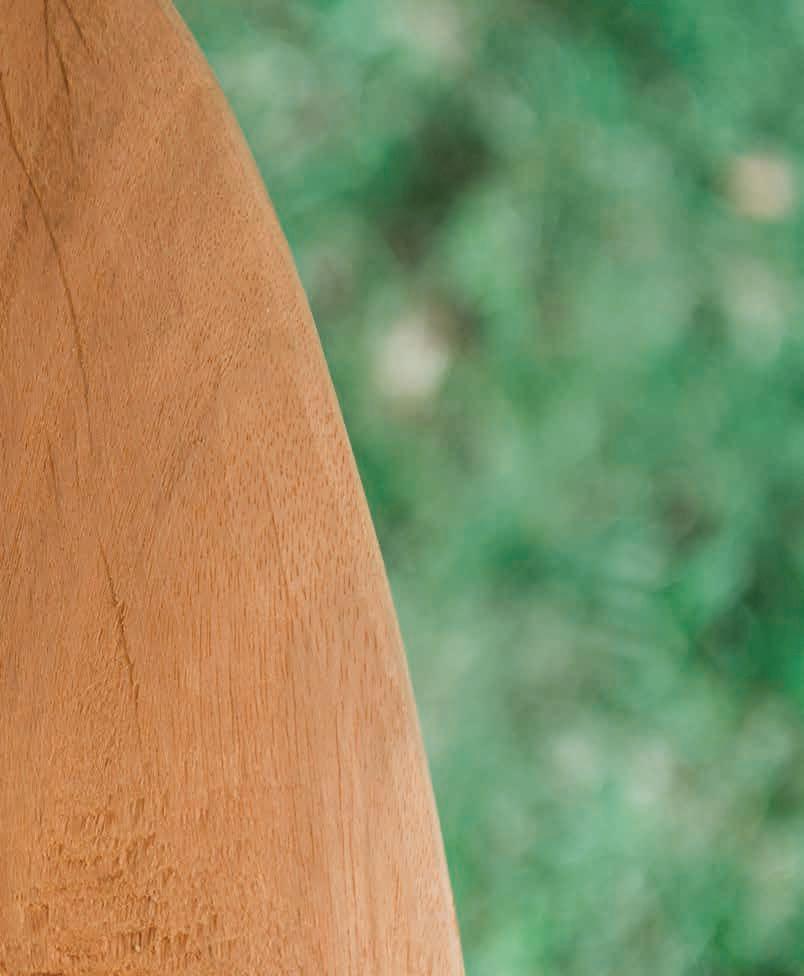
The Family Stone
A surfboard carver with a haunted past readies his teenage granddaughter to carry on the surfing traditions of their ancestors.
TEXT BY LEILANI MARIE LABONG
IMAGES BY JOHN HOOK
The morning is cool and gray and the ocean is pumping out swell after foamy swell. It’s mid-January and the conditions are a little messy in Waikīkī, but nevertheless, it makes an amusing playground for skilled surfers, even the two daring souls who showed up with heavy wooden surfboards hand carved by Native Hawaiian craftsman Tom “Pōhaku” Stone, whose self-given Hawaiian name also means “stone,” in the tradition of ancient papa he‘e nalu.
“Maybe we should surf the shore break instead?” suggests Tom, half-joking, to his granddaughter Savanna Stone. Just then, the 90-pound solidredwood board the former semi-pro surfer lugged onto the beach—a replica of a kīko‘o owned by late Hawaiian surf legend Duke Kahanamoku, complete with his blocky monogram—tips over and conks him on the head. Savanna, who is 16 years old and a professional surfer, chuckles as she ignores his notso-veiled plea, carefully maneuvering her 50-pound surfboard into the water. Paddling through the wave zone, she somehow makes navigating the kīko‘o—a slab of wiliwili around eight feet long with a flat deck and round bottom—appear no more difficult than her KT Surf Crusher, a fiberglass-covered, polyurethane slip of a thing.
In the Stone family, Savanna may be the next to continue the tradition of surfing and carving.
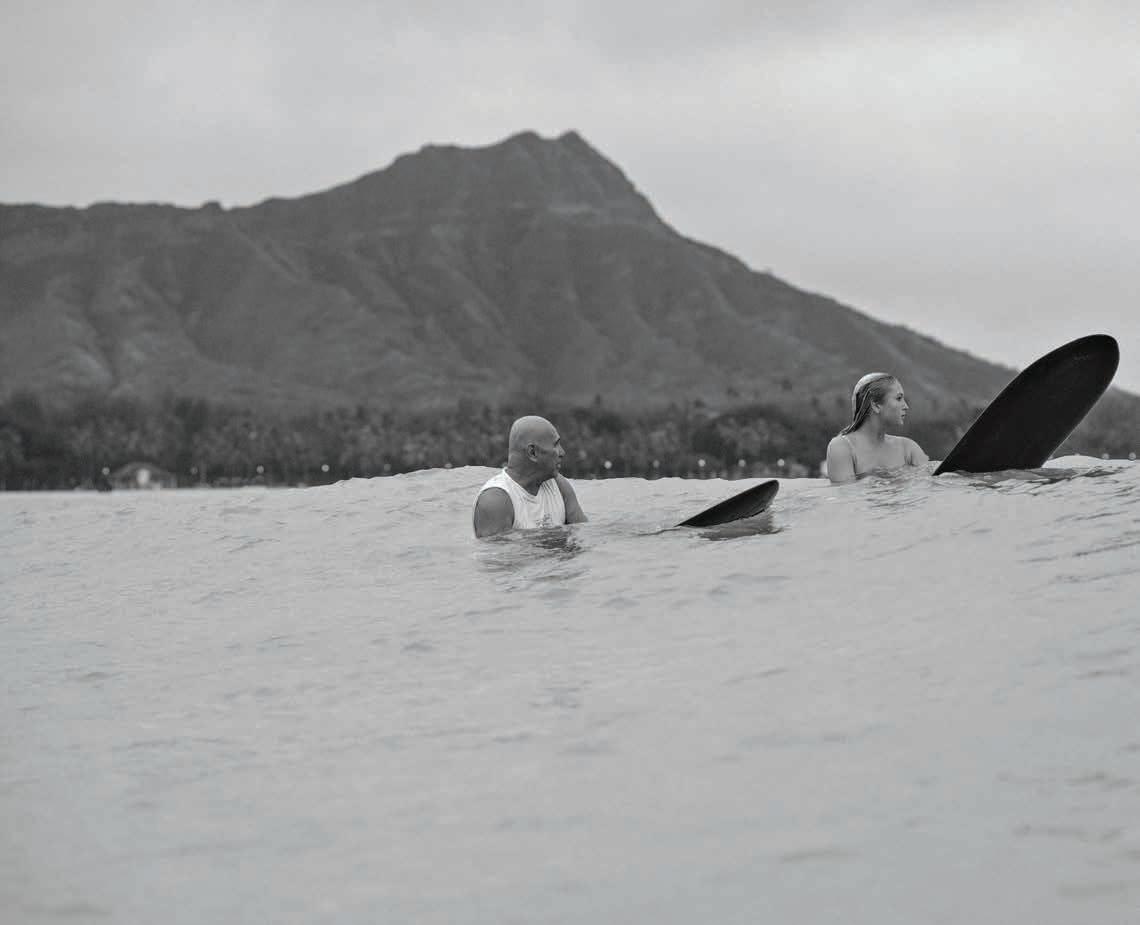
148 | FLUXHAWAII.COM LIVING WELL | SURFING |


149
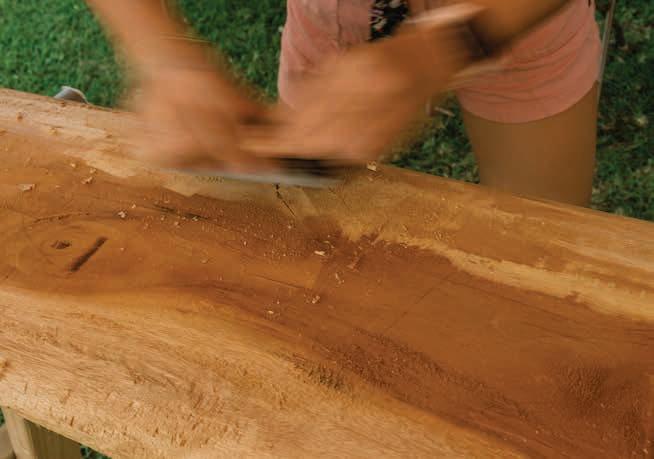
The kīko‘o that Savanna is riding is quite special, a modern family heirloom and one of the first wooden boards ever carved by her grandfather, the 68-year-old patriarch of a large oceangoing ‘ohana including pro windsurfers Josh and Harley Stone, her father and older brother, respectively. Not that any boards made in the shape of the 10 ancient Hawaiian surfcraft, including the nimble alaia (shortboard) and the more easygoing olo (longboard), could ever be ordinary, given their 800-year-old heritage that originated with the wooden planks Tahitian settlers brought to Hawai‘i in the 13th century.
Through documenting board shapes from surfing’s ancient history that were lost to time or replaced by more hydrodynamic shapes and materials in the 20th century, Tom more deeply connects new generations of surfers to the sport by riding waves like the ancestors. “The wooden boards look and feel so natural in the water,” Savanna says. “It’s like they’re meant to be there.”
Once a regular outing, these grandfathergranddaughter surf sessions have become more sporadic. Savanna, who lives in Waimānalo, has been busy with school and surf competitions, and her “Papa,” as she affectionately refers to Tom, is completing his doctoral dissertation on the ritualism of surfing at the University of Hawai‘i at Mānoa. But even an occasional dawn patrol for these two is more meaningful than most, since a family legacy is being shaped, one wave, one ride, one wipeout at a time. In the Stone family, Savanna may be the next to continue the tradition of surfing and carving. “It skipped a generation, but I’m teaching her like my dad taught me, out of his aloha,” Tom says.
As an aspiring surfer growing up in Kailua, Tom yearned, in the way that unrelenting 8-year-olds do, for an expensive, newfangled surfboard. His father, who made a modest living as a police officer, instead made him a wooden one, inspired by the boards of their Hawaiian ancestors.
With Tom’s guidance, Savanna is carving her own board, a kīoe made from an ‘ulu tree and blessed in a traditional ritual.
150 | FLUXHAWAII.COM

151
“He carved it every evening for a month,” Tom says. “I watched him do it, learning. But when it was finished, it wasn’t the thing I ultimately wanted—a modern surfboard. I told him I hated it. He was angry and probably hurt, so he broke the board and set it on fire.”
Atoning for that painful moment came decades later, after Tom eschewed a wayward lifestyle— including a circa-1970s stint smuggling cocaine from Hawai‘i to California in hollow surfboards— for a kuleana of cultural preservation through education. “As natives, that’s what we’re programmed to do,” says Tom, who taught Hawaiian studies at UH Mānoa and Kapi‘olani Community College.
“Otherwise, our traditions will just waste away in museums rather than live on.”
“The wooden boards look and feel so natural in the water,” Savanna says of traditional boards. “It’s like they’re meant to be there.”

152 | FLUXHAWAII.COM


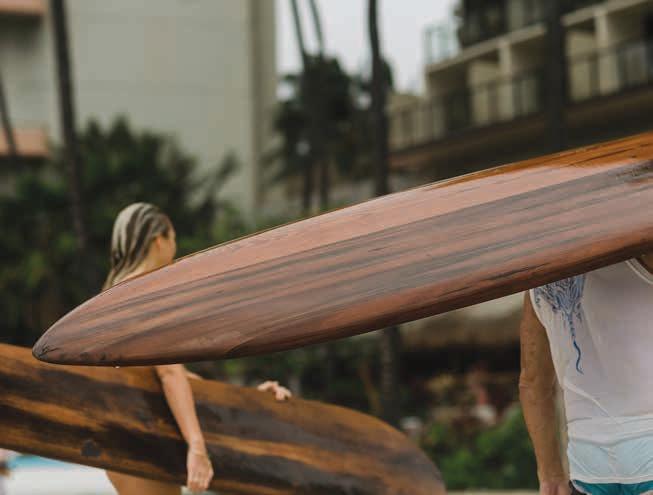
In 1993, Tom was compelled to carve his first board, also a kīko‘o made of wiliwili, an endemic lightweight wood. He buried the finished piece in a taro field to absorb the color and mana of the earth. It was a replica of his late father’s ill-fated work, and he made it from memory. “Many years later, I could still see it in my mind,” he says. By that time, his father was ailing, having suffered a couple of strokes and several heart attacks. “I took him down to the beach and showed him the board,” says Tom, tearyeyed. “What a moment that was.”
In the Waikīkī surf, Savanna is improving her skill on the kīko‘o, the third-ever board Tom carved. Heavy and finless (skegs weren’t invented until the 1930s), it nevertheless has incredible flotation, and the potential for a magical kind of glide that would make her feel one with the wave.
Alas, the kīko‘o is only on loan until she finishes carving her own wooden board, a kīoe made from an ‘ulu tree that was blessed in a traditional ritual. The kīoe has a slimmer profile than the kīko‘o, and Savanna has been carving its convex deck and bottom, pointy nose, and narrow tail for the better part of a year using a modern spoke shave from Home Depot and a block plane from 1907. “Once you get into a rhythm, it’s relaxing,” she says. “But you can’t zone out when there’s a blade involved.”
Learning to ride the kīoe might be a similarly calming and focused experience, one that would require more time in the water with her teacher. “I’m always trying to find the shortest route to the North Shore to surf,” she says. “But maybe I should be finding the shortest route to anywhere Papa is instead.”
In documenting onceforgotten board shapes, Tom is allowing a new generation of surfers to forge a deeper connection with the sport by riding waves like the ancestors.
154 | FLUXHAWAII.COM


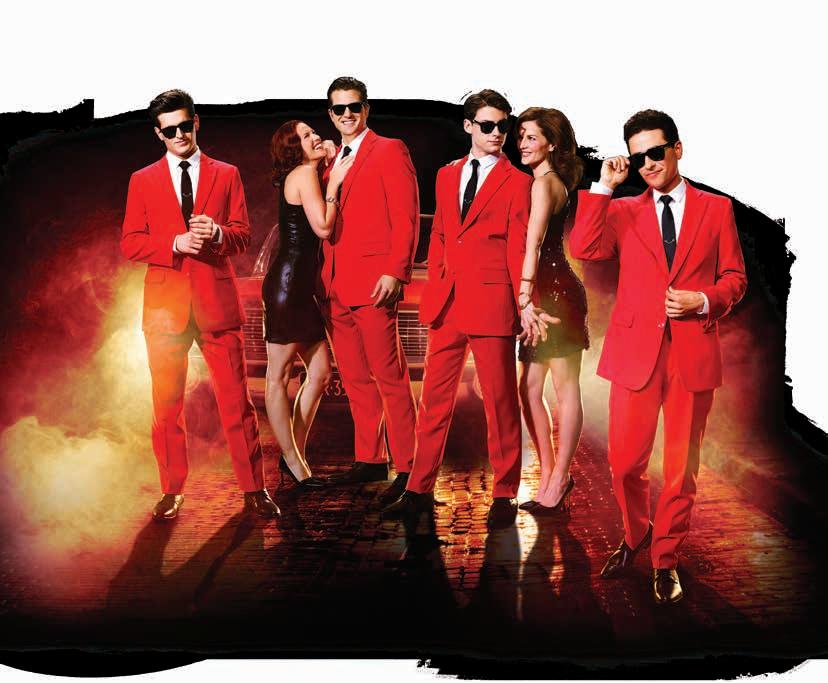

On Sale Now! May 5-17 The Blaisdell Center BroadwayInHawaii.com THE TONY® & GRAMMY® AWARD-WINNING BEST MUSICAL
A Lasting Sweetness
Local jam maker Etsuko Ono makes do with foraged fruits.
TEXT BY EUNICA ESCALANTE
IMAGES BY MICHELLE MISHINA

Today is jam day. In the kitchen, calamansi simmers in a 10-quart stock pot. Etsuko Ono, who flits around the room with Mary Poppins-like grace, bends over the stove, carefully stirring the mixture to keep it from sticking to the bottom. The smell of citrus and sugar clings to everything. She picks up a jar of cardamom and pops it open. “Time for my favorite part,” she says as she sprinkles a handful of seeds into the pot. Upon contact, a rich aroma blooms. The scent is warm and all-encompassing. Later, when the juices and pulps have thickened into a marmalade, Ono lets me have a taste. The strong tang of calamansi melds with the cardamom’s subtly spicy sweetness. It’s poetry in flavors.
Ono sees jam-making as an easy entry point for self-sufficiency.
156 | FLUXHAWAII.COM
LIVING WELL | PRESERVES |

157
A chalkboard hints at Ono’s other combinations: cranberry and orange, mango and lime, pine and liliko‘i, and liliko‘i butter. On the matter of liliko‘i, Ono invites me outside to help harvest. The front yard of her Hawai‘i Kai cottage is dedicated to fruits for her jams. There are yet-to-bloom Surinam cherry and lemon trees. Liliko‘i vines crawl along the fence, passionfruit dangling sumptuosly from their canopy. Strolling through her yard, Ono pauses constantly, softly exclaiming whenever she finds a fruit that has fallen on the ground. Soon, her arms are overflowing with produce ready to become jams, preserves, and confitures for her homemade jam company, Ohana Jam.
As we chat in her front yard, Ono points out three neighbors who regularly supply her with enough fruit for several weeks’ worth of jam; she sources most of her fruits from her or her neighbors’ yards. Other fruits are bought directly from growers via farmers markets, where Ono can also be found selling her jams. Occasionally, Ono will hike into the mountains to forage.
Foraging was how Ono got started with jam-making. Originally from Japan, she moved to Hawai‘i with her husband, Kyle Ono, in 1996. Kyle, a nature guide, took Etsuko on hikes throughout O‘ahu. She saw the abundance of fallen fruits scattered on the forest floor. “I thought it was such a waste,” she says. “There were these beautiful fruits that nobody was going to eat.” She gathered those fresh enough to eat and brought them home. She transitioned the hobby into a business after a successful pop-up at a 2011 fundraiser for Japan’s tsunami relief. Eventually, Etsuko left her job as a chief graphic designer for Clarence Lee Designs to pursue jam-making full-time.
For Etsuko Ono, preservation was a gut instinct cultivated from her childhood in Japan. She recalls memories of her family’s homesteading ways, storing fruits and
vegetables in their pickled or fermented forms. “I think it used to be like that in America too,” she says, chuckling softly before adding, “like Little House on the Prairie.”
Before there was industrialized food production, supermarket chains, and refrigeration, food preservation was a means of survival. Extending food’s shelf-life often required curing, pickling, fermenting, and jellying. It necessitated an intimate relationship with one’s food; a slowing and familiarizing. Some practices, like pickling and fermenting, are time extensive. “You need a lot of patience,” Ono says. Even her preferred method of jellying, one of the quicker preservation processes, requires at least half a day of production.
Today, crowd-favorite flavors like pineapple-liliko‘i and pink guava routinely sell out at her weekly stand at the Kaka‘ako Farmers Market. Despite the growing demand, Ono keeps her production in small batches. It’s partly because of manpower; she makes all of her jams by hand and on her own. But it’s also to ensure quality, ascribing to her own mantra of “making do with what we have.”
Self-sufficiency as a lifestyle has seen a resurgence in recent years, particularly among the environmentally conscious—a response to ecological damage caused by contemporary industries. A 2016 Penn State study, “The Resurgence of Homesteading,” documented the rise of a bucolic, back-to-land means of living, exhibited by a repopularizing of farmers markets, urban gardens, and artisan crafts like jam- and jelly-making.
For Ono, preservation is an easy entry point for other self-sufficient practices. “In Hawai‘i, we try to live the same way as people on the Mainland,” she says, “but we’re in the middle of the Pacific Ocean. We don’t have the same natural resources; we import everything. So, using the fruits in my yard or from the mountains makes sense to me.”
Ono utilizes donated and foraged fruits in her jams, transforming what would be wasted produce into a long-lasting sweetness.
158 | FLUXHAWAII.COM

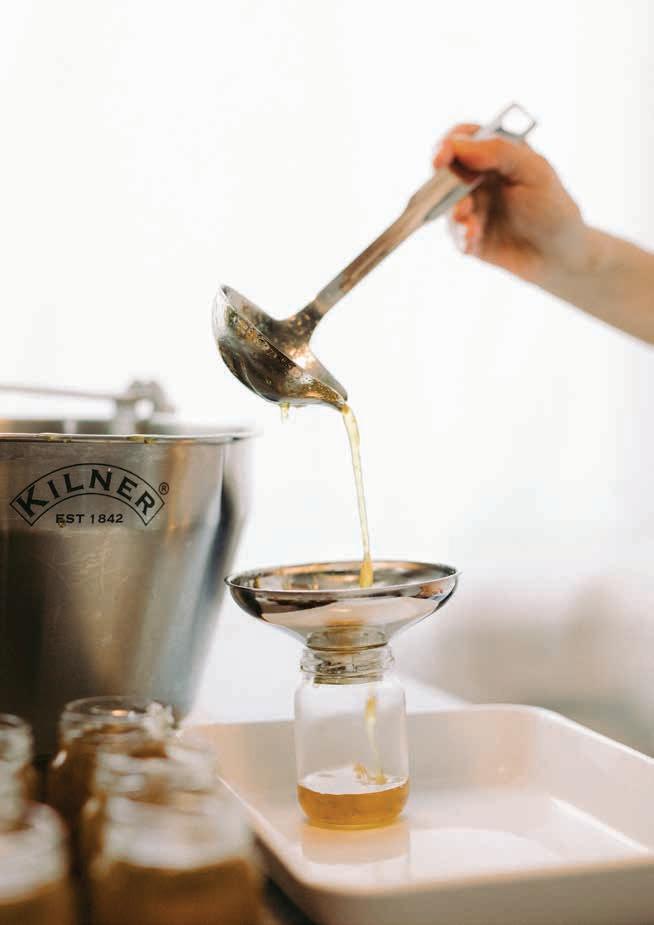
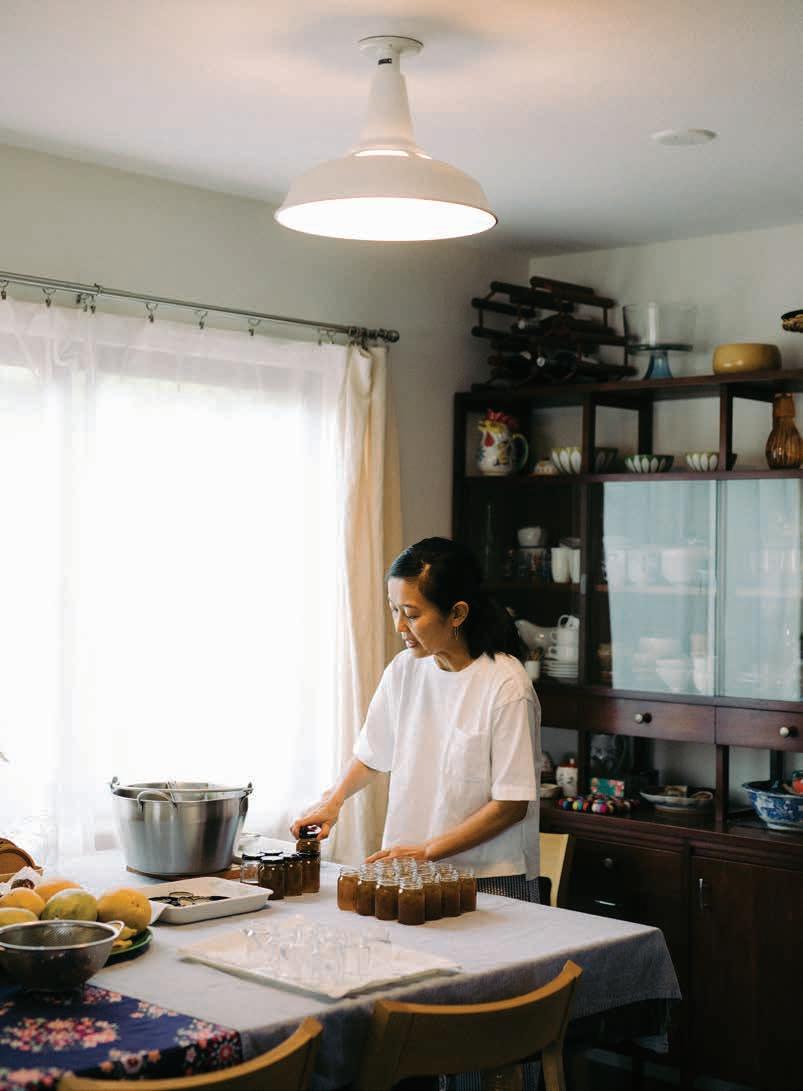
HOW TO MAKE JAM
Spring and summer is when most of Hawai‘i’s trees fruit, often yielding more produce than we know what to do with. Ono recommends preserving this bounty in jams and confitures, letting you enjoy their sweetness for months after.
1) Prepare fruit. Cut into large squares. For fruit with thick skins, separate the pulp. More fruit means more jam.
2) Combine fruit and sugar in a pot. Sugar needs to be about 40 to 60 percent of the weight of the fruit.
3) Cook at high heat until desired consistency is reached, stirring often to keep mixture from sticking to pot . Test for proper consistency by spreading a thin layer of it on a baking tray. Tilt the tray slightly. If jam does not run, then it is ready. Add lemon juice, spices, or liquor such as rum and brandy to give depth of flavor.
4) Pack in heat-proof glass jars. To prolong shelf life, place jars in boiling water for 10 to 12 minutes to sterilize before filling.

162 | FLUXHAWAII.COM


DA SHOP @dashophnl
FISHCAKE @fishcakehawaii
HOUND & QUAIL @houndandquail
HUNTER GATHERER @huntergathererkauai
KEALOPIKO @the_kealopikoshop
KONA FRAME SHOP @konaframeshop
MILO @milohawaii
MŌNO HAWAII @monohawaii
MORI ART & FLEA @mori_hawaii
THE PUBLIC PET @thepublicpet
OLIVE BOUTIQUE @olive_boutique
SALVAGE PUBLIC @salvagepublic
Our stories, in-store. Pick up a copy at any of these local locations. Find at your nearest store: fluxhawaii.com/stockists
 A hillside vantage of Kona. Image by Michelle Mishina.
A hillside vantage of Kona. Image by Michelle Mishina.
EXPLORE
“Our admiration of the antique is not admiration of the old, but of the natural.”
—Ralph Waldo Emerson


Checking In
At South Kona’s historic Manago Hotel, a fourth generation of management is stepping up to lead a regional landmark.
TEXT BY CAMERON MICULKA
IMAGES BY MICHELLE MISHINA

A gray-haired woman stands beside Māmalahoa Highway across from Manago Hotel at sunset, pivoting on her feet until she finds the perfect angle for a photo of the creamcolored exterior and its neat row of second-floor windows over corrugated metal awnings. Meanwhile, four visitors pause to look at antique bottles in the hotel window before entering the lobby, where manager Taryn Manago speaks to a couple of guests from behind the front desk. Minutes later, the vertical neon sign that rises from above the awning to the middle of the coffeetoned words “Manago Hotel” comes on, a glowing red, green, and blue beacon inviting everyone, whether they’ve crossed the road, island, or ocean, through the open doors.
The hotel’s quaint charm has withstood the test of time.
166 | FLUXHAWAII.COM
EXPLORE | KONA |

167
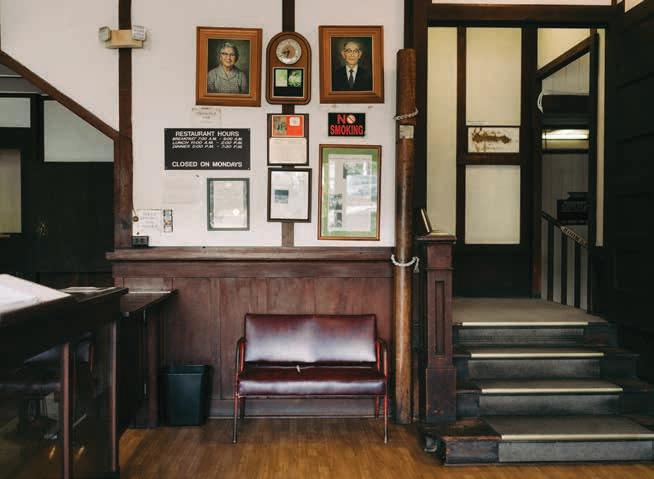
Taryn and her younger sister Britney Manago are the fourth generation to manage Manago Hotel, the hotel and restaurant that have become a South Kona landmark. Their great-grandparents, Kinzo and Osame Manago, started the business in 1917 with a $100 loan from the man who employed Kinzo and Osame. The couple bought and remodeled a house in Captain Cook, and began serving udon, bread, and coffee out of one of its two rooms. When taxi drivers dropped off passengers at the nearby Paris Hotel and returned to the restaurant looking for a place to stay, Osame responded by offering them futons for 50 cents to a dollar.
Those drivers became regular overnight guests, and the couple, sensing an opportunity, grew their business. Expansion and renovation in 1929 led to the building that stands today, and a three-story wing in the rear built in phases between 1959 and 1969 brought the total number of rooms to 64. The restaurant, a spacious area where
customers dine at wood and Formicatopped tables, is the oldest continuously running restaurant in the state, according to the family.
In the century since Kinzo and Osame started the operation, Manago Hotel has become a reminder for regulars of their childhoods, and a chance for guests to experience a place born of a couple’s desire to serve their neighbors. For Taryn and Britney, the hotel has always been home. Now in their 30s, the sisters are responsible for an institution with roots as deep as the region’s coffee trees. The two grew up playing in the hotel’s laundry room, running around in the gardens, and washing dishes. Britney recalls helping her grandfather Harold refill the candy case, count money, and refill the soda machine for a quarter each day. “It was our normal,” Taryn said of growing up at the hotel.
Inside the hotel, portraits of Kinzo and Osame face the entrance, greeting everyone who comes in. Between them hangs a clock
Founded in 1917 by Kinzo and Osame Manago, the business’ management is now in its fourth generation.
168 | FLUXHAWAII.COM

commemorating the 50th wedding anniversary of Taryn and Britney’s grandparents, Harold and Nancy Manago, the second generation to manage the hotel. After the attack on Pearl Harbor, Harold returned home and met his father on the sidewalk, where Kinzo told him he’d be taking over the hotel the next day. While he was away in the Army during the war, Nancy helped Kinzo and Osame manage the hotel. News clippings and photos from the island’s past also adorn the lobby’s walls. To the right of the entryway, a glass case holds Kinzo’s old cameras.
Beyond the front desk is the restaurant, where a letter-board sign on the wall lists the menu, including its famous pork chops. Not only do visiting guests eat here, but so do local residents who grew up coming with their families and return with their own kids in tow. For many of them, a meal here is something between ritual and tradition. Decades ago, it was farm workers capping off days of coffee-picking with a cup of sake. Today’s customers include young parents sharing an early breakfast with their children before school starts.
Dwight and Cheryl Manago, Taryn and Britney’s parents, managed the business for the past 36 years, and they worked to maintain that feeling of nostalgia and keep Manago Hotel a place where people feel comfortable and welcome. Too much change would risk alienating regulars, as Dwight learned when he returned to manage it in 1984 after working his way up from bar porter at O‘ahu’s then-Kahala Hilton to director of the food and beverage department at Hawai‘i Island’s Mauna Lani Bay Hotel. He came back with big plans to modernize the hotel, such as installing TVs and phones in the bedrooms. But regulars warned Dwight that if he changed things, they wouldn’t be his customers much longer.
From its classic decor to a timeless menu, including its fabled pork chops, Manago Hotel often feels frozen in time.
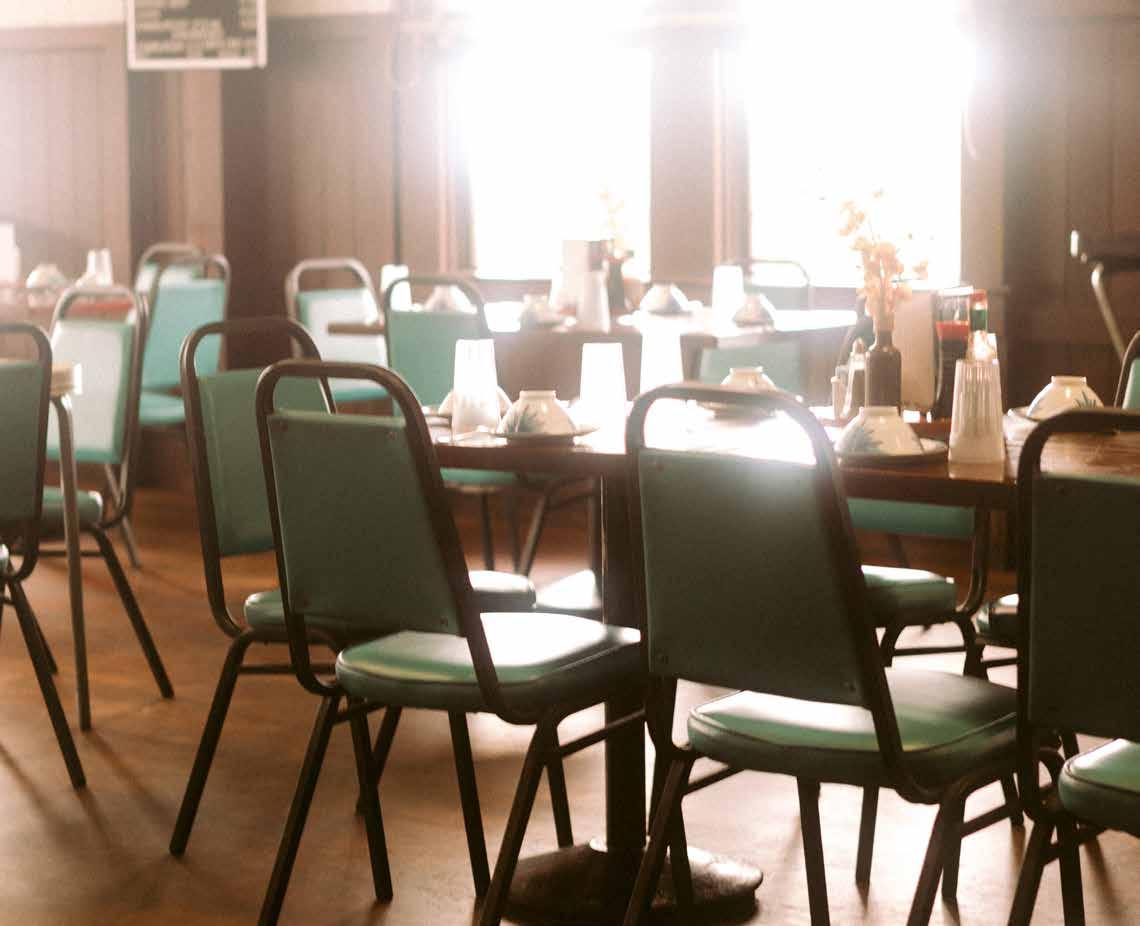
170 | FLUXHAWAII.COM



Since Taryn’s return from O‘ahu, where she studied and worked in the restaurant industry, and Britney’s return from California, where she studied and worked in the hotel industry, they have made small changes, like getting the property onto third-party booking websites (though the reservation system itself is still handwritten). The sisters aren’t eager to make change for the sake of change, given that much of what’s around them is older than they are. Just to the right of Kinzo’s portrait, for example, stands a wooden post from the Japanese room at the first hotel where the founding couple first offered refuge to passing travelers.
“This is my childhood,” Britney said. “This is how we grew up, and I like it the way it is. I don’t see the purpose of changing something if it works the way it works.”
“That’s the reason people come back, is to see it the same,” Taryn added.
Guests can still walk among the gardens with its rows of potted plants and look forward to a pork chop dinner. The Japanese room Harold Manago built for his mother still welcomes guests—it’s so popular that some will even re-book it a year in advance upon checking out—with tatami mats, shoji screens, and futon with a furo in the bathroom. And televisions are still absent from the bedrooms. Instead, there is a single set in a designated room across from the front desk.
Also constant has been each generation’s commitment to the business and its customers. Dwight’s mother, for example, worked seven days a week, rising at 4:30 a.m., and at times staying until 9 p.m. Sometimes the farthest she’d get from the hotel in a month, he remembers, was the front sidewalk.
“I think earlier in life we made a lot of sacrifice,” Dwight said. “My wife had to
Though the hotel is usually bustling with locals and visitors alike, serene spaces can still be found.
172 | FLUXHAWAII.COM

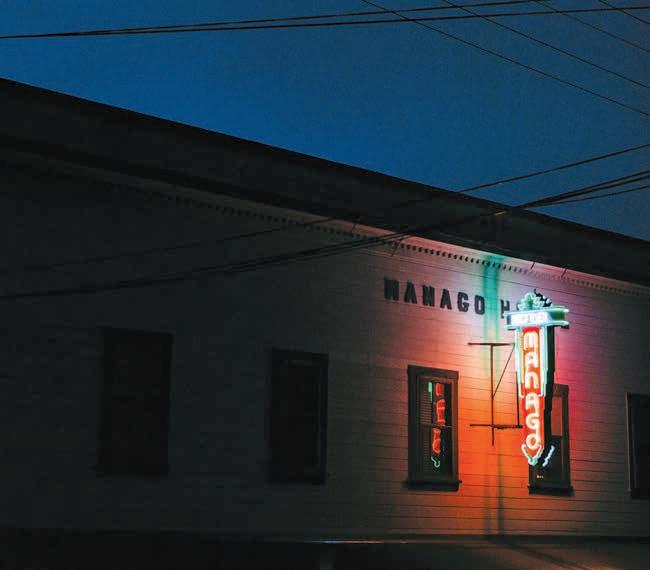
make a lot of sacrifice; our employees made a lot of sacrifice also. And that’s the reason we’re where it is today also. But would I have changed anything going back? I would probably say very few things, because I don’t regret anything that I’ve done.”
Taryn and Britney are recognizing more and more of their grandfather in their father these days, from the tasks he’s been taking on since they took over to the way he interacts with customers. “He won’t admit it, but everyone sees it,” Britney said with a laugh.
As dusk approaches, a middle-aged couple in the TV room holds hands during the final segment of CBS Weekend News and then switches to KHON2’s evening broadcast. As they do, a woman enters the hotel, leading by the hand an older
woman wearing a floral dress and pāpale lauhala, the two followed closely by a man in an aloha shirt. They pass a photograph from 1920 of Honoka‘a plantation workers in suits, one of them sitting on a Crane Simplex Model 5 automobile parked in front of the original hotel.
By now, dinner service is well underway. The woman in the pāpale lauhala and her companions are the first to arrive at a table set for 12. Nine other tables are already full. Many here are regulars, whom staff thank by name before they exit into the South Kona night. Others are here for the first time, their eyes scanning the menu on the wall as a server approaches with a bowl of rice and sides. In all likelihood, some will be regulars soon enough.
174 | FLUXHAWAII.COM
The vertical neon sign of the hotel welcomes all, whether they’ve crossed the road, island, or ocean.

ALWAYS STRESS FREE WHEN YOU P.A.C. IT cameronbrooksart.com HNL NON-STOP LAX B747-400 All Cargo Ships Six Days/Week Next Day Service VIP Pet Service Oversize Items From Aston Martins and Outsize Cartons, to Polo Ponies and Man’s Best Friend. PACIFICAIRCARGO.COM 808-834-7977
From Le Marais, With L’amour
TEXT BY ROLAND LONGSTREET
IMAGES BY AJA TOSCANO
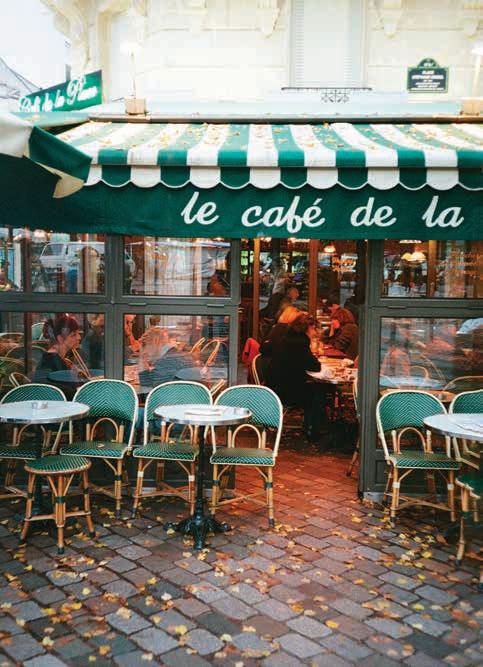
“The creation of the world did not occur at the beginning of time, it occurs every day.”
— MARCEL PROUST, IN SEARCH OF LOST TIME, “THE FUGITIVE”
Upon stepping out of the taxi in the Le Marais district of Paris with our suitcases, my head is swiveling. My two eyes aren’t enough to take in the visual splendor all around. How can I worry about the location of our Airbnb if I’m gawking at the streetlamps? The buildings are no higher than three or four stories, with chic cafés on the bottom and balconies along the upper floor furnished with verdure and patio furniture that beckons you to come up for a glass. The
Paris is the epicenter of a pulsing, thriving organism.
176 | FLUXHAWAII.COM
EXPLORE | PARIS |

177
district dates back to the 13th century, with many of the buildings having been erected in the 1500s and 1600s, and it is known for having been a favorite of aristocrats.
Ralph Waldo Emerson wrote, in an essay on history, “Our admiration of the antique is not admiration of the old, but of the natural.” There is a sense of historical richness in the doorknobs you touch, the cobblestones you trip over, in Paris. The businesses occupying the spaces may be modern, but the façades and architecture are testament to a distant era when people handwrote letters and checked their pocket watches; an era when people depended upon craftsmanship, and treasured it enough to construct a city that still captures the wonderment of the world.
The only plans we have cover our lodging and a long list of art museums, leaving us to connect the dots by foot and metro. We walk an average of 10 miles a day, which allows us to absorb and feel a great deal of our surroundings. The more
The city is charged with the fantastic richness of times past.

178 | FLUXHAWAII.COM









Beach Bar, Ono Eats, Tailgating Polo Matches (2-5pm) Live Music (5:30-7pm) MATCHES & MUSIC EVERY SUNDAY APRIL 12 TH THRU SEPTEMBER 6 TH To buy tickets or for more information, visit HAWAIIPOLO.COM HAWAII POLO CLUB, CELEBRATING SPORT & COMMUNITY OCEANFRONT IN MOKULEIA - 56 YEARS STRONG T-RX ENTERTAINMENT, LLC POSTER ARTWORK BY: RYAN BRANT NORTH SHORE OCEANFRONT FIELD Honolulu Club 932 Ward Avenue Honolulu, HI 96814 808 585 9626 Members enjoy 65,000 square feet of fitness excellence with the latest equipment, personal training, studio pilates, racquet sports, wellequipped locker rooms, over 100 fitness classes to choose from every week, outdoor pool deck, a therapeutic spa, an in-house bar and dining room and much more. Visit HonoluluClub.com for more information and to start your complimentary trial. NOW OPEN Introducing our brand new indoor climbing wall on our 5th floor gym level.
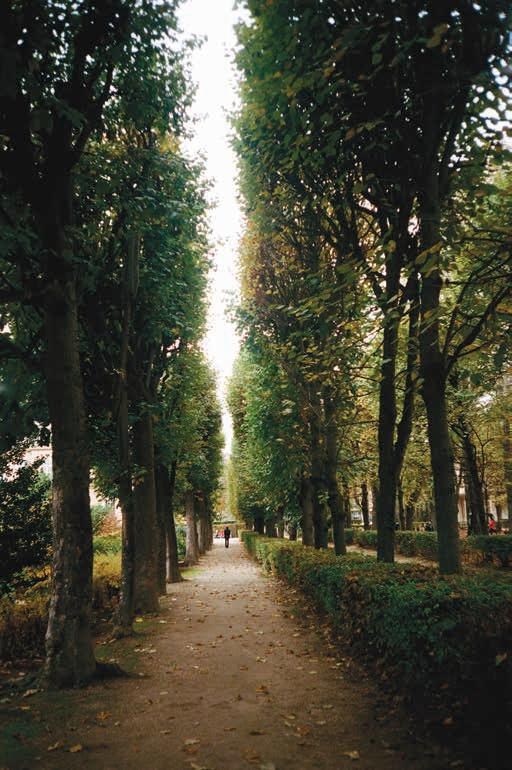
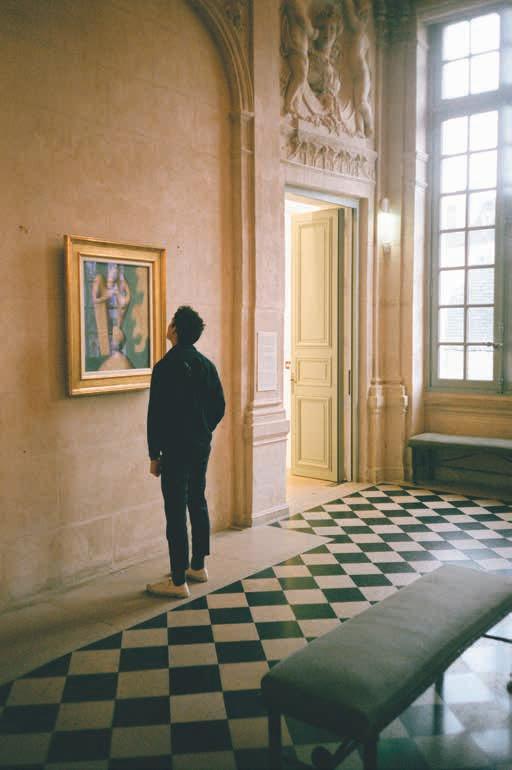

we walk around, the more I begin to realize the animating spirit woven into the fabric of the city. Passersby are supplied a healthy choice of places to ponder their musings: innumerable cafés with beautiful design and ample outdoor seating; rows of stands selling obscure books, magazine cuttings, and vintage scientific prints. Visitors meander with maps, speaking tongues of far-off lands. Walking along the Seine, we hear an accordion playing, a timeless sound, as if the mortal body was compelled to hear this music by an eternal spirit one era after the next. It is a melody that captures the imagination and transports one into a certain future, where a grand cathedral will sound its bells at the top of the hour, and the pigeons will startle and take flight. Where at night, if it rains, the lights from the street lamps will reflect distorted shapes onto the stones of the sidewalk. Where you
will hear a double bass, a guitar, and a violin conversing in fluent Parisian jazz over the crowds, past the outdoor seating and into the street. This is the epicenter of a pulsing, thriving organism.
In Paris, history reveals itself not as the cold, bland artifact I studied in school but as a testament to the power of now. The city is charged with the fantastic richness of times past and the enticing mystery of pressing forward into the unknown. Every sense is attuned with my surroundings: the wind on my skin, the sun making me sweat, and the moon with all its cheese. The skies are blue, the stars are bright, though neither bluer nor brighter than they are at another moment. The things we make today will be looked at with nostalgia by the reminiscers of tomorrow. They will see what we’ve done and wonder at how beautiful it must have been to be alive in that time.
There is a historical richness found throughout Paris, also lovingly called La Ville Lumière. The businesses occupying the spaces may be modern, but the façades and architecture are testament to another era.
182 | FLUXHAWAII.COM



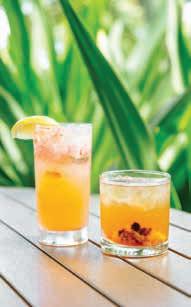
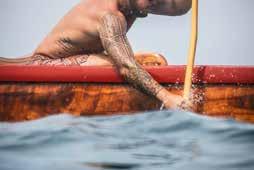

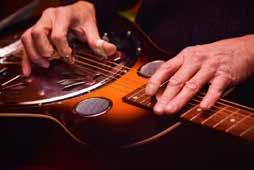

Experience bistro-style comfort food for a healthy lifestyle.
(Left) Dragon Berry Lemonday, (Right) Old School Fashioned
Located in Kailua Beach 808 262 4359 Kailua Town 808 262 3354 Kapolei 808 674 1700 Visit us on social media and at kalapawaimarket.com. We pride ourselves on craftsmanship and quality local ingredients. Kona Historical Society is a 501(c)(3) nonprofit and Smithsonian affiliate dedicated to collecting, preserving and sharing the rich history of the Kona districts. Kona Field System The Many Voices of the Steel Guitar APR 29 MAY 27 For venue information, visit konahistorical.org or call (808) 323-3222 Heart of the Wa’a MAR 25 Hanohano ‘O Kona: Wahi Pana Lecture Series FreeEvents LAST WEDNESDAYS 5:30 - 7:00PM
Dragon Berry Lemonade; Fire-roasted Golden BBQ Sauce Double-cut Pork Chop; Auction Fresh Fish (lemongrass risotto); New York Steak.
Making Due
A writer shares the mental hurdles that artists of all stripes go through in order to create.
TEXT BY NATALIE SCHACK
ILLUSTRATION BY NIKKI OKA
Someone once told me that creativity extends far beyond conventional forms of art. Our ability to create can include determining the course of our day, our life, our destiny. It can mean speaking; producing sounds that together have power and meaning. It can mean loving or hating.
Exciting, isn’t it? That you have the power to create something that wasn’t there before, the power to make something you dreamed up in your head a reality. A painting! A cake! A story! Your physical location in one hour—it could be (almost!) anywhere! An almost infinite ability to produce, constrained only by a few measly factors, one of which is, forever, time.
And, what is it about time that both frightens and comforts the creator? Is it the scarcity? The abundance?
For me, my creativity manifests in currymaking. It’s in the stories my husband and I tell each other about imagined assassins lurking in sushi restaurant bathrooms. It’s in the constant adjusting I make in my trajectory of who I am and who I want to be. It’s in writing.
There is, quite often, a deep ownership between a person and their creations, which opens up a cellar door to fear: fear of imperfection, fear of failure, fear of not being good enough. Cue procrastination, that beast not to be mistaken for distraction, laziness, or forgetfulness. These are all procrastination’s brothers, human conditions alike but different from him. Procrastination is that irrational, haunting specter; it is having hours and space to do a thing, to write a piece—and still, yet, just not.
Is it a fear of time that results in that irrational freeze, like a deer in headlights? Are you unable to start the imaginary timer that begins the project because in your frightened head, you can’t fail at the project until you start?
Of course, that’s not true. Tick, tick, tick.
To create, to birth, is a painful process. Part of that is accepting that not everything you create will be beautiful, that you are made up of much more messiness than you are of perfection. That you can beget incompetency, the unacceptable, the banal. That not all creation looks like art.
The greatest gift with writing, and with life, is knowing that you have a chance to try again tomorrow. That you can tear down the scaffolds. That you can do that oh-so-divine word: edit. You are not flawless every second, and your creations are not masterpieces every time. Procrastination is your shadow-self telling you that you cannot have anything other than perfection, every time. That you don’t have tomorrow.
That’s a lie. There’s time to fail. There’s time to be gentle with yourself. There’s time to make art. If we have the courage to face our failures and start the clock up again, there’s always time to be better.

| A HUI HOU | 184 | FLUXHAWAII.COM
IN THE SEAT OF A STRANGER’S CAR presents Available Now at select bookstores & boutiques The acclaimed debut novel
by
Claim your copy at: intheseatofastrangerscar.com & remember: Always tip the valet
Beau Flemister





















 WAIKELE
HYATT REGENCY WAIKIKI
ALA MOANA CENTER
KOKO MARINA
WINDWARD MALL
WAIKELE
HYATT REGENCY WAIKIKI
ALA MOANA CENTER
KOKO MARINA
WINDWARD MALL





































































 Christine Hitt
Christine Hitt

 Cameron Miculka
Cameron Miculka
 Michelle
Michelle


 The Maui sky through a steel sculpture by artist Tom Sewell. Image by Michelle Mishina.
The Maui sky through a steel sculpture by artist Tom Sewell. Image by Michelle Mishina.














 Stepping into the sugar mill’s rusting mechanical belly, Sewell marveled at the beauty in its brutality.
Stepping into the sugar mill’s rusting mechanical belly, Sewell marveled at the beauty in its brutality.











 TEXT BY LAUREN MCNALLY
IMAGES BY JOHN HOOK
FLUX FEATURE
TEXT BY LAUREN MCNALLY
IMAGES BY JOHN HOOK
FLUX FEATURE












 First discovered at Kamilo Beach in 2006, plastiglomerates are plasticrock hybrids formed when molten plastic fuses with natural sediment.
First discovered at Kamilo Beach in 2006, plastiglomerates are plasticrock hybrids formed when molten plastic fuses with natural sediment.














 Puamana
Puamana
 Fukumitsu ‘Ohana
Fukumitsu ‘Ohana
 Brandon and Kiki
Brandon and Kiki
 McDiarmid ‘Ohana
McDiarmid ‘Ohana
 Amelia and Brandon
Amelia and Brandon
 Reanna
Reanna








 “Pipeline”
“Pipeline”
 “Chuns Reef” (cropped)
“Chuns Reef” (cropped)
 “Bowls”
“Bowls”
 “Tracks”
“Tracks”








 The grain of a traditional surfboard in progress. Image by John Hook.
The grain of a traditional surfboard in progress. Image by John Hook.




















 A hillside vantage of Kona. Image by Michelle Mishina.
A hillside vantage of Kona. Image by Michelle Mishina.


































